Yunnan Travel Guide
Yunnan facts, cities in yunnan.
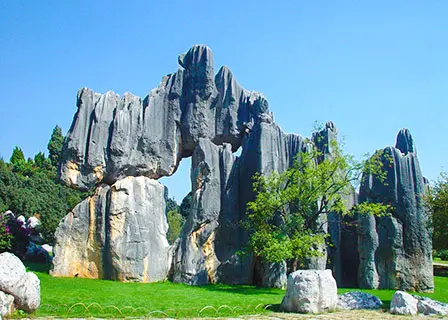
- Attractions
- Transportation
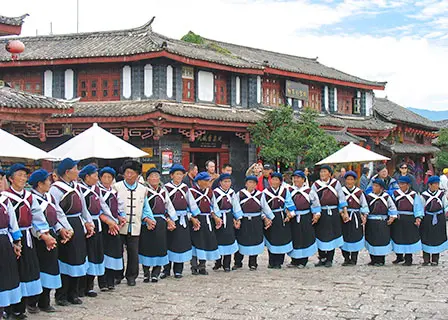
- Lijiang Tours
- Xishuangbanna

Famous Attractions
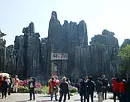
Yunnan Introduction

How Many Days to Spend in Yunnan?
It is suggested to spend at least 4 days for a brief Yunnan tour itinerary. Any two cities of Kunming, Dali, Lijiang or Shangri-La can be covered. If you prefer to include all four popular cities, then an 8-day tour is needed. For photography enthusiasts, Yuanyang Rice Terraces in Jianshui could be a good choice.
How to Get There and Travel Around?
The best and fastest way to Yunnan is by flight. There are direct flights from Beijing, Shanghai, Xi'an, Hong Kong or Chengdu to hot cities in Yunnan, such as Kunming, Dali or Lijiang. It takes no more than 4 hours single trip. You may even fly from Shanghai, Chengdu or Xi'an to Shangri-la directly. Also it is convenient for traveling within Yunnan by flight. Another choice traveling to or within Yunnan is by high speed train. Daily trains are scheduled from Beijing, Shanghai, Chengdu, Xi'an and other cities of China. It needs 6 to 12 hours to reach Kunming.
You May Like
Yunnan tours.
- China Tours
- Custom Tours
- China Attractions
- China Hotels
- Indochina Tour
- Canton Fair 2024
- Thanks for arranging our wonderful 28 day holiday to China in September. The blend of your arrangements and the few customised stops that we added with extra days, worked very well for us. All the agents did a good job and we thank them all. -- From Mr. Jones, Oct. 9, 2013
- Indeed we thoroughly enjoyed our trip to China and came back with very fond and delightful memories of the trip. We were very impressed with the quality of service provided by China Tour Guide. With military precision your English speaking Tour Guides and private car drivers were aavailable at each and every airport and cruise embark and disembark points, holding our names in their hands. They helped us at the airports by getting us boarding cards and at tourist sites by organising tickets etc. -- From Ms. Kirpalani, Sept. 14, 2013
- >>Read More Reviews
Yunnan Maps
Yunnan province map, yunnan travel map.
Recommended Yunnan Classic Tours
- 3 Days Essence of Lijiang Tour from $272
- 7 Days Tiger Leaping Gorge Hiking Tour with Extension to Shangri-la from $664
- 5 Days Kunming - Lijiang Discovery Tour from $446
- 8 Days Kunming - Dali - Lijiang – Shangri-la Highlights Tour from $846
- 7 Days Dreamland of Shangri-la Expedition from $899
Recommended China Tours with Yunnan
- CTG-40 : 10 Days Beautiful Landscape of Southwest China Tour from $1744 ( Hongkong - Kunming - Dali - Lijiang - Shangri-La (Zhongdian) )
- CTG-25: 16 Days Amazing Minority and Majestic Scenery Tour from $1670 ( Kunming - Dali - Lijiang - Zhongdian - Kunming - Guiyang - Kaili - Zhaoxing - Sanjiang - Longsheng - Guilin - Yangshuo )
Maps of Yunnan
Detailed map of yunnan china.
A map with the must-see traveling destinations in Yunnan , China.

Source: https://www.cielyunnan.com/carte-du-yunnan/
Located in southwest China, Yunnan Province is the country’s 6th largest province, with an area of 394,000 km2 (the equivalent of 3/4 of France, and the total of Germany). The 7% land of Yunnan is cultivated land, forest with 40%, and the territory is covered at 94% by mountains. In the center and east Yunnan (such as Kunming , Shilin , Luoping , and Puzhehei ), these are high karst plateaus with eroded peaks.
The northwest ( Dali , Lijiang , and Shangri-La ) is a region of high mountains, austere and wild. The more northerly region (Deqin) which borders on Tibet, culminates at more than 5000 m of altitude.
To the southeast is the Red River Valley, home to the most beautiful rice fields in China .
In the far south lies the Xishuangbanna , a tropical region that preserves China’s most important forests.
Three large rivers from Tibet cross Yunnan: t he Yangtze , t he Mekong , and the Nujiang (Salouen) , and created the splendid “The Wonder of Three Parallel Rivers”.
Yunnan Tourist Map

Source: https://www.cielyunnan.com/carte-du-yunnan/
Kunming Map
Kunming subway map.

Map Image Source: Ciel Yunnan
Other Practical Information
Registration Details
When to go to yunnan, yunnan food, budget and cash, tip in china, yunnan hotels.
YUNNAN TRAVEL WITH LOCAL AGENCY

CONTACT INFO Address : 488 Huancheng Dong Road, Kunming , Yunnan, China Telephone: ++ 86 (871) 63 58 94 66 Mobile: + 86 – 13 888 233011 Email: [email protected]

REVIEWS TRIPADVISOR

ABOUT US | YUNNAN TOURS | PRIVACY POLICY | CONTACT US
Travel to Yunnan – A Complete Guide to The South Western Province
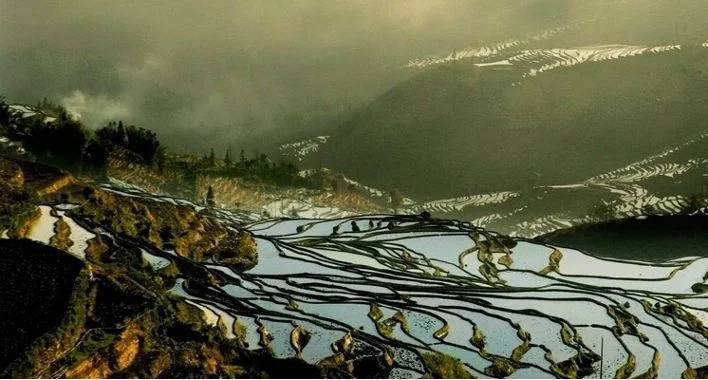
This article is a travel guide to Yunnan Province, in the South West of China. It was written by Harley Greenberg, who works with a local travel agency (WindhorseTour) in China.
Travel to Yunnan – Index
Yunnan basic travel facts.
- Possible itineraries
- The Stone Forest near Kunming
- Dali Ancient Town
Lijiang Ancient Town
- Yuanyang Rice Terraces
Frequently asked questions
Yunnan Province is famous for its diverse scenery and for being home of a third of all China’s ethnic minorities. It has lots to offer any traveler!
A trip to Yunnan province realistically takes at least one week. However, if you want to cover all the highlights I encourage you to spend twelve days or longer.
A trip to Yunnan is a breathtaking view of some of the most spectacular and overwhelming scenery within China. You can watch the sun rise and set on the magnificent Yuan Yang rice terraces; escape the crowds and enjoy the days exploring the less visited Lugu Lake, or get lost among the canals and cobbled lanes of Lijiang ancient town or Dali Cang Mountain.
Yunnan’s climate is diverse as its terrain, for many places such as Dali there is an ideal temperature – an eternal spring – that attracts tourists all year-round. The northwestern region around Shangri-la is situated on the Tibetan plateau and can be very cold during winter.
I find the best time and also peak season for traveling Yunnan is from April to October, when the vegetation is a lush green and flowers are in bloom.
Yunnan can be easily accessed by air, bus and trains from most cities across China. Kunming, the capital, is served by all Chinese airlines and has daily flights to most cities.
Other popular attractions such as Lijiang, Dali and Shangri-la also have airports with connecting flights offered from Kunming and other major cities in China. Another option is to take the train – or the bus – that goes from Kunming to Lijiang (via Dali).
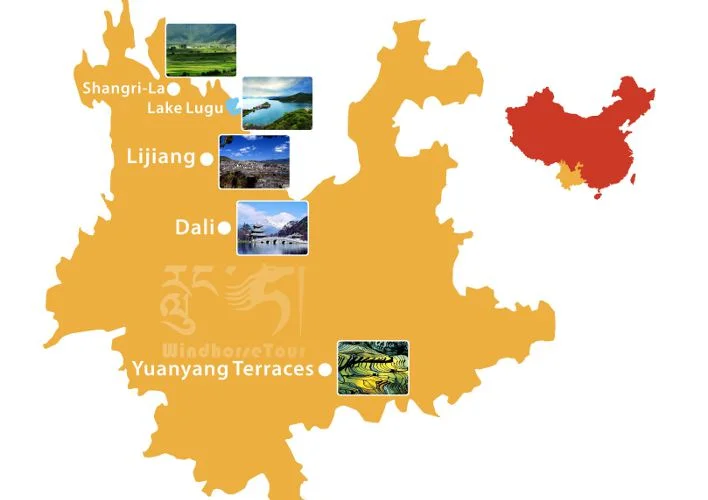
Itineraries
Here some possible itinerary to visit Yunnan Province:
- Kunming – Stone Forest – Dali – Lijiang – Shangri-La and then back to Kunming or up to Sichuan.
- Kunming – Stone Forest – Dali – Lijiang -Lugu Lake and then back to Lijiang or up to Sichuan.
- Kunming – Yuan Yang and then back to Kunming, East to Guanxi Chinese Province or South to Vietnam.
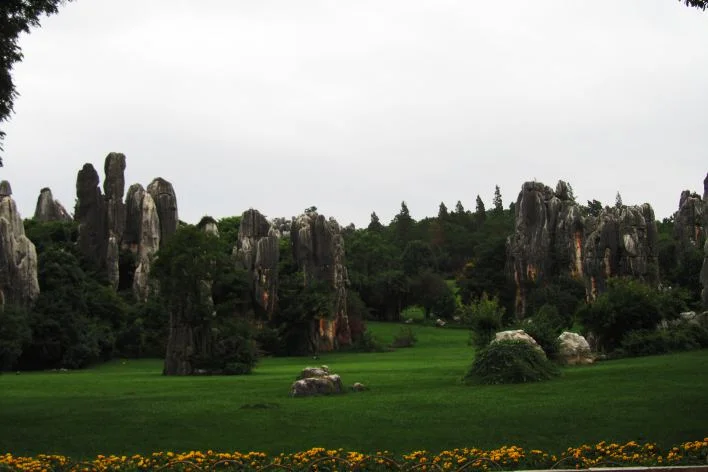
The Stone Forest
The Stone Forest (or Shilin, in Mandarin) is a beautiful park composed by limestone formations.
You can get there by private car, taxi or taking the bus that leaves from Kunming every hour (the trip takes about ninety minutes). The Stone Forest is quite popular, especially among Chinese tourists. This means that most days by nine am it will be jam packed, this is one reason why clients that visit the forest tend to don’t recommend it. However when asked if they are glad they went the answer is “yes”. So there you have it.
A hint on how best to enjoy the Stone Forest is to travel there with an agency that brings you early on or head to Lunan – the near by town – the night before so you can wake up early and visit it before the buses from Kunming start to arrive (normally around nine am). For more info you can read this story published here on the site longtime ago.
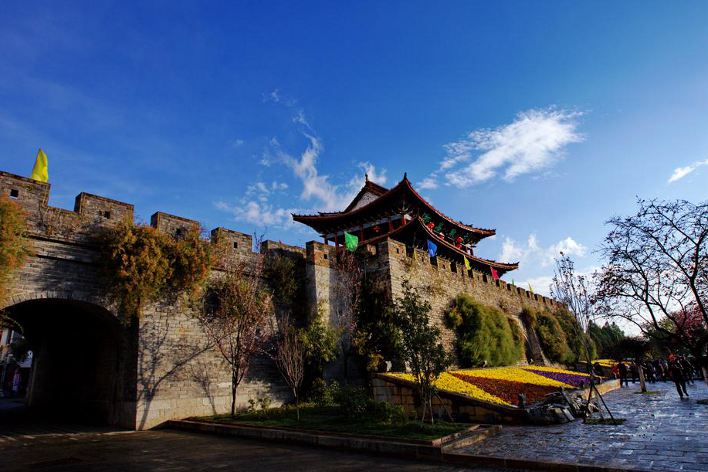
Dali Ancient City
Dali is one of those few places in China with an infectious ambiance, an environment that seem to attract many Chinese backpackers. Don’t be surprised when you find some of them sitting around strumming their guitars and telling tales of their travels.
With over 2,000 years of history, Dali shares a glorious past of being the former capital of the Nanzhao Kingdom, a powerful entity separate from China. It lies on the western edge of Erhai Lake at an altitude of 1,900 m (6,234 ft.), with a backdrop of the imposing 4,000 m (13,123 ft.) tall Jade Green Mountain (Cang Shan in Chinese). You can climb it using the stairs but be careful to do not lose yourself.
Flights are probably the most popular transportation to get to Dali. You can also choose an overnight sleeper train from Kunming or take a bus, always from Kunming, that will take around four hours.
Within the heart of Dali still lives the ancient city that retains a historical atmosphere that is hard to come by in other parts of China.
A short distance northwest from the old town stand the Three Pagodas (you can walk till there). Like 3 guardians this landmark is a definite “can’t miss” attraction in the city. The tallest of the three has 16 tiers, reaching 72 m. (234 ft.), and was originally constructed in the 9th century.
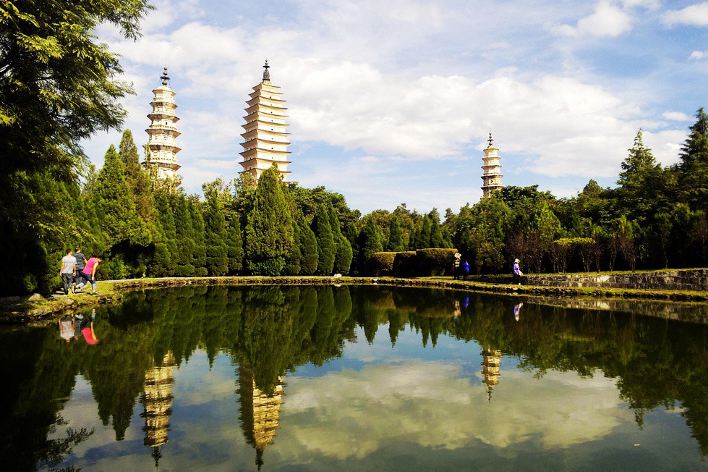
The countryside around Dali can also be dazzling, with small fascinating temples, and the occasional village showcasing exquisite traditional local architecture.
A good start is to visit the Zhonghe Temple. You can climb the paths that snake their way up and see the marvelous views of Erhai Lake.
Other way to explore Erhai Lake is by either renting a bike or zipping across the water on the many ferries that crisscross the lake. Roads now encircled the lake so it is possible to do a loop of the lake by mountain bike. There are some small villages dotted along the way for you to buy food and water.
24 km. (15 mi.) north of Dali, the old town of Xizhou is a must-see to extend your cultural trip in Dali. Much of the original Bai architecture is well preserved. Here you will witness the local courtyards with children play, chickens squawk, dogs fight, and all the rhythms of family life play out.
When the night falls, find a bar at the Foreigner’s Street, sit back with foaming cappuccinos and banana pancakes, there is another singer telling his stories in Dali.
Click here to read SDC’s hotel recommendation in Dali .

In the foothills of Qinghai-Tibet Plateau lies Lijiang, a splendid little town that is home to the Naxi people. Filled with a maze of cobbled stone streets, rickety old wooden buildings and gushing canals makes it one of the most visited sites in northern Yunnan. Here you will find the stunning Jade Dragon Snow Mountain that presents a splendid backdrop viewable from across Lijiang.
Beyond Jade Dragon Snow Mountain lies one of the most popular backpackers destination in Yunnan, Tiger Leaping Gorge. Most travelers will spend two days hiking within Tiger Leaping Gorge.
Lijiang can be easily accessible by air, bus and trains from Kunming and other big cities in China.
A visit here requires at least two days to take a glimpse of the highlights this town has to offer. However, I would suggest you arrange a local guide either local or along with a private tour. This will help your to better understand the rich culture of the region and history of the nearby Baisha and Shuhe Villages.
Here the most popular attractions in Lijiang:
- Dayan ancient Town: It is one of the main draws for people coming to Lijiang. The whole town is crisscrossed by canals, bridges and a maze of narrow streets. Dayan is full of traditional Naxi architectures that still today fills the town. As you walk through the narrow street you will observe the many wooden doors that are left open to reveal the interiors of both Naxi and Western restaurants.
- Black Dragon Pool: As you head towards the north you will reach the Black Dragon Pool. One of the most popular vantage points of Jade Dragon Snow Mountain.
- Dongba Culture Museum: If you fancy museums stop and visit the Dongba Culture Museum dedicated to the Shamanistic Dongba religion.
Jade Dragon Snow Mountain : A visit to the Jade Dragon Snow Mountain is a must-do in Lijiang. 34 km. (21 mi.) north of Lijiang, this mighty mountain rises raggedly above the ancient town. The mountain’s summit soars to 5,596 m. (18,354 ft.), encrusted with snow and set against a sharp, blue sky.
Located at 4,506 m (14,784 ft.), Cloud Fir Meadow is the highest point you can ascend to at Jade Dragon Snow Mountain. The walkways provided to help protect the environment lead you to some awesome glacier views.
Be warned that the elevation here can make some people feel uncomfortable. Mind your health and tell your guide immediately if you start feeling queasy.
Tiger Leaping Gorge : For further exploration in Lijiang, head over to Tiger Leaping Gorge. A hike here is a “can’t miss” experience of Northern Yunnan.
The gorge is considered one of the deepest in the world. With Jade Dragon Snow Mountain in the back, the Jinsha River flowing through the gorge and later swelling into the Yangtze River it offers a dramatic and thrilling journey to travelers.
The nightlife in the ancient town is lively! Chinese people believe this is one town filled with romance. Also, there are many bars and western cafes in the old town. With a cold beer in your hand and exotic music in the air, it offers you a great place to experience the Lijiang nightlife and perhaps find your true love.
Click here to read SDC’s hotel recommendation in Lijiang .
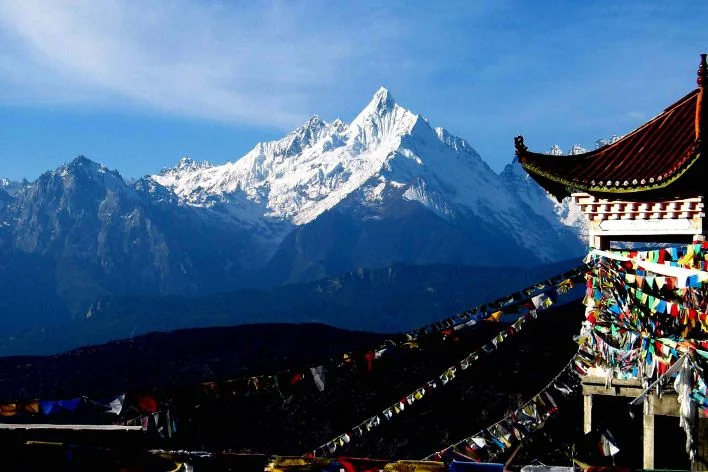
Traveling along the northern route of Yunnan, Shangri-la is the last stop for most travelers . It is home to several remote temples, rugged scenery and is the start of the Tibetan world.
Originally called Zhongdian, this place has attracted travelers since it was declared the location described on the novel The Lost Horizon written by the British writer James Hilton .
While we cannot confirm or deny James Hilton intention, the real Shangri-la exists today. The real scenery you will witness here is awe-inspiring, and the people are some of the warmest heartiest in the world.
If you cannot make a Tibet tour , Shangri-la is a pretty popular runner up to get a taste of Tibetan cultures. However, I would still suggest a trip into western Sichuan if you are craving Tibetan culture and cannot travel into the Tibet Autonomous Regional.
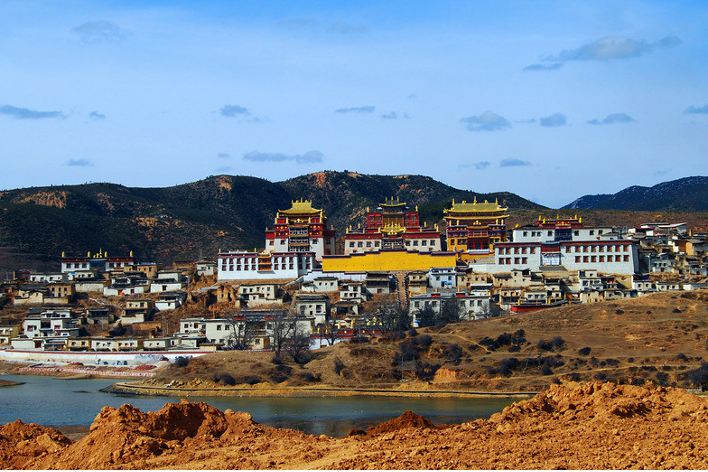
Within Shangri-la there are Tibetan towns, named Gyeltang or Gyalthang, where you can experience the daily life of Tibetan people.
About an hour’s walk north of the town is the Ganden Sumtseling Gompa. One of the main reasons people to come here is to see the little Potala Palace. This monastery was built based on the layout of the Potala Palace in Lhasa, and is home to countless Tibetan Buddhist treasures.
The view of town from the top of Ganden Sumtseling is gorgeous. A sunset from here is particularly picturesque among the tinkling bells and fluttering prayer flags.
Shangri-la is a wonderful place to get off the beaten track.
I encourage you to spend some time trekking or horse riding to explore the surrounding areas. There are many less visited monasteries and villages.
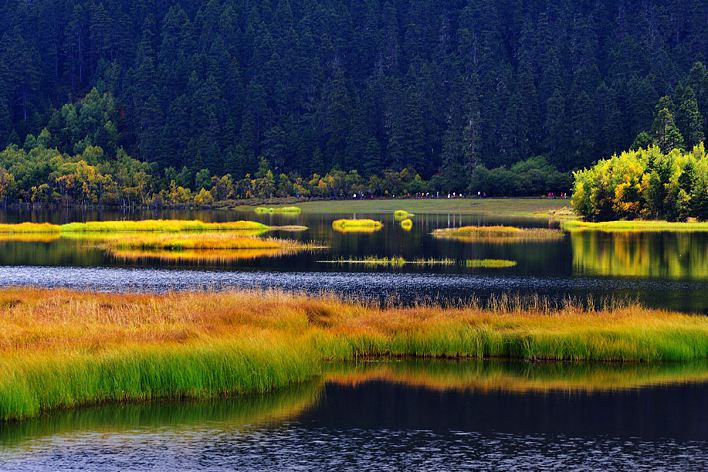
There is a severe lack of reliable public transportation in these remote areas, so be prepared to hire a local driver for a couple of days or consider organizing a private tour with a local guide who will share with you the intricate details of her culture.
When visiting in Shangri-la, I suggest you spend a day at Pudacuo National Park, which is composed by two beautiful lakes, Bita Hai and Shudu Lake.
Fed by small streams from the snow mountains encircled, Bita Hai Lake resembles a trumpet shell. The picturesque scenery of the pure green water with snow mountains and trees reflecting in it will offer you a great photography chance. The Shudu lake is home to lush plants and various wild animals.
Shangri-la is also popular for being the “backdoor” access to Yunnan Province from Sichuan (the main and easier route being the train Chengdu-Kunming). Be aware that for enter (or exit) Yunnan from Shangri-la you’ll have to travel by bus through the Tibetan Plateau, which isn’t always opened to foreigners and it may take up to two days.
SDC’s cheap hostel recommendation in Shangri-la: Shangri-La Lamtin Youth Hostel .
SDC’s hotel recommendation in Gyalthang (it’s not that cheap but it’s were I slept and it’s awesome, check the pics of the bedrooms!): Shangri-la Gyalthang Dzong Hotel .
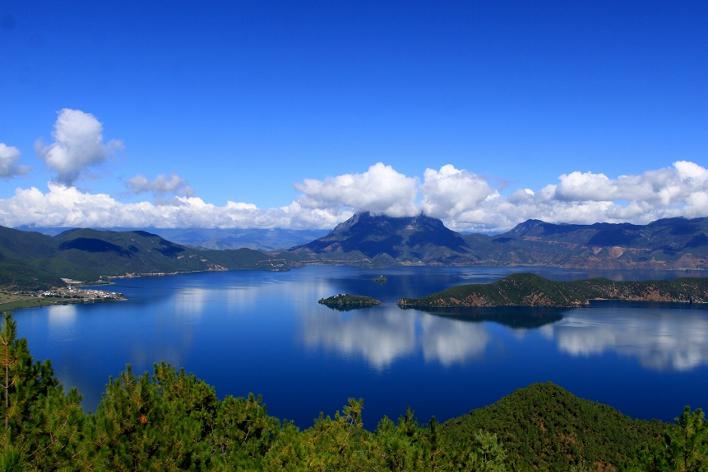
This forest lined lake overlaps the remote border between Yunnan – Sichuan provinces . It is home to several Tibetan, Yi as well as Mosuo minority villages.
The stunning scenery and ethnic cultures are two main features that attracts thousands of visitors.
A visit to the Lugu usually can be started from Luoshui. The lake, was formed by two sinking faults, and this high alpine lake sits 2,685 m. (8,809 ft.). Most people say it is shaped like a horse’s hoof – long from north to south, and narrower from East to West.
The lake which is surrounded by hills is filled with inviting clear water, that makes it easy to see the fish swimming within. The forest that protects the lake if full of dense trees and fresh mountain.
Lugu Lake is a place that has not been disturbed by the other economic developments and pollution; its’ natural beauty has been retained.
The weather is pleasant – it is cool in summer and warm in winter.
From Luoshui you can visit several islands on the lake by dugout canoe: Liwubi Island is the largest island where you can practically wade across to a spit of land in Sichuan; Heiwawu Island is in the center and has a variety of birds living on it; the smallest is Nixi Island, an oblong rock covered with shrubs and moss.
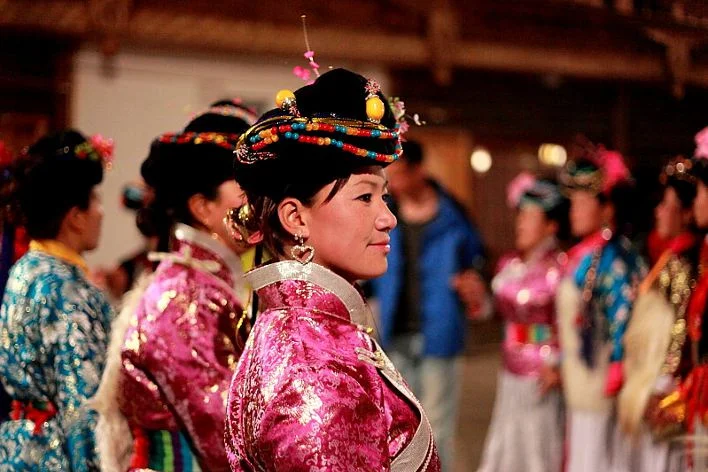
One of the main reason Lugu Lake has maintained its’ mystery and charm is because the Mosuo people who live here. The Mosuo are the last practicing (almost) matriarchal society in the world .
Mosuo women never marry and never cohabit, instead they are free to choose as many lovers as they like throughout their lives.
Children are brought up by women, and use the surname of their mothers. Families are composed of the members of the matrilineal kind. Women hold the principal positions in the society, forming a modern day ‘woman’s kingdom’, which adds mystique to this magical place.
The best time to visit Lugu Lake are April to May, and September to October, when the weather is dry and mild.
In order to reach Lugu Lake you’ll have to take a bus or private minibus from Lijiang (it should take around seven hours to arrive here).
p.s. You can enter Sichuan also through Lugu Lake. You’ll have to take a bus till Xichang (the trip takes about seven hours) and then a train till Chengdu (you may want to stop at Emei Shan, one o the holy Buddhist mountains and Leshan, where you can admire the biggest statue of Buddha in the world).
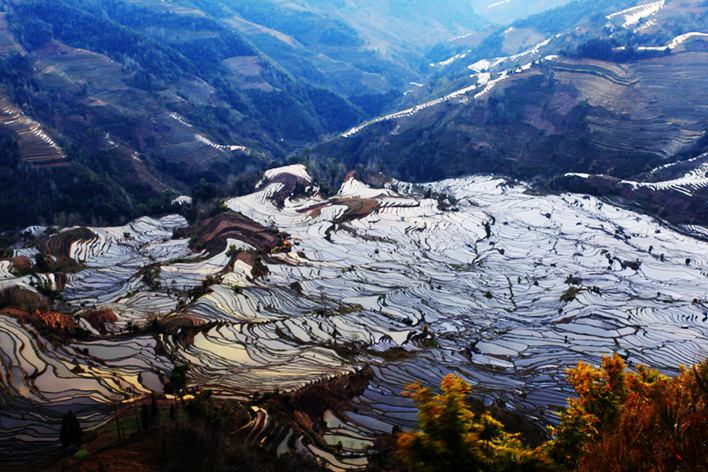
Yuan Yang Rice Terraces
Yunnan is a destination that is never lacking of natural beauty. However the last place I want to recommend to you is famous for its spectacular man made sights.
The famed rice terraces are slopes claimed from nature for cultivation in these hilly and mountainous areas. Some are hundreds or even thousands of years old.
Yuan Yang, located in the south of Yunnan, is one of the two most popular places to capture this unique sight in China. Fashioned over hundreds of years by the ancient Hani people, Yuan Yang Rice terraces cover roughly 125 sq. km. (48 sq. mi.).
A proper trip to the rice terraces can be done in two days when driving from Kunming. For those willing to spend more time a three days visit offers a chance to explore deeper into the local culture.
The scenery here is amazing and each year Yuan Yang attracts numerous photographers who flock here to capture the spectacular sunrise and sunsets that convert the terraces into pools of gold, red and silver.
Even in poor weather the views can still be breathtaking! When the fog rolls into the terraced valleys leaving only the hilltop village visible, the effect is dramatic. Many describe it as islands floating in the clouds.
Xinjie is the traditional starting point near Yuan Yang to reach the rice terraces. It is the recommended place to start any trip.
The terraces around each of the dozens of villages that you will find here have their own special characteristics which vary from season to season. Having a local guide helps to determine which terrace matches with your interest and helps to find the best ones given the time of year you visit.
To help you plan your trip, here are several popular photography places within Yuan Yang Rice Terraces:
- Duoyishu, about 25 km. (16 mi.) from Xinjie, has the most spectacular sunrises and is one you should not miss.
- Bada and Laohuzui are two of the best places to capture the sunsets. The scenery can be mesmerizing.
- Longshupa Scenic Spot is famous for its closest views of the terraces, while Mengpin is splendid for the bird’s eye view of the terraces.
Besides these landscapes, the unique mushroom-shape Hani houses and Hani costumes are also great for photography.
The rice harvest will traditionally occurs in early September and the fields will remain dry till December when flooded again. The fields are then again filled with water in December.
I advise you to plan your trips from January to March, when the seas of clouds above the terraces are most likely to be witnessed. In early spring according to the Chinese lunar calendar (from late February to March), the terraces are filled with wild flowers, including pink peach blossom and white pear blossom.
Yuan Yang lies on the Tropic of Cancer, so the climate is neither extremely hot nor cold.
However, it is cooler in morning and evening, and the sun is very strong at noon. So pay attention to the sun and wear proper protection. Moreover, T-shirts and shorts can be worn all year round, but you are advised to take a jacket.
In addition to capturing the picturesque scenery, exploring the unique Hani ethnic cultures at the surrounding villages is also an interesting experience not to miss. Participate in a local country fair, during which the entire minority people dress in colorful ethnic costumes, you will find it is very lively.
p.s. Here you find all you need to know to book your hotel (or hostel) in China .
Also, bring some sunblock and sunglasses as the sun is strong. You should also try to buy a hat or a cap beforehand or when arriving. Preferably, you should also buy medicine which prevents high-altitude disease and also oxygen, if you’re to ascend the mountains.
Photo Credits: Photos by Harley Greenberg
About The Author
Harley Greenberg
Related posts.

The Stone Forest and the legend of Ashima

From Lijiang to Lugu Lake: Chronicle of a Hectic Trip

Gubeikou: Hiking on the Wild Great Wall
23 thoughts on “travel to yunnan – a complete guide to the south western province”.
Thanks so much for sharing. 🙂 zinbeauty
This website is great, thank you! I’m planning to visit Yunnan this summer. I’ve read info on the Chinese Embassy in my country about Covid-19 policies, and it says that one should refer to the dispositions given by the local authorities. I’ve tried to find out whether in Yunnan some rules still apply, but I couldn’t find anything – I can’t speak Mandarin *that* well. Do you know something about this issue? Where should I seek info?
As far as I know at the moment, there aren’t any restrictions and it’s unlikely that the situation will change this summer. However, here in China the situation can change really fast.
I have never been in Yunnan before, but spent quite some time in south east Asia. It is different word, but those are the places in my opinion worth visiting. Culture, people, way of living and the way of thinking if you want. It is great you not only visited Yunnan, but also described you journey in details here. Thank you!
Yunnan is an incredible place and culturally close to Southeast Asia
Yunnan is an extremely beautiful destination to visit also Yunnan is full of natural beauty. Next month, gonna plan to visit here. This travel guide is full of useful travel information. Thanks for sharing this informative post. Keep sharing the good work ahead……Bookmarked for the future read. If you are planning to visit Morocco, Visit us here. We are best hotels in Marrakech, Morocco
Visiting Yunnan is probably the part of my Asia trip Im the most excited about! It just seems as if there are so many beautiful places :) Im planning to visit Feilai si in Deqin, you have any tips for doing so? The mountains there seem absolutely incredible!
Hello Niclas,
the only tip I can give you for a specific spot is the following: sometimes in Yunnan is difficult to find public transportation for short trips. In this case the best way is to rent a car with a driver for a day (usually is not expensive). You can ask to your hotel reception to help you finding a driver, it shall not be too difficult
Hi. My husband and I are thinking of going to Yunnan from September 30th until October 4th. We are thinking of just going to one place so we are not rushing on one place to another. Which one would you recommend? Our choices are Dali, Shangri La and Lijiang.
Probably Dali is the best choice. Lijiang is too crowded and Shangri-La had a big fire on 2014 so I don’t know if it’s still a beautiful place to visit
Are night buses between Kunming and Yuanyang safe for two female travelers!?
Hello Jaimie,
yes, there are night buses
Your article has been a great help in me deciding to travel Yunnan for ten days with my boyfriend. I am living in Shanghai for three months and this is the only big trip that we will take. If I am coming from Shanghai and only have ten days.. do you recommend a specific set of places to visit? You have provided three options in this article, I wonder if you could say which you think would be most suitable? I want to spend as little time as possible travelling and being on buses (I get very travel sick). I’m aware that a lot of travelling will need to be done between places but want to keep it to as much of a minimum as possible. Maybe you could recommend routes that have night trains for example? We are most interested in seeing beautiful nature and wonderful scenery. We are both very fit so lots of climbing, hiking, cycling etc would be wonderful. Thanks so much, looking forward to hearing your advice!
Hello Lucy,
if you have troubles traveling, the easiest itinerary is Kunming-Dali-Lijiang-Shangri La.
I think the longest trip by bus is Kunming-Dali, which is just 4 hours.
You will find a ton of nature near all these 3 cities!
Dear Furio,
I am planning a trip in spring next year.
Arrive in Kunming (one day), onwards to Dali (one night), then Lijiang (one night), Tiger Leaping Gorge, then back to Lijiang. Onwards to Zhongdian. Have not decided whether to go onwards to Chengdu or back to Kunming to catch an international flight out of China.
I know I won’t be able to see all recommended places so my priorities will be Lijiang, TLG and Zhongdian.
Due to a tight schedule and budget, what’s the fastest way, other than flights? Train or bus? Will I be able to save if I take overnight buses or trains?
Hello Audry, you really have a tight scheduling here…
If your priority is Lijiang, I’d catch a night train Kunming – Lijiang to save time (although personally I prefer Dali to Lijiang).
Zhongdian is only 2-3 hours by bus from Lijiang, and the Tiger Leaping Gorge is on the way, thus in this case a night train / bus is not needed.
Yes, China is pretty safe.
Dear All, I would like to visit Yunnan for 5 days arriving on 31 December 2017. I would like to include in the itinerary : (1) Shillin Stone Forest (2) Black Dragon Pool Park (3) Jade Dragon Snow Mountain (4) Tiger Leaping Gorge and (5) Zhongdian/Shangri-la. Please add other destinations which you think should be included. It will be for 2 adults. We would like to stay at the Intercontinental in Kunming, then Grand Hyatt in Lijiang and the Songtsam in Zhongdian/Shangri-la. Is December and January a bad time to visit the places in my itinerary for Yunnan? Will cold, icy weather and snow interfere with travel? What percentage of shops and restaurants will be closed at this time of year? I look forward to your reply.
Hello Maria,
the itinerary seems ok, maybe even too much for only 5 days!
In winter Shangri-la may be cold as it’s on the Tibetan plateau
Awesome info – thank you for sharing! Is there a faster way to get to the Yuanyang area? Wondering if there’s a closer airport if we’re flying in from Beijing so we don’t have to spend as much time on a bus. Yunnan looks spectacular!
Shannon, there’re several regular flights from Beijing to different Yunnan’s cities as Kumming (the capital), Dali, Shangri-la and Lijiang. Beijing-Kumming is normally the cheapest. You can check it out in the ctrip website.
China is the safest country I’ve visited so far. And I’ve visited quite a few countries : P
Harley Greenberg is a teacher? Please tell me he isn’ t teaching English. The article is littered with mistakes.
Wow thank you for the constructive comment Ruby; keep them coming : )))
Leave a Comment Cancel Reply
Your email address will not be published. Required fields are marked *
Save my name, email, and website in this browser for the next time I comment.
Privacy Overview
Get 3 Months FREE with EXPRESS VPN
+ Best VPN For China + 30-Day Money-Back Guarantee + 24/7 Live China Customer Support + 3 Months Free on 12 Months Package
The complete Travel Guide to Yunnan (云南), the most diverse Chinese province
- August 2, 2024
Yunnan is one of the most beautiful and diverse provinces in China. In this travel guide, you can find the top things to do and see.
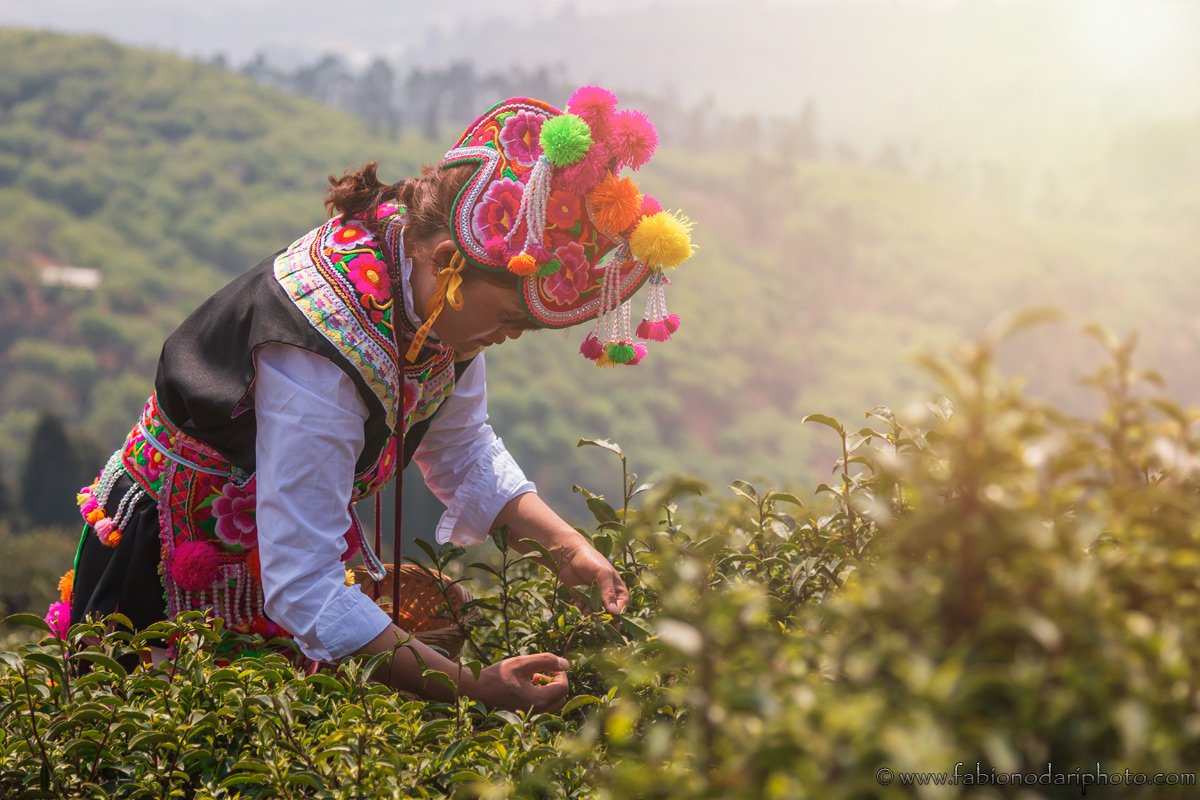
Yunnan Province in China is a beautiful, diverse, landlocked region known for its stunning natural beauty, rich cultural heritage, and delicious cuisine. With its vibrant cities, picturesque countryside, and unique ethnic minority groups , Yunnan offers travelers a unique and unforgettable experience.
One of the main reasons why Yunnan is such a unique province is its border position, far away from Beijing. There is a local saying: “Yunnan, where the Mountains are High, and the Emperor is Far, Far Away.” Even though this is an easily accessible province, historically, this wasn’t the case, making the local culture so different from the rest of the country.
Getting to Yunnan
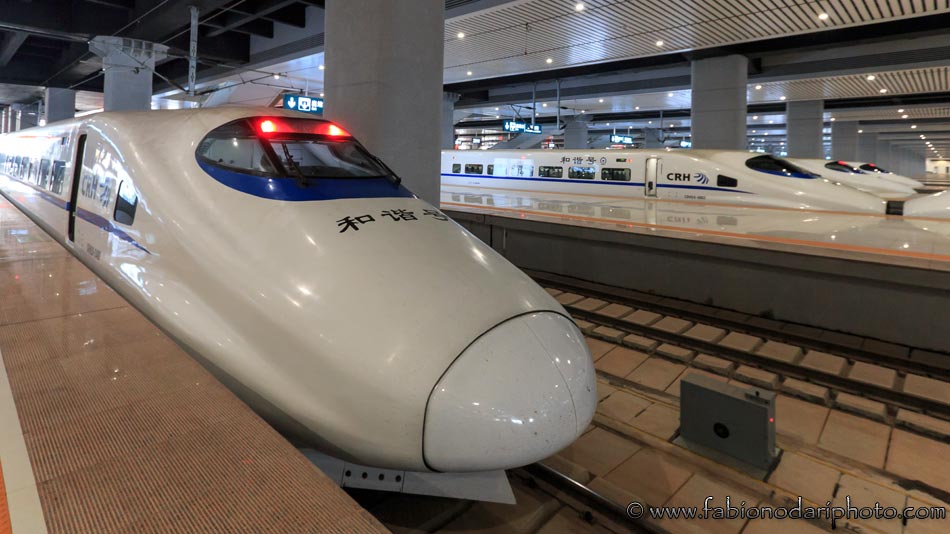
Yunnan is located in southwestern China and is easily accessible by air, train, or bus. The province’s capital city, Kunming , is a central transportation hub with several daily flights to and from all major Chinese cities. Alternatively, you can also get to Kunming by train. As always, when traveling in China, the best website in English to book trains, hotels, and flights is Trip.com. Other websites have fewer options and are generally more expensive.
In the past few years, the government has built new high-speed railways that connect most of the province. You can now get to Shangri-la in the north, Xishuangbanna in the south, and almost every city. In short, travel to and from Yunnan and all around the province has never been easier.
Things to do in Kunming, the spring city
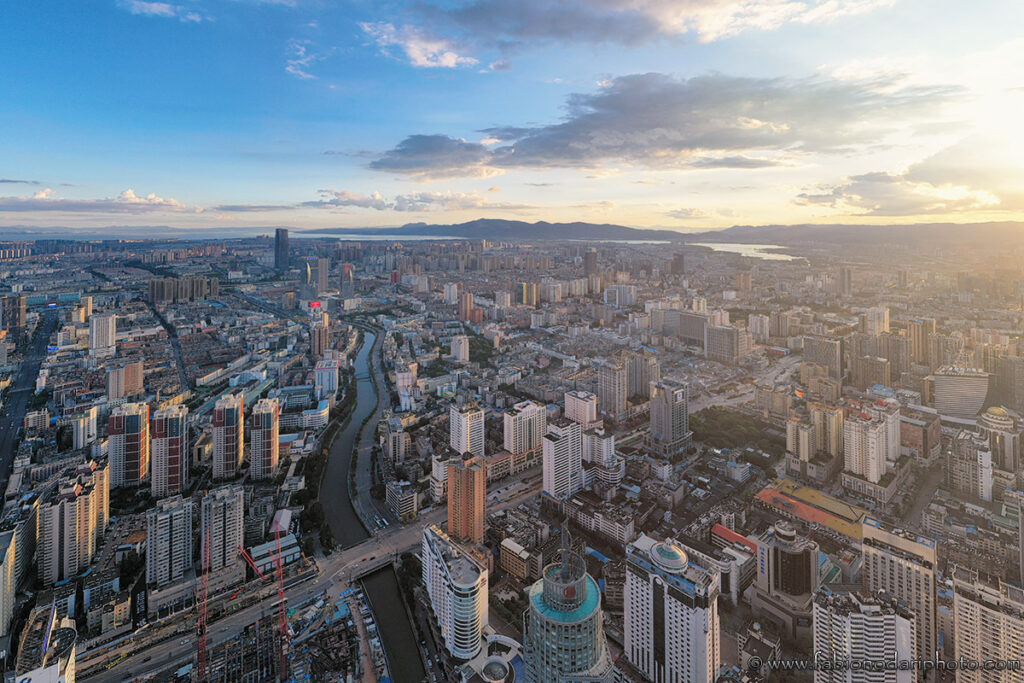
Kunming, the capital, is known for its mild climate. The city is also home to several cultural and historical attractions. Here are some of the top things to do and see in Kunming ( here you can find my complete Kunming Travel Guide ):
- Stone Forest 石林: The Stone Forest is a natural geological wonder made up of towering karst formations. It is a popular attraction in Kunming and is a must-see for anyone visiting the city.
- Kunming Old Town 古城: Kunming’s Old Town is a charming area full of narrow streets, ancient temples, and traditional shops and restaurants. It is a great place to wander and explore, and you can learn more about the city’s history and culture, although, like many other similar places, the town is not old: it has been recently renovated.
- Western Hills 西山: The Western Hills are a series of picturesque hills and forests on Kunming’s western edge. The area has many temples, cultural attractions, and beautiful city views.
- Golden Temple 金殿: The Golden Temple is a Buddhist temple on the top of Mingfeng Mountain. It is known for its beautiful architecture and intricate gold leaf decorations and is a popular destination for tourists and locals.
- Yunnan Provincial Museum 云南省博物馆: The Yunnan Provincial Museum is a great place to learn more about the history and culture of Yunnan province. It has an extensive collection of artifacts and exhibits that showcase the region’s diverse history and culture and is free of charge.
- Green Lake Park 翠湖: Located in the city’s center, Green Lake Park is a popular spot for locals and tourists. It is beautiful in early spring when all the trees bloom.
Interesting places around Kunming
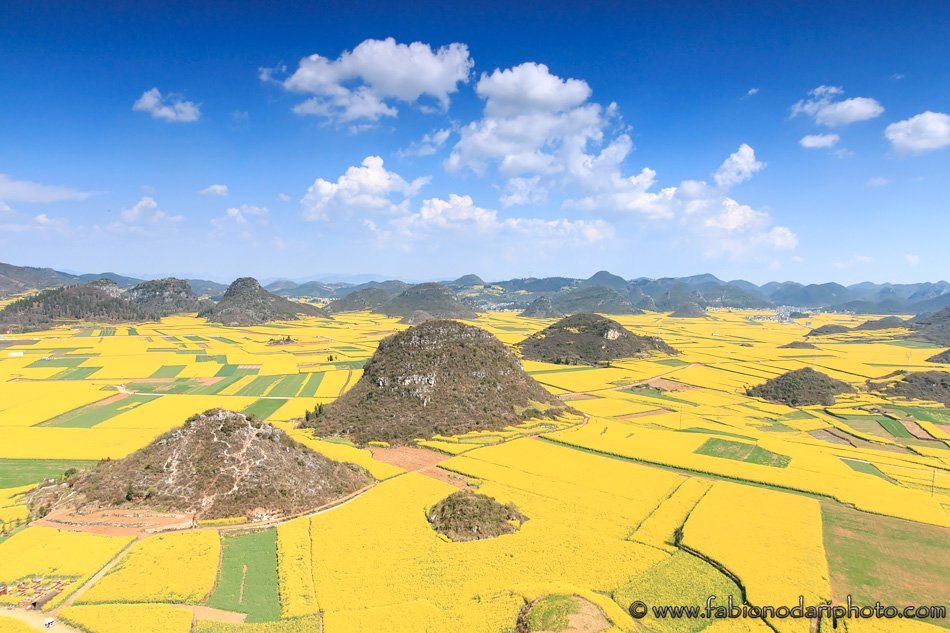
- Luoping 罗平: One of the most interesting places to visit is Luoping. Famous for its huge rapeseed flower fields, remember that it’s worth going there only between February and April. I wrote a detailed guide about it that you can find here.
- Yiliang 宜良: Yiliang is a small town located only 1 hour by bus from Kunming. It’s famous for its Roast Duck , the Colored Rice Fields , and the beautiful Jiuxiang caves.
- Mile 弥勒 : another small town located only 30 minutes from Kunming, has become popular thanks to a new art park called Dongfengyun (东风韵). Here you can read my travel guide.
- Fuxian Lake 抚仙湖: Fuxian is the third largest lake in Yunnan and the third deepest in China. If you’re planning a trip without straying too far from Kunming, Fuxian is the right option. Here you can find my detailed travel guide.
- Puzhehei 普者黑: famous for the typical karst hills, the numerous rivers and ponds, and many caves. Summer is the best season to visit when the ponds are filled with lotus plants in full bloom, which makes the landscape even more beautiful. You can find my travel guide here.
Top things to see in Southern Yunnan
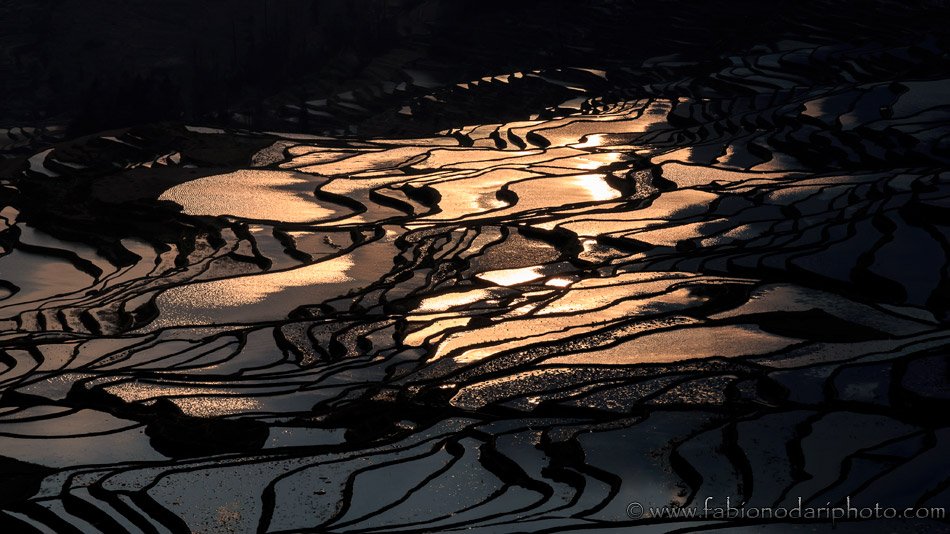
- Yuanyang Rice Terraces 元阳: these are my favorite rice terraces in China. Since 2013, they have been part of the UNESCO World Heritage sites. Keep in mind that the best season is during winter. Here you can find more info.
- Xishuangbanna 西双版纳: located on the border between Myanmar and Laos and crossed by the Mekong River, Xishuangbanna is often considered the Thailand of China. Due to its remote location in a province, Yunnan, which historically is also one of the remotest in China, not many people have heard about this place. Here you can find my travel guide.
- Pu’er 普洱: you might have heard about this place if you like drinking tea. In the past few years, it has become one of the most popular types of tea in China. The city, formerly known as Simao, doesn’t offer that much, but you can explore the surrounding tea and coffee plantations. Fun fact: 99% of the coffee produced in China comes from Yunnan, and Pu’er is an important production center.
Top things to see in Northern Yunnan
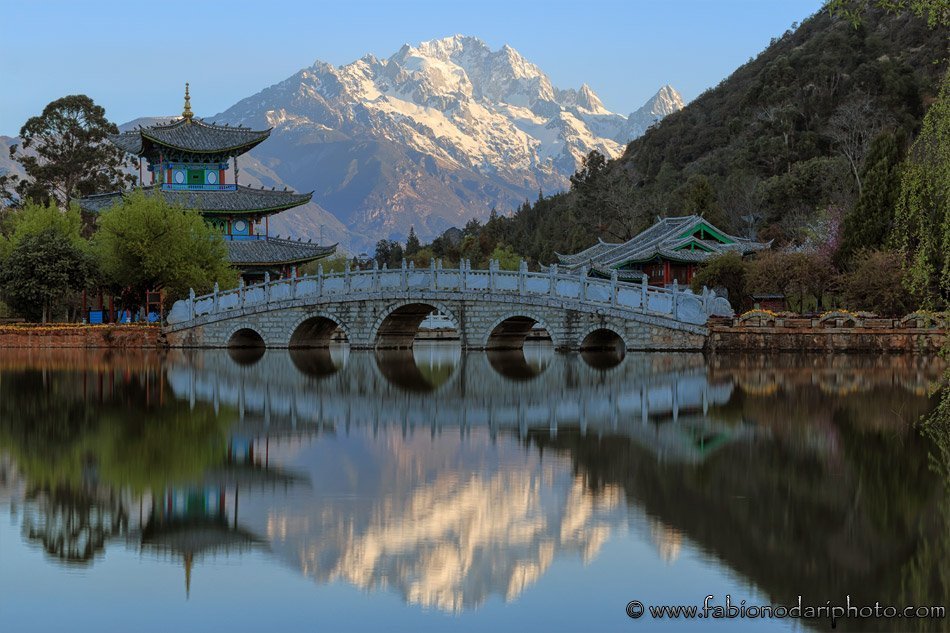
- Lijiang 丽江 : this is likely the most famous place in Yunnan. Some people think it’s too touristy, and they have a point. Nevertheless, a visit to Yunnan is incomplete until you visit the Old Town ( here is my guide ). The good thing about Lijiang is that it can be used as a starting point to explore other nearby places like Jade Dragon Snow Mountain 玉龙雪山.
- Tiger Leaping Gorge 虎跳峡 : at a maximum depth of approximately 3,790 meters (12,434 feet) from the river to the mountain peak, Tiger Leaping Gorge is one of the deepest and most spectacular river canyons in the world. It can be visited with a day trip (but 2 days are better) from Lijiang.
- Dali 大理: along with Lijiang, Dali is the other most famous place in Yunnan. The old town used to be the capital of the ancient Nanzhao Kingdom. It’s a touristy spot like Lijiang, but it’s worth visiting ( here is my guide ).
- Shangri-La 香格里拉: the principal city of the Tibetan area, Shangri-La lies at an elevation of over 3000 meters. You can visit the ancient town, destroyed in a fire a few years ago, that has since been rebuilt. It still attracts many tourists, especially during the summer when people try to escape from the scorching heat in the rest of China. Here is my Shangri-La travel guide . I recommend spending a few days there to explore more remote areas, such as Yubeng . You can find my guide to Shangri-La here.
- Shigu 石鼓: located along the ancient Tea Horse Road, Shigu is also famous for the 140-degree bend of the Yangtze River. You can hike a small hill to have a beautiful aerial view of the landscape. Here is my detailed guide.
- Baisha 白沙 and Shuhe 束河 old towns: these two old towns are located a few km from Lijiang, and you can visit both of them with a day trip. Recommended. Here is my guide to Baisha.
- Shaxi 沙溪: halfway between Lijiang and Dali, Shaxi is a small village almost forgotten by tourists. It’s a city of farmers, but since 2000, the local government has started a program of renovation of the most important buildings. In my opinion, it’s worth spending a night there. Here you can find my guide.
- Dashanbao 大山包: one of the less known places in Yunnan, this is the right place to visit if you are mainly interested in visiting remote places with a lot of nature. Here is my travel guide.
- Dongchuan 东川: also called Dongchuan red land, this area is quite interesting to visit around autumn when the crop is harvested, and you can see the red soil, rich in iron. Here is my travel guide.
- Dulongjiang 独龙江: This is one of the most remote areas in the province where you can find the last women of the Dulong minority with tattooed faces. I’ve talked about it here.
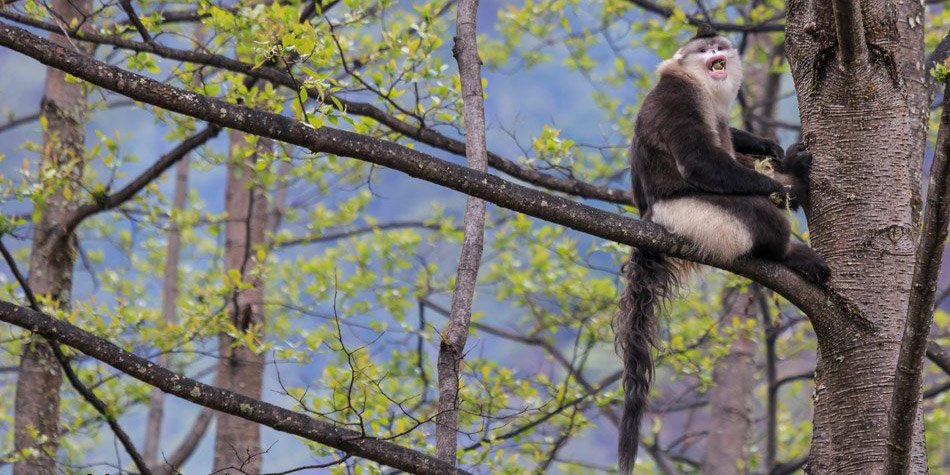
If you decide to visit Shangri-La and are interested in wildlife, don’t forget to check out Baima, where you can observe the rare Yunnan Snub-Nosed Monkey. I wrote an extensive article about the conservation efforts in the area. You can check it out here.
Safety and Health
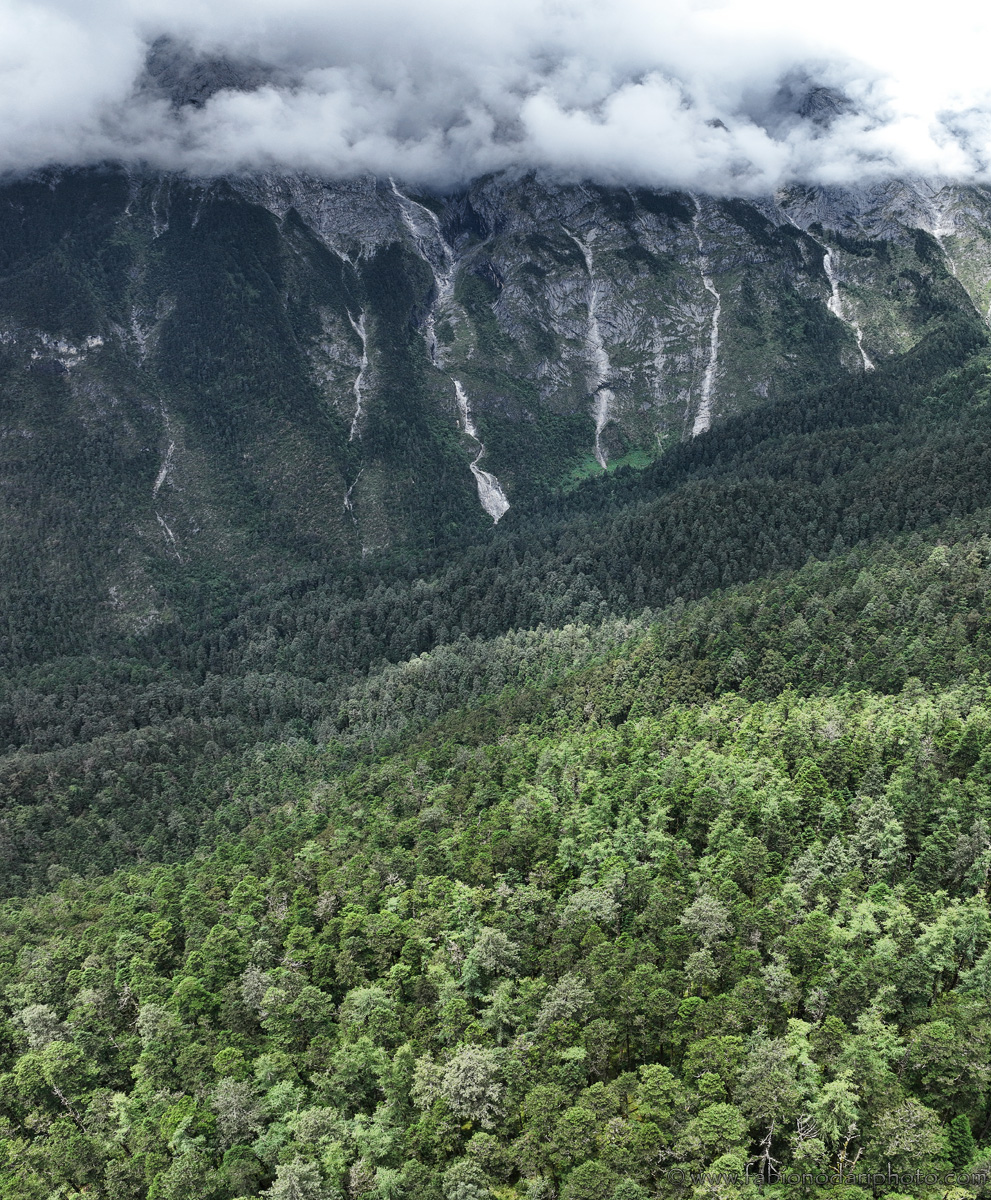
Yunnan is generally a safe place to travel. One thing to keep in mind is related to its geography. The province is mainly located at a high elevation , so you may experience altitude sickness if you are not used to it, especially if you fly from other places in China. Kunming, the capital, lies at an elevation of 1800 meters, and Shangri-La is well over 3000 meters.
In terms of personal safety, Yunnan is pretty safe. I lived there for several years, and I’ve never heard of anything particularly scammy (unlike bordering Vietnam ). This being said, always pay particular attention to your phone.
Yunnan is a beautiful and diverse region that offers travelers a unique and unforgettable experience. Whether you are interested in exploring the vibrant cities, experiencing the rich culture and traditions of the ethnic minorities, or taking in the stunning natural beauty of the province, Yunnan has something for everyone. If you must pick only ONE province to visit in China, I’d recommend Yunnan.
Here, you can find my complete travel guide to China.
Related articles

Kingdom of the Little People: Finding Happiness in a Miniature World

Xijiang (西江): a visit to the Thousand Household Miao Village in Guizhou

Quick Travel Guide to Fenghuang Old Town
Leave a reply cancel reply.
Your email address will not be published. Required fields are marked *
How to Plan a Trip to Yunnan 2024: Where to Go, Itinerary
Yunnan province, in southwest China, is rich in incredible landscapes, ethnic cultures, and historical sites. It is one of China's top places for relaxing, photography, hiking, and mountaineering.
Use this page for inspiration and to prepare for your Yunnan tour.
Content Preview
Choose where to go.
- How Long to Stay
- Transportation
Yunnan has many cities worth visiting. Faced with a wealth of options, we have selected some must-visit and special-interest cities to help you make your choice.
Kunming: Gateway to Yunnan
As Yunnan's capital, Kunming is the best entry point to the region because it serves more international and domestic flights.
It is recommended to stay in Kunming for 1–2 days. The main attractions include:
- The Stone Forest (a must-visit)
- Dianchi Lake (recommended in winter for the seagulls; in summer, you could just enjoy the lake views)
- Dounan Flower Market: This is strongly recommended, even if you don't plan to buy anything as you would be amazed by the variety and scale. It is the largest flower trading market in Asia.
Lijiang: Recommended for First-Timers
Lijiang features romantic ancient towns and Jade Dragon Snow Mountain, both of which are must-visit attractions.
If you are interested in the Naxi culture of Lijiang, you could visit Baisha Village at the foot of the snow mountain, the original settlement and earliest political center of the Naxi people. There, you could learn about the local lifestyle and culture.
Exploring Lijiang typically requires about 2 days. However, if you want a more in-depth visit, you could extend your stay by 1–3 days. For a relaxing sightseeing visit, you could go to Lugu Lake or, if you enjoy outdoor activities, you could choose a hike through Tiger Leaping Gorge. See our 6-Day Lijiang to Shangri-La Tour .
Dali: Recommended for First-Timers
Dali is another must-visit destination in Yunnan. It has become even more popular due to the Chinese romantic drama Meet Yourself. A trip to Dali typically lasts 2–4 days.
Drive alongside Erhai Lake or take an Erhai cruise to feel the breeze and admire the sparkling lake with the distant Cang Mountain in the background.
Wander around Xizhou Town, try local snacks, view typical Bai houses, and take beautiful photos. Dali Old Town is best visited at night when it is livelier.
If you want to experience local life, visit Zhoucheng at the foot of Cang Mountain. There, you could see the traditional stone wall architecture of the Bai people, residents in ethnic costumes, and the morning market. You could also try tie-dyeing.
If you are a fan of the Meet Yourself drama, our itinerary could take you to the filming locations, including Shaxi Ancient Town and Fengyangyi Village.
Shangri-La: Tibetan Culture Immersion
Shangri-La is also one of the main tourist destinations in Yunnan, especially if you are interested in Tibetan culture and highland scenery. A typical visit to Shangri-La lasts 2 days and covers the main attractions, including Dukezong Ancient Town, Songzanlin Monastery, and Pudacuo National Park.
The Meili Snow Mountains, a famous attraction, are not actually in Shangri-La but in Deqin, a 3-hour drive away. If you want to visit, it's recommended to set aside an extra day. Shangri-La also offers beautiful grassland scenery, where you could enjoy a starry night with a bonfire on the grasslands.
Shangri-La provides excellent hiking opportunities, such as the Yubeng Trek , a top hiking route for snowy mountain views that usually takes 4 days.
If You Want More Options…
Besides the popular destinations mentioned above, Yunnan also boasts several diverse and less-discovered treasures. If you're interested in any of these places, you could easily include them in your Yunnan travel plans:
- Xishuangbanna : Best for experiencing tropical rainforest scenery and Dai culture. The Water-Splashing Festival in April is a major highlight.
- Jianshui: Ideal for ancient Chinese architecture enthusiasts. Discover ancient villages and bridges in the countryside and walk through the peaceful streets of the ancient town.
- Nujiang: Nujiang Grand Canyon's magnificent scenery is perfect for adventure and hiking enthusiasts. There, you could feel the raw power of nature and visit isolated villages to experience the primitive customs of minority ethnic groups.
- Yuanyang : The Yuanyang Rice Terraces are the main attraction, being ideal for photography and nature lovers.
- Tengchong: Known for its volcanic geothermal landscapes and borderland charm. You could enjoy hot springs and volcanic topography, and learn about its rich historical culture.
- Mangshi: This border town next to Myanmar has the best climate in Yunnan. It's full of Southeast Asian charm and has a relaxed pace of life and delicious food.
- Shiping: When you're tired of commercialized attractions and want to explore quiet and simple towns, Shiping is a good choice. There are very few tourists there, only local residents, and well-preserved centuries-old cultural relics and historical sites.
How Long to Spend in Yunnan
For a first visit to Yunnan, you would need at least 1 week for a trip to Kunming, Lijiang, Dali, and Shangri-La. You could refer to our 8-Day Kunming, Dali, Lijiang, and Shangri-La Tour for inspiration.
With 9 or 10 days, you could have more opportunities there to experience the ethnic cultures, such as learning to tie-dye and do some outdoor activities, such as biking and hiking. See our 9-Day Yunnan Family Tour .
If you want to experience the tropical scenery and Dai culture, then you could spend about a week exploring Xishuangbanna and Pu'er. See our 6-Day Xishuangbanna and Pu'er Tour . They are also good choices for a warm Christmas/New Year celebration.
There are also some off-the-beaten-path destinations in Yunnan. If you have more time or if this is your second visit to Yunnan and you want to explore more deeply, you could go to Nujiang, Yuanyang, and other places as we have recommended above. Each may need about 2 to 3 days.
If you need help making your Yunnan plan or need advice, feel free to contact us . All of our tours could be customized or adjusted based on your requirements.
Best Times to Visit Yunnan
Yunnan is located at a high altitude and a low latitude. Therefore, most cities are cooler in summer and milder in winter.
Major cities, such as Kunming, Lijiang, Dali, and Shangri-La are suitable for visiting year-round. However, each season has its own specially recommended destinations.
Spring (March to May) in Yunnan is the season for oceans of flowers. The best places to see these sights are Kunming, Dali, Luoping, and Xishuangbanna. See our 5-Day Spring Tour to Kunming, Luoping, and Wanfenglin .
Summer (June to September) in Yunnan is a good season to escape China's heat. We recommend Dali, Lijiang, and Shangri-La.
Autumn (October to November) in Yunnan is busy with golden harvests and it's a season to enjoy clear blue skies. We recommend Dongchuan, Shangri-La, Lijiang, Dali, and Kunming.
Winter (December to February) in Yunnan is the best season to admire snowcapped mountains, the rainforest, hot springs, or mirror-like rice terraces. The best places to experience such views are Xishuangbanna, Yuanyang, Lijiang, and Tengchong. See our 7-Day Kunming, Dali, and Lijiang Winter Tour .
For more seasonal recommendations, see Best Times to Visit Yunnan .
The budget depends on where, when, how many people, how many days, the hotel class, a private or group tour, the transport, and other requirements you may have.
You could get the approximate price from our 8-Day Yunnan Tour (based on two people for a private tour) for reference. The price of 8 days would be about 1,500 USD per person (190 USD daily), including private transfers in Yunnan, meals, admission fees, guiding, hotels, etc.
Getting to Yunnan
Due to its proximity to Southeast Asia, international flights directly to Yunnan usually originate from Singapore, Thailand, and Malaysia, as well as a cross-border train from Laos. Kunming serves as the primary destination city for these international flights.
If you are coming from a European or an American country, typically, you would need to fly first to Beijing or Shanghai and then connect to Kunming, Dali, or Lijiang.
Bullet trains are also available from big cities like Beijing, Shanghai, Guangzhou, and Yunnan's neighboring provinces (Sichuan, Guizhou, and Guangxi) to Kunming, but train rides take 6–12 hours or more. Flying would be faster.
Traveling Around Yunnan
Bullet trains operate around Yunnan, such as from Kunming to Dali, Dali to Lijiang, and Lijiang to Shangri-La.
Our private tours include all transport in Yunnan (and the rest of China), including airport pickups, private transfers, and city-to-city connections.
Discover real reviews of Highlights Travel Family 's best-rated service across trusted platforms.
Tour Yunnan with Us
We can help you maximize your Yunnan travel experience by suggesting less-commercialized attractions, traditional cultural experiences, authentic local cuisine, and locally-themed boutique accommodation.
Here are our most popular Yunnan tours and all of these tours can be customized .
Get Inspired with Some Popular Itineraries
More travel ideas and inspiration, sign up to our newsletter.
Be the first to receive exciting updates, exclusive promotions, and valuable travel tips from our team of experts.
Why China Highlights
Where can we take you today.
- Southeast Asia
- Japan, South Korea
- India, Nepal, Bhutan, and Sri lanka
- Central Asia
- Middle East
- African Safari
- Travel Agents
- Loyalty & Referral Program
- Privacy Policy
Address: Building 6, Chuangyi Business Park, 70 Qilidian Road, Guilin, Guangxi, 541004, China
You are using an outdated browser. Please upgrade your browser to improve your experience.
Yunnan Map and Guide with Map of Yunnan Province China
- Zhong Guo Lu > Yunnan
Yunnan Map China
This map of yunnan & travel guide in english and chinese is the only map of the whole yunnan province china with all international border crossings plus much more....
This Map of Yunnan is like no other! For starters not only does it cover the whole of YunNan , from tropical XiShuangBanNa [ Ke14 ] to the mountains of DeQin [ Kc24 ] but goes beyond and out to all the GuiZhou minority areas around GuiYang [ Kj23 ], and includes all the international overland routes from Vietnam [ Kj18 , Kh19 ], Laos [ Kf18 ] and Myanmar [ Kc20 ] (Burma).
From sailing in Ha Long bay [ Kj17 ], Vietnam to trekking Cang Mountain [ Kd22 ], DaLi to dancing in the Miao “ Sisters Festival ” [ Kk23 ], ShiDong and back again "chasing tigers" down a gorge [ Kd23 ] to spotting elephants in the rainforests [ Ke18 ], you can spend a whole life time and not see everything that is on this YunNan map .
Want more... checkout the best deals on all Yunnan Hotels below...
WANT to DISCOVER more of the Yunnan then get the Trax2 Travel Guides and Maps ...
Trax2 YunNan is more than a map, it’s a Travel Guide, a PhraseBook and a Map, all in one... ...for whatever you do don't forget yours... And don't leave home without the Trax2 Yunnan Map Finding your way around Yunnan is easy with one of these...
Trax2 Yunnan Map is designed in Chinese and English for use when traveling in China.

The most complete list of popular Yunnan tourist attractions
Known for its natural beauty, diverse culture, and rich history, Yunnan is a province in southwest China. The region boasts a variety of scenic attractions, including mountains, lakes, waterfalls, and so on. It is also home to many ethnic minority groups. Each group has its own unique set of customs, traditions, and languages. In this article, I introduce Yunnan’s most popular tourist destinations, including Kunming, Dali, Lijiang, and Shangri-La.
Yunnan is extremely rich in tourism and cultural resources. Please read another article about the travel guide for the ten charming Yunnan ancient towns .
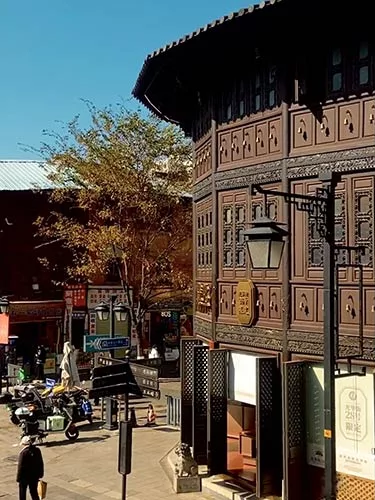
Kunming Old Street
Kunming Old Street is Kunming’s last remaining historical district. Kunming Old Street’s oldest buildings are nearly 900 years old. These buildings carry the memories and stories of the city. Visitors can also enjoy scenic views of the surrounding mountains and lakes. In addition, the street is a hub for traditional cultural activities, including festivals, performances, and exhibitions.
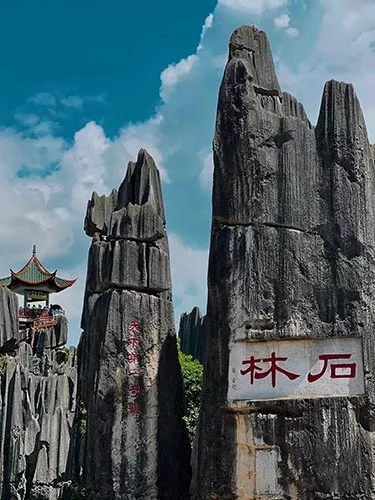
Stone Forest Scenic Area
The Stone Forest Scenic Area is a natural formation of karst limestone pillars that rise out of the ground to form unique and dramatic landscapes. It was named a World Geopark and a World Natural Heritage Site by the United Nations Educational, Cultural and Scientific Section.
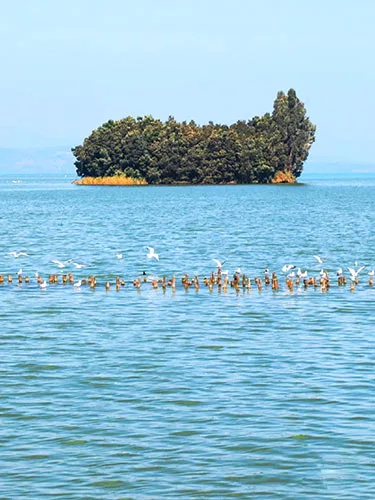
Dianchi Lake
Dianchi Lake is the largest freshwater lake in China and is surrounded by scenic hills. It is home to more than 60,000 wetland birds of 175 species. The lake is known for its stunning natural beauty and is a popular spot for boating, fishing, and water sports. In addition to its natural attractions, Dianchi Lake is also home to several temples, parks, and gardens, making it a cultural hub.
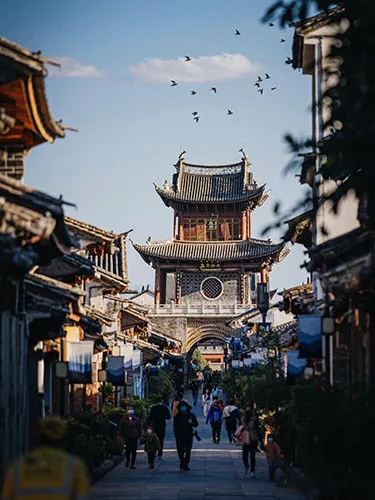
Dali Ancient City
Dali Ancient City is one of the most popular tourist destinations in the region, known for its well-preserved ancient architecture and rich cultural heritage. The town dates back more than 500 years, Ming and Qing dynasties and has been a centre of trade and commerce for centuries. The town is dotted with charming cobblestone streets, traditional buildings, and ancient temples and monasteries, making it a unique and picturesque destination. Visitors to Dali Ancient Town can also explore the local markets, try traditional food and enjoy the scenic views of the nearby mountains and lake. The town is also famous for its beautiful arts and crafts, including tie-dye, pottery and wood carvings, which are available for visitors.
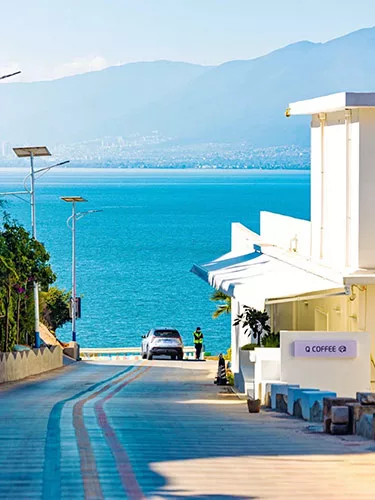
Erhai Lake is the second-largest freshwater lake in Yunnan. The lake is known for its scenic beauty, clear water, and diverse range of fish and bird species. The local Bai minority people have lived near the lake for centuries, and their traditional customs and way of life are an important part of the region’s cultural heritage.
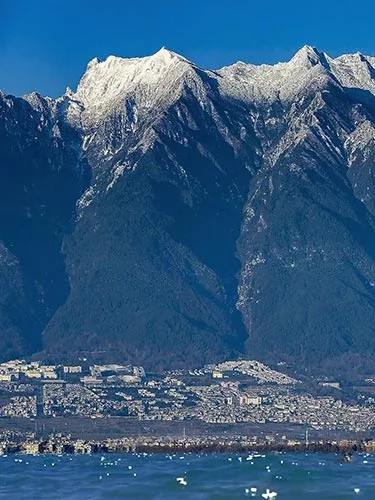
Cangshan Mountain
Cangshan Mountain is the prominent peak at the southern end of the Yunling mountain range. The nineteen peaks of Cang Mountain are imposing and majestic, in stark contrast to the beautiful scenery of the Erhai Lake.

Shuanglang Ancient Town
Shuanglang Ancient Town is known for its well-preserved traditional architecture, which reflects the styles of the Bai ethnic group. Visitors can stroll along the cobbled streets, explore the old houses and temples, and appreciate the intricate wood and stone carvings, colorful murals, and beautiful gardens. Shuanglang is also renowned for its stunning natural scenery, including the nearby Erhai Lake and the Cangshan Mountain Range.
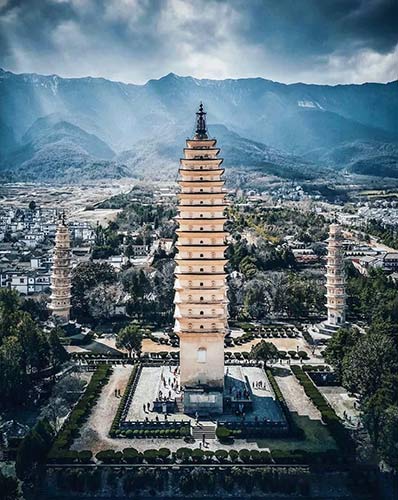
Three Pagodas
Three Pagodas are considered one of the most iconic landmarks of the region and are a popular tourist destination. These buildings, which date back to the 9 th century, are known for their distinctive architecture, which combines elements of Chinese, Tibetan, and Indian styles. Visitors can admire the intricate carvings, beautiful sculptures, and peaceful atmosphere of the pagodas, as well as the surrounding temples and monasteries.

Lijiang Ancient Town
With over 800 years of history, the most popular Yunnan tourist attractions, Lijiang Ancient Town, is a well-preserved historical and cultural site. It is known for its traditional Naxi-style architecture, narrow cobbled streets, canals, and charming wooden bridges. Visitors can stroll through the town, admire the ancient homes and temples, and immerse themselves in the local culture.
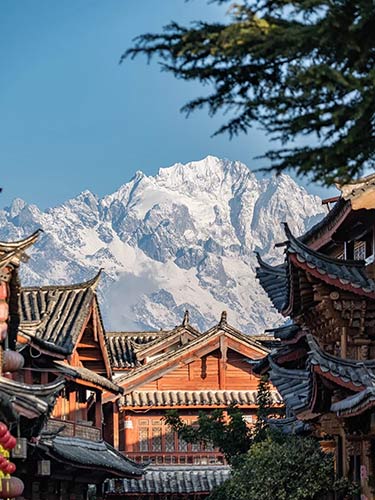
Jade Dragon Snow Mountain
Jade Dragon Snow Mountain is the southernmost snow mountain in the northern hemisphere. The prominent peak, Shanzidou, is 5,596 metres above sea level. The snowy alpine landscape here lies at an altitude of 4000m above sea level and boasts dangerous, strange, beautiful, scenic views. Visitors can take a cable car to the top of the mountain, where they can enjoy panoramic views of the surrounding landscape. At the base of the mountain, there are also a number of traditional villages, where visitors can learn about the culture, sample traditional foods, and explore the ancient temples and monasteries.
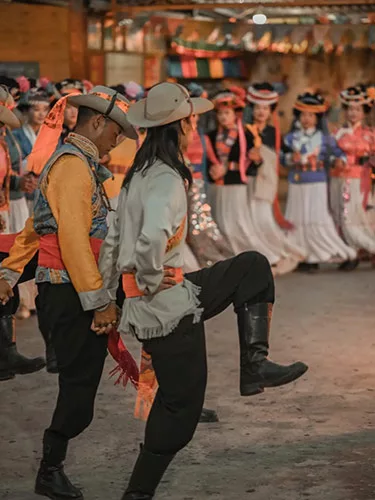
Lugu Lake is a high-altitude freshwater lake with an island within it. It is known for its stunning natural beauty and the unique cultural heritage of the Mosuo people, who have lived in the region for centuries. Visitors can learn about the Mosuo people’s matriarchal society, traditional festivals, and distinctive customs.
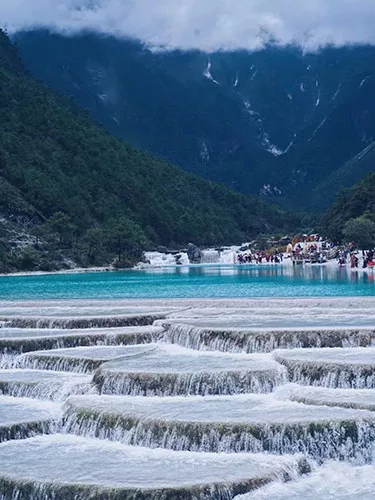
Blue Moon Valley
Blue Moon Valley is world-renowned for its breathtaking views of snow-capped mountains, blue-tinted streams and beautiful gorge scenery. The valley is also known for its unique natural features, including the “Blue Moon” rock formations, which are said to glow blue at night under the light of the moon. It is said to be the site of the Blue Moon in “The Vanishing Horizon” by British author James Hilton.
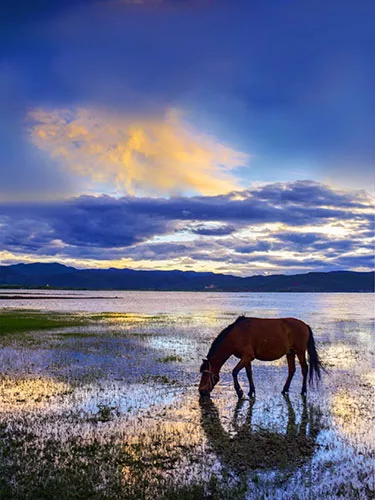
Lashihai is a lake and wetland nature reserve. It is known for its diverse wildlife, including a variety of bird species, and is one of popular Yunnan tourist attractions for bird-watching. The lake and surrounding area are also home to many local minority communities, giving visitors a chance to experience the region’s unique cultural heritage.
Shangri-La was first introduced to the world in the 1930s in the novel Vanishing Horizons by British author James Hilton and was soon made into a film of the same name, which won several Oscars, making it even better known.

Pudacuo National Forest Park
The Pudacuo National Forest Park features a diverse landscape of rolling hills, crystal-clear lakes, and dense forests, making it a popular destination for tourists seeking a chance to connect with nature. Visitors can explore the park’s scenic hiking trails, admire the diverse plant and animal life, and enjoy the scenic beauty of the area. Additionally, Pudacuo National Forest Park is home to several traditional villages, offering visitors a glimpse into the local culture and way of life. Whether you are a nature enthusiast, hiker, or simply looking to escape the hustle and bustle of city life, Pudacuo National Forest Park is a must-visit destination.
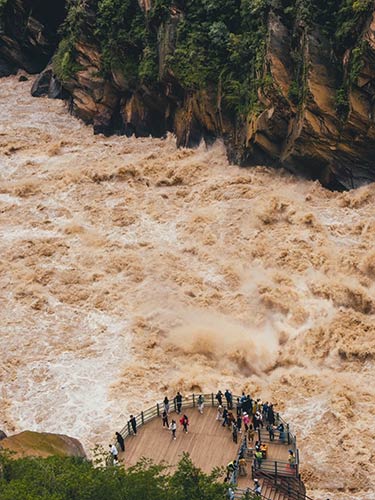
Tiger Leaping Gorge
Tiger Leaping Gorge is one of the deepest gorges in the world. The area is one of popular tourist Yunnan attractions for its breathtaking natural beauty and challenging hiking trails. The main hiking trail offers stunning views of the towering peaks, cascading waterfalls, and rushing rapids of the Jinsha River. Visitors can also explore the local villages and experience the traditional culture of the region. Whether you are an adventurous hiker or simply looking to admire the scenic beauty of Tiger Leaping Gorge, this destination is a must-visit for those visiting the Yunnan Province.
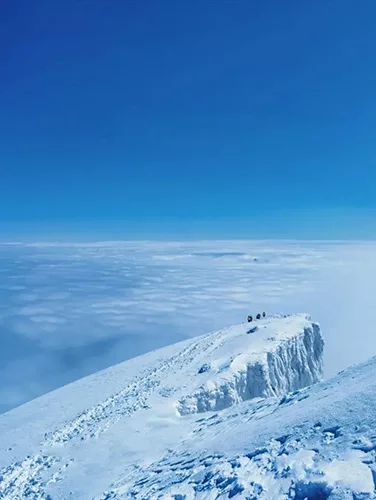
Haba Snow Mountain
The elevation of Haba Snow Mountain varies greatly. The landscape is divided into subtropical, temperate, cold temperate and cold climate zones. The temperature difference between the mountain’s foot and the top of the mountain is about 22.8 degrees. There is a wide variety of plants distributed here. The area is one of popular Yunnan tourist attractions for its breathtaking natural beauty and opportunities for outdoor adventure.
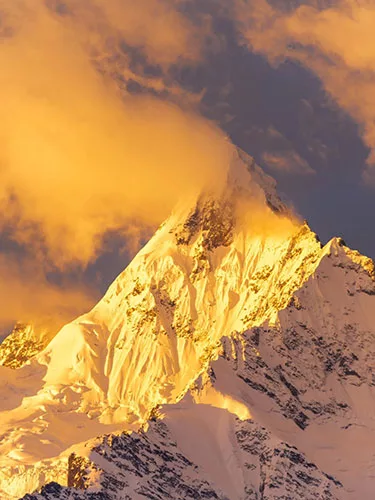
Meili Snow Mountain
Meili Snow Mountain is the highest peak in Yunnan, a sacred place of pilgrimage for Tibetans, a sacred place of the Yongzhong benzene religion, the first of the “Eight Sacred Mountains of Tibet”, and one of the “Ten Most Beautiful Mountains of China”… It is also one of the most dangerous snow mountains in the world and is exceptionally dangerous. Visitors can participate in activities such as hiking, trekking, and climbing to reach the mountain’s summit or simply admire the stunning vistas from a distance.

Songtsamlin Monastery
Songtsamlin Monastery is the largest Tibetan Buddhist monastery in Yunnan Province and has a pivotal position in the entire Tibetan region, known as the “Little Potala Palace”. The temple is built on a mountain and looks like an ancient fortress. It is also known as the ‘Museum of Tibetan Art’, as it is a masterpiece of Tibetan modelling art.
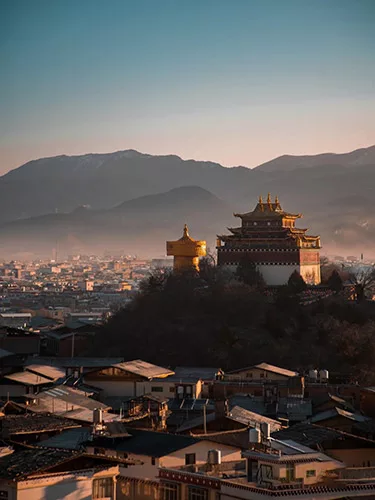
Dukezong Ancient City
Dukezong Ancient City was once an important trading hub on the tea and horse caravan road. It is now one of popular Yunnan tourist attractions for its unique blend of cultural, architectural, and historical heritage. Visitors can explore the narrow, winding streets and admire the traditional Tibetan-style houses, temples, and monasteries that make up the town’s rich cultural tapestry. The city is also known for its vibrant nightlife, bustling market and many shops, restaurants, and cafes. Whether interested in history or architecture or simply looking to immerse yourself in the local culture, Dukezong Ancient City is a must-visit destination for those visiting the Yunnan Province.
Xishuangbanna Dai Autonomous Prefecture
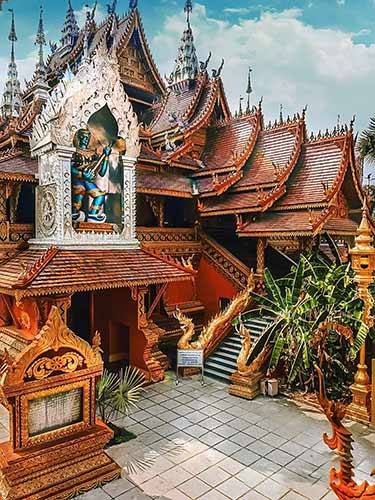
Manting Park : Manting Park is the former rear imperial garden of the Dai royal family. The famous Chief Buddha Temple is here. Wild Elephant Valley : The Wild Elephant Valley is the only place in China with wild elephants. You can also see wild elephant shows here. Starlight Night Market : The Starlight Night Market is the largest night market in Asia. It brings together many Chinese delicacies.
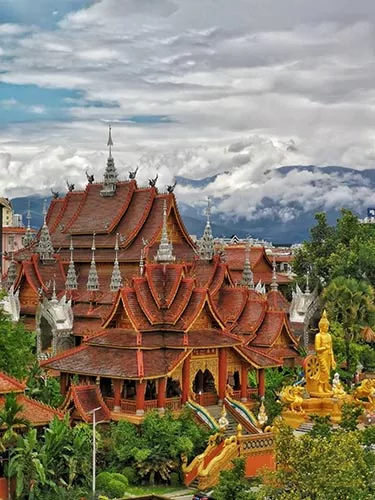
Mengle Buddha Temple : The Mengle Buddha Temple was restored and rebuilt on the site of the ancient Dai Dynasty’s royal monastery, the Jing Piao Buddha Temple. “The temple was built by a Dai king named Dialong in the history of the Dai people to commemorate his deceased consort, Nan Sa Wei Pian. Xishuangbanna Tropical Botanical Garden : The Xishuangbanna Tropical Botanical Garden is the largest and most species-rich botanical garden in China, with more than 4,000 species of plants from all over the world. Dai Garden : The Dai Garden attracts Chinese and foreign visitors with its charming subtropical courtyard scenery, rich Dai folk customs, typical Dai bamboo building shape, traditional handicraft production and magical Buddhist culture.
Related Post
Beyond dali and lijiang: travel guide to the ten charming yunnan ancient towns.
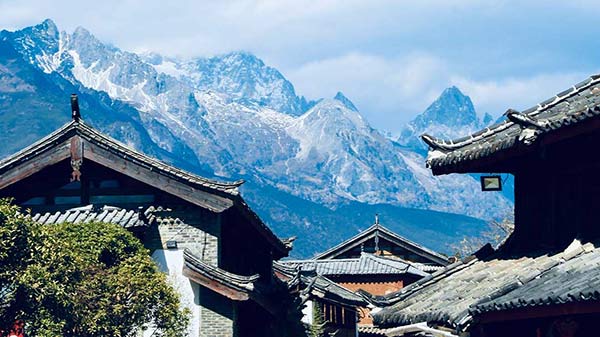
Home >> Yunnan >> Beyond Dali and Lijiang: Travel Guide to the Ten Charming Yunnan Ancient Towns There are many ancient towns and villages in Yunnan with very different styles. Some are sparsely populated; some are ancient and contain the…
- Xishuangbanna
- Small group
- Our agency in Yunnan
- Asian Roads Network
- Contact us !
- Partner hotels
- Green and solidarity tourism
- Before traveling to Yunnan
- Minorities of Yunnan
- Direct flight Paris Kunming
- Yunnan seen from the sky
- Detailed map of Yunnan
- Demande d'info
- 09 83 07 44 60
Yunnan Roads > Detailed map of Yunnan
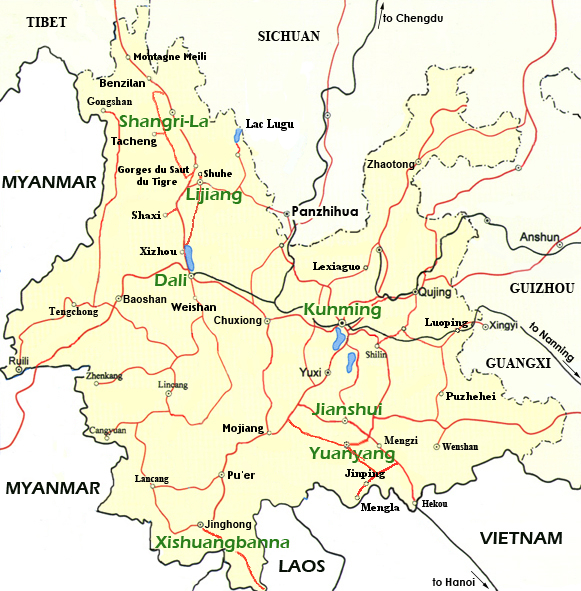
Detailed map of Yunnan with major travel destinations in the province.
Yunnan Itineraries: 3 Days to 12 Days Yunnan Itinerary
Captivating landscapes, ancient towns, and rich ethnic group cultural - Yunnan is a destination that promises adventure and discovery. Planning your perfect Yunnan itinerary can feel overwhelming with so many incredible options.
Fear not, we’ve got you covered with detailed Yunnan itineraries that cater to every trip duration, from a quick 3-day escape to an immersive 12-day exploration. Whether you’re enchanted by the mystical Stone Forest , the vibrant streets of Lijiang Old Town , or the serene beauty of Shangri-La , our comprehensive Yunnan itinerary guide will help you navigate Yunnan’s diverse landscapes and captivating experiences. Dive into the storied past of Yunnan , savor its mouthwatering cuisine, and create unforgettable memories tailored to your travel style and timeline.
Content Preview
How to Spend 1-4 Days in Yunnan (for a City Tour of Top Yunnan Destinations)
Almost all of the top destinations of Yunnan , including Kunming , Lijiang , Dali , Shangri-La , and Xishuangbanna , have excellent flight routes and high-speed train connections. So, based on your vacation time and preferences, you can easily explore the highlights of each destination in just 1 to 4 days .
Kunming: Spring City
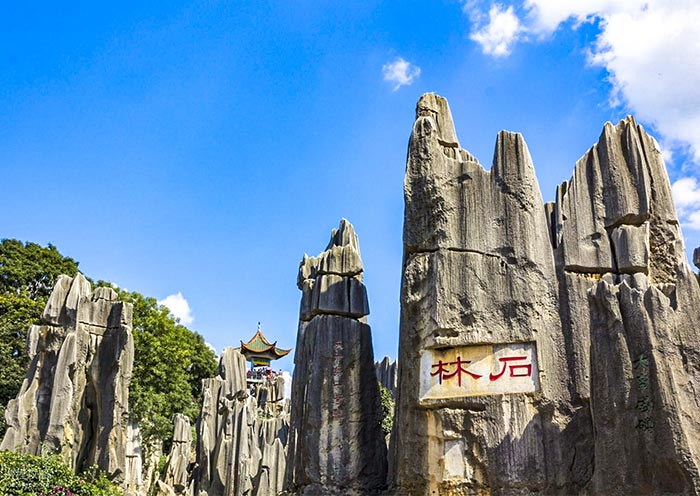
Kunming , the capital city of Yunnan , is famously known as the "City of Eternal Spring." With its pleasant climate and vibrant atmosphere, it's a place that invites exploration and discovery.
Be sure to visit the must-see spots like Yuantong Temple and the Flower Market, where you can soak up the rich history and local flavor. For nature lovers, Dian Lake and the Western Hills offer breathtaking natural beauty that will leave you spellbound.
However, the true highlight of Kunming is the UNESCO World Heritage Site , the Stone Forest . In this extraordinary geological wonder, you'll marvel at nature's craftsmanship. Plus, you'll be enchanted by the legendary story of Ashima, feeling the mystical and romantic aura that envelops this land.
Related Article(s):
Best Time/Season to Visit Kunming: Weather, Climate & Travel Tips
How to Plan a Kunming Tour, Ultimate Kunming Trip Guide 2024
Things to Do in Kunming: What to Do & Places to Visit in Kunming
3 Days Kunming World Heritage Tour: Explore the Spring City & Stone Forest
Lijiang: Old Towns, Yulong Snow Mountain & Naxi Culture
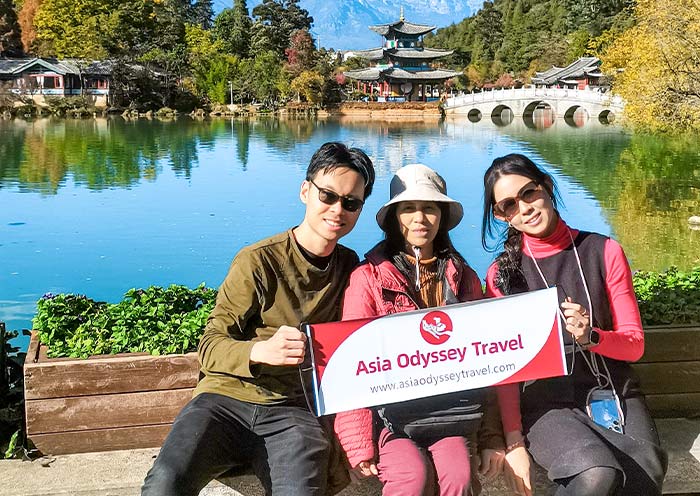
Lijiang is famous for its combo of ancient towns and the majestic Jade Dragon Snow Mountain . Ready to explore one of the most iconic ancient towns of China ? Lijiang Old Town will make you feel like you've traveled back in time, from the Wooden Palace to Sifang Street and the Big Water Wheel.
Hop on the cable car to Jade Dragon Snow Mountain's highlights: Glacier Park, Spruce Meadow, Yak Meadow, and the stunning Blue Moon Valley. Don't miss out on Shuhe and Baisha Old Towns for more Naxi history and culture .
14 Best Things to Do in Lijiang: Lijiang Attractions (Updated 2024)
Best Time to Visit Lijiang | Lijiang Weather (2024)
How to Plan a Trip to Lijiang Yunnan (Updated 2024)?
3 Days Classic Lijiang Tour with Jade Dragon Snow Mountain
Dali: Poetic and Laid-Back Spot
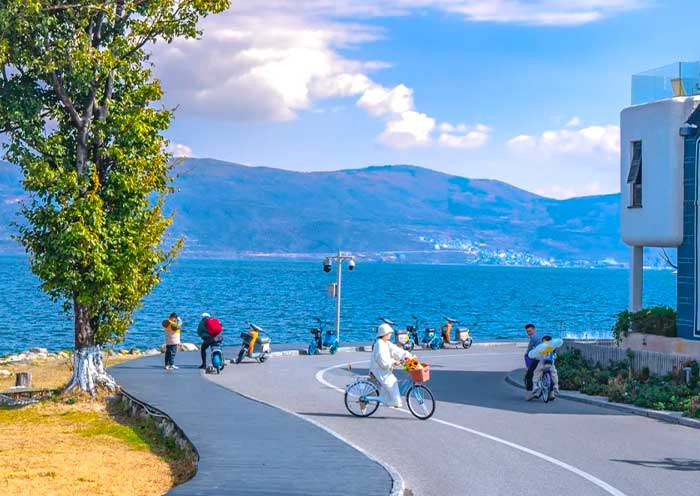
Dali is the most poetic and laid-back spot of Yunnan . Whether you're strolling through the ancient Nanzhao and Dali capital of Dali Old Town , cycling along the scenic Erhai Lake , or diving into Bai culture in Xizhou Old Town , Dali has something special for you. Don't miss Zhoucheng for traditional tie-dye art! Dali's got it all!
Best Time to Visit Dali: Dali Weather, Climate & Travel Tips
Dali Attractions: Top 10 Things to Do & Places to Visit in Dali
How to Plan a Trip to Dali, Yunnan (2024/2025)
3 Days Yunnan Dali Tour: A Romantic and Leisurely Journey
Shangri-La: Mythical Utopia
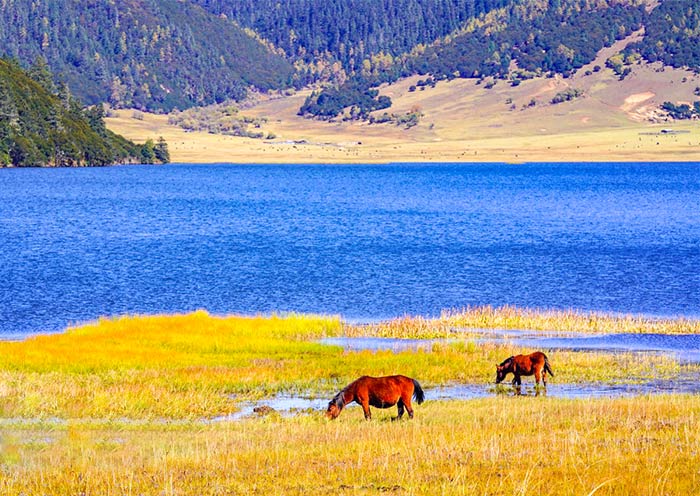
Shangri-La , a name that conjures images of paradise, is nestled in the heart of Yunnan and lives up to its mythical reputation. This enchanting place offers a feast for the eyes with its snow-capped mountains, lush valleys, and serene lakes.
Delve into Tibetan culture by visiting the majestic Songzanlin Monastery, often called the "Little Potala Palace." Lose yourself in the pristine beauty of Pudacuo National Park, where nature’s splendor is on full display. And for the adventure seekers, don’t miss the awe-inspiring Tiger Leaping Gorge . Hiking through this dramatic canyon, with the roaring Jinsha River below and towering cliffs above, is an experience that will leave you breathless. View more Tiger Leaping Gorge Tour Packages >>
How to Plan a Trip to Shangri-La Yunnan? (10 Easy Steps)
Shangri-La Attractions: Things to Do & Places to Visit in Shangri-La
4 Days Shangri-La Tour: Lost Horizon Land, Monasteries & Grand Canyon
Xishuangbanna: Rainforests, Elephants, and Dai Ethnic Customs
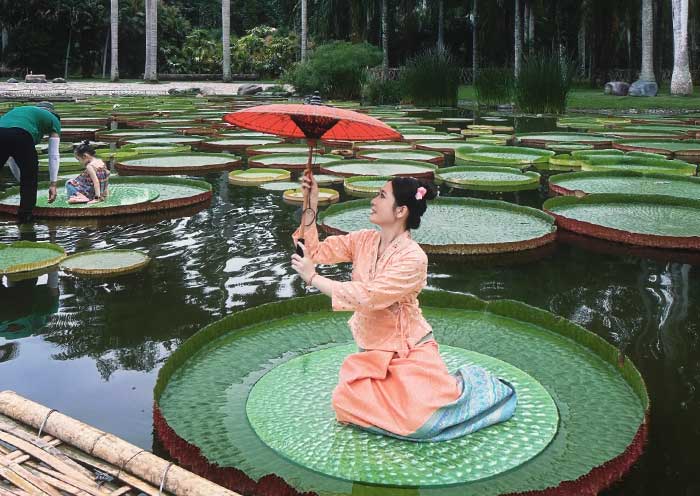
Xishuangbanna , in southern Yunnan , is a tropical paradise bursting with Dai Group culture and natural beauty . Stroll through the lush Xishuangbanna Tropical Botanical Garden and explore charming Dai villages with their unique stilted bamboo houses and vibrant festivals.
Don’t miss Manting Park, a serene former royal garden, or the Wild Elephant Valley, where you might see elephants roaming free. Enjoy the lively night markets, savoring delicious Dai cuisine and local delicacies.
Related Article: Xishuangbanna Attractions: Top 8 Things to Do in Xishuangbanna
4 Days Xishuangbanna Tour: Tropical Rainforest, Wild Elephants & Dai Enthic Culture
Yunnan Itinerary 5-6 Days: From Kunming to Top Destination of Yunnan
For those with 5-6 days of vacation, exploring 1-2 of the top destinations in Yunnan is totally doable. Most travelers start in Kunming , checking out nearby gems like Dongchuan Red Land and Yuanyang Rice Terraces .
A popular itinerary includes Kunming plus another hotspot like Lijiang or Xishuangbanna . Combinations like Lijiang and Shangri-La or Dali and Lijiang are also big hits. If you're short on time, you can even plan a whirlwind tour of Kunming , Dali , and Lijiang.
Option 1: From Kunming to Top Attractions (For Photografie & Adventure)
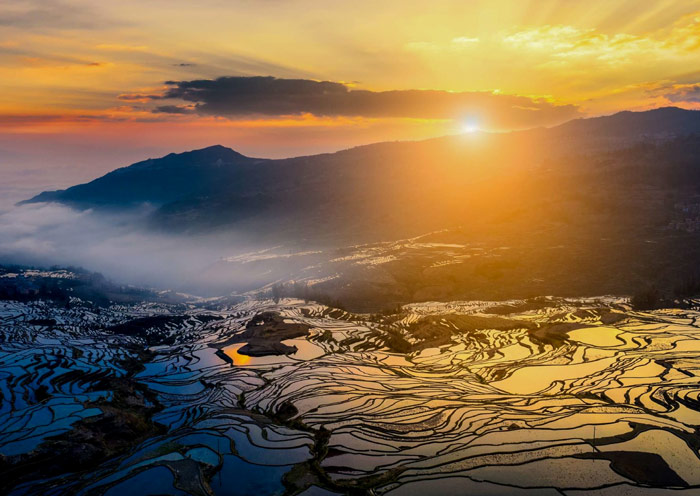
The area around Kunming is a paradise for photographers and adventurers alike. Here, you can explore the stunning Dongchuan Red Land , known as "God's Palette," and the breathtaking Yuanyang Rice Terraces , both showcasing the beauty of nature and culture.
Dongchuan Red Land : Often called "God's Palette," this spectacular red-soil plateau offers a vivid contrast with green crops and bright blue skies, creating a stunning natural mosaic. From September to December, the rotating crops enhance the vibrant colors, making it a dreamland for photographers.
Yuanyang Rice Terraces : Famous for their intricately designed terraces, these are a testament to the ingenuity of the Hani people, who have sculpted the mountains into a massive, layered masterpiece. At dawn and dusk, the water-filled terraces reflect the sky’s light, enveloped in mist, creating a magical, otherworldly scene. During the flooding season, the mirror-like surfaces are perfect for capturing breathtaking photos and experiencing Hani culture. View more Yuanyang Rice Terraces Tour Packages >>
Here is a suggested itinerary:
Day 1: Arrival in Kunming
Day 2: Kunming Highlights Tour. (West Hill, Stone Forest)
Day 3: Transfer from Shilin to Honghe
Day 4: Adventure to Yuanyang Rice Terraces (Duoyishu Rice Terrace, Aichun Blue Rice Terrace, Azheke Mushroom Houses, Laohuzui Rice Terraces)
Day 5: Jianshui Ancient Town Tour. (Chaoyang Tower, Confucius Temple, Zhu Family Garden)
Day 6: Departure
Related Article: How to Get from Kunming to Yuanyang Rice Terraces?
6 Days Yuanyang Rice Terraces Tour - Kunming, Jianshui & Honghe Hani Minority
Option 2: Lijiang Links Classic Yunnan Destinations
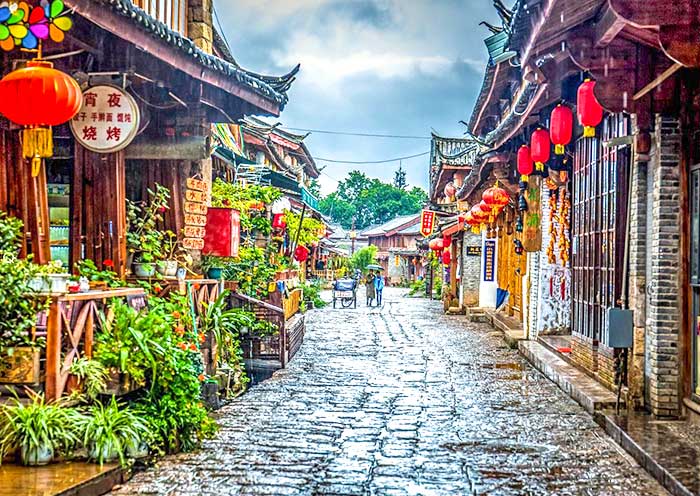
Lijiang is arguably Yunnan's hottest destination! Many time-crunched travelers love to pair Lijiang with another Yunnan gem, like Kunming , Shangri-La , or Dali . It’s like hitting two delightful birds with one stone!
5 Days Lijiang Shangri-La Tour: Paradise on Earth View & Old Towns
Option 3: Whirlwind Tour of Dali, Kunming, and Lijiang
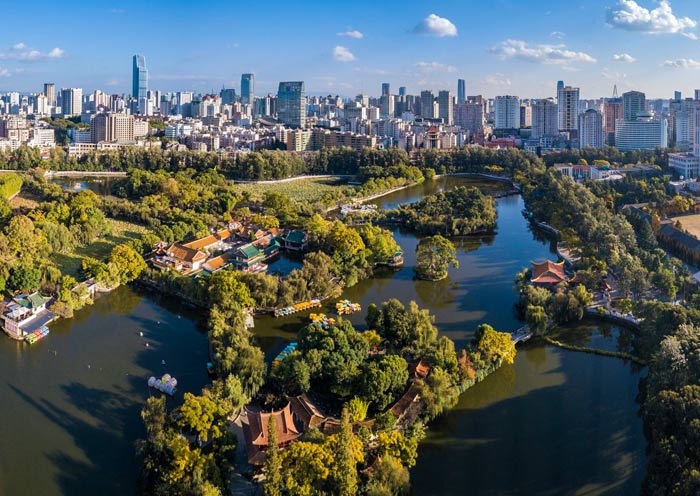
Even if you're short on time, you can still conquer Kunming , Dali , and Lijiang in just 6 days! Give it a whirl and make the most of your adventure!
Day 1-2: Kunming Highlights Tour
Explore the Stone Forest , a World Heritage Site with unique karst formations and Yi culture. Visit Yuantong Temple, Kunming's oldest Guanyin Temple, featuring a unique "Downhill Temple" design. Stroll through Green Lake Park, known for its emerald waters, historical buildings, and vibrant local life.
Day 3-4: Travel to Dali
Take a high-speed train from Kunming to Dali . Visit the Three Pagodas of Chongsheng Temple with their rich history and stunning architecture. Enjoy a leisurely bike ride along Erhai Lake , soaking in the scenic views and local culture. Return to your hotel in Dali .
Explore Xizhou Morning Market, try local snacks, and visit traditional Bai dwellings. Discover the tie-dye art of Zhoucheng Village. Head to Lijiang Old Town and Black Dragon Pond Park for more cultural immersion and picturesque views.
Day 5-6: Tour to Lijiang
Explore Jade Dragon Snow Mountain with a cable car ride to Spruce Meadow. Visit Blue Moon Valley with its stunning turquoise lakes. Discover Baisha Village's murals and Naxi culture. Stop at Shuhe Ancient Town for a tranquil experience and local snacks.
6 Days Yunnan's Best: Kunming Dali Lijiang Tour
Yunnan Itinerary 7-12 Days: Classic & Yunnan Panorama Tour
Option 1: 8 days yunnan tour (classic itinerary).
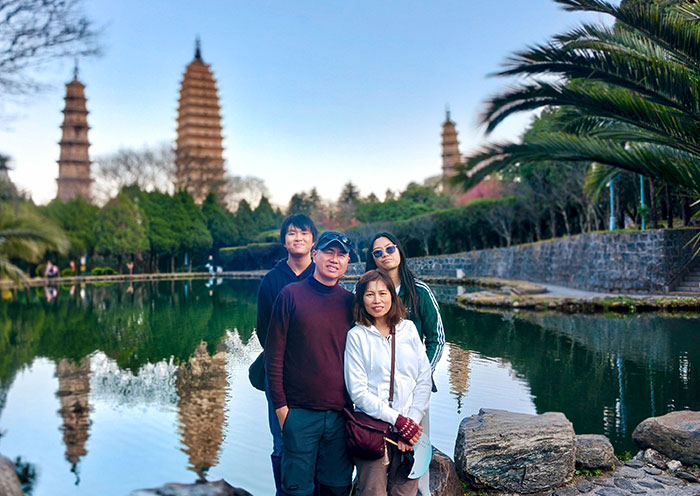
An 8-day trip through Kunming , Dali , Lijiang , and Shangri-La is the ultimate Yunnan adventure ! From Kunming’s Stone Forest to Lijiang’s Old Town, Dali’s Erhai Lake, and the mystical Shangri-La , you’ll hit all of Yunnan’s hottest spots. Get ready for an epic journey through the best of Yunnan !
Kick off your Yunnan adventure in Kunming , the " Spring City ." Visit the iconic Stone Forest , a UNESCO World Heritage site with stunning limestone formations. Stroll through the vibrant Green Lake Park where locals practice Tai Chi and dance. Explore the Yuantong Temple, Kunming's largest Buddhist temple, and marvel at its ancient architecture. Don’t miss the bustling Flowers and Birds Market for unique souvenirs and local snacks. End your day with a taste of Yunnan cuisine at a local restaurant.
Day 3-4: Explore Top Attractions of Dali
Head to Dali , renowned for its picturesque landscapes and rich cultural heritage. Wander through the charming streets of Dali Old Town , flanked by traditional Bai architecture. Visit the majestic Three Pagodas of Chongsheng Temple, a symbol of Dali’s history. Enjoy a serene boat ride on Erhai Lake , surrounded by mountains and dotted with quaint fishing villages. Discover the vibrant local culture at Xizhou Village , famous for its traditional Bai houses and colorful markets. Savor local delicacies and soak in Dali's laid-back vibe.
Day 5-6: Take a Tour to Lijiang
Arrive in Lijiang , a UNESCO World Heritage site known for its well-preserved ancient town. Wander through the cobblestone streets of Lijiang Old Town, lined with charming shops and cafes. Visit the Black Dragon Pond Park for stunning views of Jade Dragon Snow Mountain . Explore the ancient murals at Baisha Village, offering a glimpse into Naxi culture. Take a leisurely stroll through Shuhe Ancient Town, a quieter alternative to Lijiang Old Town , and enjoy the tranquil atmosphere and local crafts.
Day 6-8: Adventure to Shangri-La
Journey to Shangri-La , a mystical land of stunning natural beauty and rich Tibetan culture. Visit the Songzanlin Monastery, the largest Tibetan Buddhist monastery in Yunnan , often referred to as the "Little Potala Palace." Explore the breathtaking Pudacuo National Park, home to pristine lakes, lush meadows, and diverse wildlife. Wander through Dukezong Ancient Town, with its Tibetan-style architecture and prayer flags fluttering in the breeze. Experience the warm hospitality of the Tibetan people and immerse yourself in their unique traditions and way of life.
8 Days Kunming Dali Lijiang Shangri-La Tour: Yunnan Best Highlights

Option 2: Yunnan Panorama Tour (12 Days)
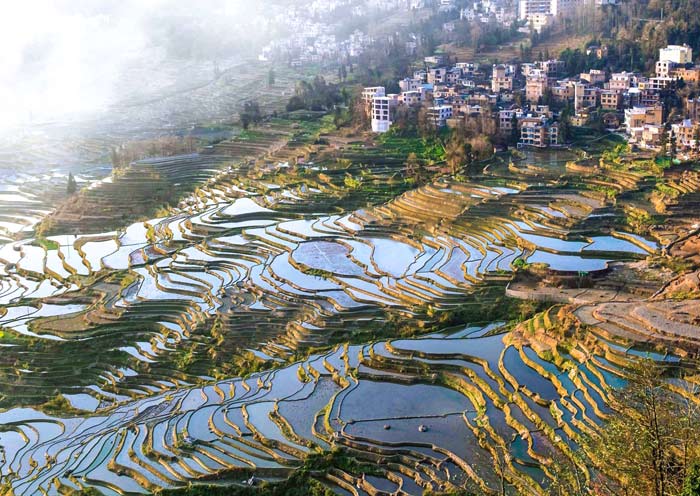
Got some extra time and an itch to explore Yunnan deeper? Consider planning a 10-12 day panoramic journey that covers all the top attractions in Yunnan . Perfect for anyone’s taste, this trip will let you experience Yunnan in all its glory. Pack your bags and get ready for an unforgettable adventure!
Day 1-2: Explore the Top Attractions of Kunming
Start your journey in Kunming by exploring the West Hill, home to the Dragon Gate and its intricate Taoist grottoes carved into the cliffs. Enjoy spectacular views over Dianchi Lake. Head to the Stone Forest , a UNESCO World Heritage site, where towering limestone formations create a surreal landscape. Stroll through the labyrinthine paths and marvel at the natural stone sculptures. Capture stunning photos and soak in the unique geology of this natural wonder.
Day 3-4: Yuanyang Rice Terraces Tour
Venture to Yuanyang to witness the breathtaking rice terraces. Start with the Bada Rice Terraces at sunset, where the reflections create a magical scene. Visit Duoyishu Rice Terrace at dawn for a mesmerizing sunrise. Explore the Aichun Blue Rice Terrace and its vibrant hues. Check out the unique Azheke Mushroom Houses, traditional Hani dwellings. Conclude with the Laohuzui Rice Terraces, known for their dramatic curves and layers. These terraces showcase the ingenuity and beauty of traditional agriculture.
Day 5-6: Jianshui Ancient Town Tour
Discover the charm of Jianshui Ancient Town , starting with the imposing Chaoyang Tower, a symbol of the town's history. Visit the Confucius Temple, the second largest in China , and admire its classical architecture. Wander through Zhu Family Garden, a beautiful Qing Dynasty mansion with intricate courtyards. Explore the Double Dragon Bridge, an ancient stone bridge with 17 arches. End your tour at Tuanshan Village, a well-preserved traditional village offering a glimpse into the region's rich cultural heritage.
Day 7-8: Enjoy the Laid-Back Atmosphere of Dali
Arrive in Dali and immerse yourself in its unique blend of natural beauty and cultural heritage. Visit the iconic Three Pagodas of Chongsheng Temple, standing tall against the Cangshan Mountains. Stroll through Dali Old Town , with its charming streets and traditional Bai architecture. Visit Erhai Lake , enjoying the serene waters and scenic views. Explore Xizhou Village , known for its vibrant morning market and traditional Bai houses. Savor local delicacies and experience the laid-back atmosphere of Dali .
Day 9-10: Lijiang Highlights Tour
Explore the enchanting Lijiang , starting with the ancient streets of Lijiang Old Town , a UNESCO World Heritage site. Visit the picturesque Black Dragon Pond Park, offering stunning reflections of Jade Dragon Snow Mountain . Discover the ancient murals at Baisha Village, depicting Naxi culture and history. Wander through Shuhe Ancient Town, a quieter and less touristy alternative to Lijiang Old Town . Enjoy the tranquil atmosphere, local crafts, and traditional Naxi cuisine, making your Lijiang experience truly memorable.
Day 11-12: Shangri-La Tour
Conclude your Yunnan adventure in Shangri-La , a paradise of natural beauty and Tibetan culture. Visit the Songzanlin Monastery, the largest Tibetan Buddhist monastery in Yunnan , often referred to as the "Little Potala Palace." Explore the stunning Pudacuo National Park, with its pristine lakes, meadows, and diverse wildlife. Wander through Dukezong Ancient Town, with its Tibetan-style architecture and rich history.
12 Days Yunnan Panorama Tour - Kunming, Yuanyang, Jianshui, Dali, Lijiang & Shangri-La
Extend Your Yunnan Itinerary
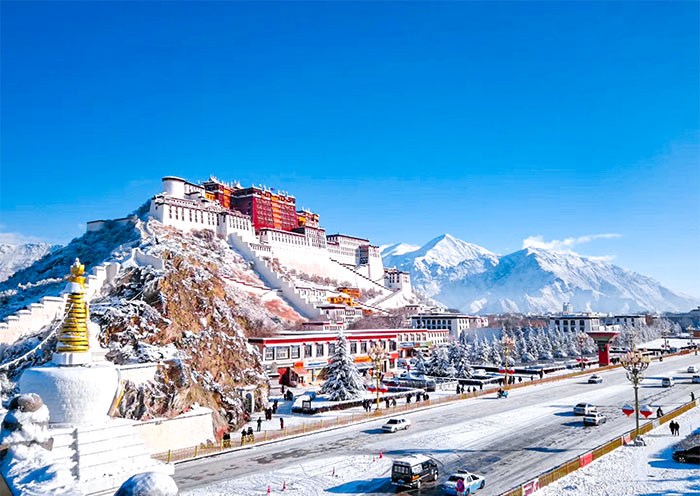
Enhance your Yunnan adventure by connecting it with other top Chinese destinations. Consider adding visits to Sichuan for giant pandas and Jiuzhaigou Valley, Tibet for the Potala Palace, vibrant Hong Kong , or the modern marvels of Shanghai. Explore Beijing’s Great Wall and Forbidden City, or delve into Xi’an to see the Terracotta Army. These destinations can be seamlessly integrated with your Yunnan trip, offering diverse experiences. Each extended itinerary can range from 10 to 16 days , showcasing the best of the cultural and natural treasures of China .
Related Article: How to Plan a Trip to Yunnan: 10 Easy Steps (2024/2025)
9 Days Yunnan Tibet Tour: Ethnic Cultures, Monasteries, Lakes & Old Towns
Travel with Asia Odyssey Travel (AOT) to Explore Yunnan
Embark on a breathtaking journey to Yunnan with Asia Odyssey Travel (AOT) and discover the province's stunning landscapes and rich cultural heritage. As a trusted travel partner with over a decade of experience in the region, AOT offers a wide range of customizable Yunnan tour packages tailored to meet the diverse interests of every traveler. Whether you're seeking a family adventure, a romantic escape, or an in-depth exploration of Yunnan's ethnic diversity and natural wonders, AOT has the expertise to craft the perfect itinerary for you.
Popular Destinations:
- Kunming : The "Spring City" known for its pleasant climate and vibrant flowers.
- Lijiang : A UNESCO World Heritage Site with a well-preserved ancient town.
- Dali : Famous for its beautiful Erhai Lake and the ancient Bai culture.
- Shangri-La : A gateway to Tibetan culture and stunning highland scenery.
- Yuanyang Rice Terraces : Renowned for its spectacular rice terraces.
- Xishuangbanna : Experience the tropical climate, rich biodiversity, and the unique Dai culture, including attractions like the Wild Elephant Valley and tropical rainforests.
- Tiger Leaping Gorge : One of the deepest gorges in the world, offering breathtaking views and thrilling hiking trails along the Jinsha River.
- Jianshui : A historic town known for its ancient architecture, including the well-preserved Jianshui Confucian Temple and the beautiful Zhu Family Garden.
Tour Packages:
- Comprehensive Yunnan Tours : Kunming Lijiang Tour , Kunming Dali Tour , Lijiang Shangri-La Tours
- Yunnan Theme Tours: Yunnan High Speed Train Tours , Adventure , Hiking , Nature , Family , Winter , Photography , Ancient Town , Ethnic Group
- Combined Tours with Nearby Regions : Yunnan and Tibet Tour
Start planning your dream vacation today with Asia Odyssey Travel and experience the beauty, culture, and warm hospitality of Yunnan . Contact us to begin your journey.
If you have any questions about this article, please contact us by submitting the following form and we'll immediately get back to you.
Ask Us for More Information
Related Travel Articles
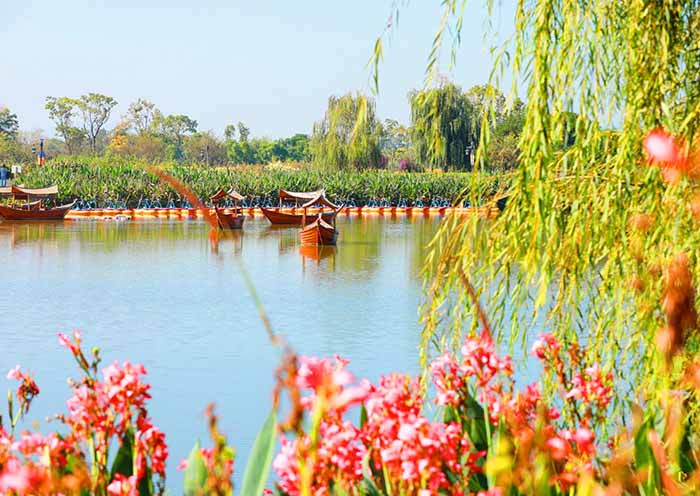
Recommended Related Trips
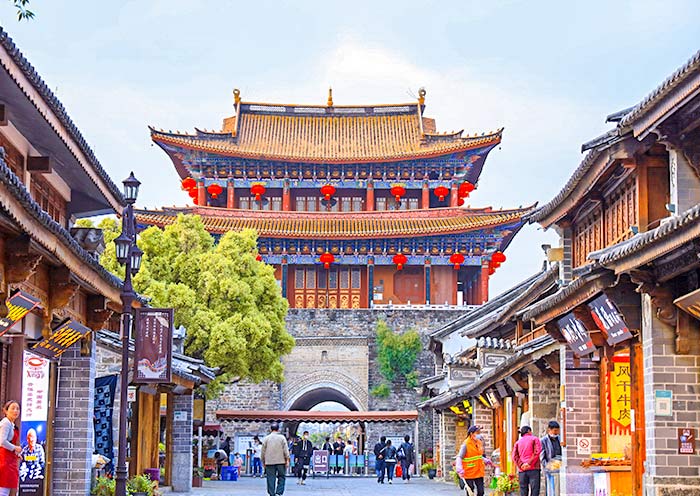
Located in the far southwest of China, Yunnan province borders the Chinese provinces of Guangxi, Guizhou, Sichuan, and the Tibet Autonomous Region, and the countries of Vietnam, Laos, and Myanmar. It spans approximately 394,000 square kilometres. For giving you a better understanding of Yunnan, here we have collected some useful Yunnan maps including Yunnan Province Maps, Yunnan City Maps, Top Attractions Maps, Transportation Maps, etc.
Yunnan Province Maps
- Yunnan Province Map
- Yunnan China Map
- Yunnan World Map
- Yunnan Railway Maps
Yunnan Tourist Map
- Yunnan Attractions Map
- Yunan Topography Map
- Yunnan Road Map
Yunnan City/Prefecture Maps
- Baoshan Maps
- Chuxiong Maps
- Kunming Maps
- Dehong Maps
- Diqing Maps
- Honghe Maps
- Lijiang Maps
- Lincang Maps
- Nujiang Maps
- Qujing Maps
- Wenshan Maps
- Xishuangbanna Maps
- Zhaotong Maps
Top Yunnan Destination Maps
- Kunming Map
- Lijiang Map
- Shangri-La Map
- Xishuangbanna Map
Top Yunnan Attraction Maps
- Stone Forest in Kunming
- Dongchuan Red Land in Kunming
- Dali Ancient Town
- Jizu Mountain in Dali
- Nuodeng Old Town in Dali
- Lijiang Old Town
- Jade Dragon Snow Mountain in Lijiang
- Lugu Lake in Lijiang
- Pudacuo National Park in Shangri-La
- Haba Snow Mountain in Shangri-La
- Baishuitai in Shangri-La
- Tiger Leaping Gorge Map
- Meili Snow Mountain in Diqing
- Three Parallel Rivers in Yunnan
- Yuanyang Hani Rice Terraces in Honghe
china-laos railway map
china-laos railway map...
- China-Laos Railway
Lugu Lake to Daocheng Yading Hiking Tour Map
Lugu Lake to Daocheng Yading Hiking Tour Map...
- Ninglang County
Map of The Ancient Tea Horse Road in Yunnan
The Ancient Tea Horse Road was a network of trade routes stretching across Yunnan, Sichuan, Tibet, and beyond, used primarily for transporting tea and other goods between China and...
- The Ancient Tea Horse Road
Region Map of Lijiang City
Haba Snow Mountain Circumambulating Tour Map
Haba Snow Mountain Circumambulating Tour Map...
- Haba Snow Mountain
- Maps of Tourist Attractions
Location Map of Shangri-La Haba Snow Mountain in Yunnan
Location Map of Shangri-La Haba Snow Mountain in Yunnan...
Attraction Map of Pudacuo National Park in Shangri-La
Attraction Map of Pudacuo National Park in Shangri-La...
Jinghong City Map
Jinghong City Map...
Shangri-La City Map
Shangri-La City Map...
Yunnan Trekking Tours Map
Yunnan Hiking Tours will mainly introduce the best Yunnan Hiking Tour Packages, best places to take a Yunnan Hiking Tour, and some travel tips for Yunnan Hiking Tours. Yunnan...
Distance Map of Yunnan Tourist Destinations
Creating a distance map for tourist destinations in Yunnan Province involves highlighting key locations and their approximate distances from each other. Here’s an overview of distances between some popular...
For detailed tourist maps of Yunnan Province, including attractions, landmarks, and useful information, you can typically find them in several formats and sources: Official Tourism Websites: Websites managed by...
Tips Before Travel
Bring copies of your passport.
Don't assume you're restricted to the main hubs of Beijing and Shanghai, our tours can start from any city.
Register with your embassy
For your safety, please register with the Embassy.
Always have local cash
Exchange some local currency for your trip
Customize a Trip
Start planning your tailor-made holiday to China by contacting one of our specialists. Once enquired, you’ll get a response within 0.5~23.5 hours.

Latest Articles
What is Pu-erh Tea?
The Ancient Tea Horse Road in Yunnan
Fengqing Black Tea City-The Largest Black Tea Market in China
Characteristics and Pros and Cons of Loose Pu-erh Tea vs. Pu-erh Tea Cakes
Raw Pu-erh Tea vs. Ripe Pu-erh Tea: What's the Difference?
Contact info.
Address: Hongxing Building, Lujia Road, Xishan Area, Kunming, Yunnan, China Wechat/QQ: 908400838 Office Call: 86-871-63560579 Email: [email protected] Facebook Page: https://www.facebook.com/YasoTrip
Tel/Wechat/WhatsApp: +8618088243690 [email protected]
Daily: 9:00 am - 6:00 pm
Copyright © 2008 Yunnan Exploration. All rights reserved
Terms and Conditions Visit Yaso Travel Yunnan Travel Guide Yunnan Ethnic Culture 0Yunnan Festivals 0Ethnic Minorities in Yunnan About Us Feedback Blogs
Address: Hongxing Building, Lujia Road, Xishan Area, Kunming, Yunnan, China Wechat/QQ: 908400838 Office Call: 86-871-63560579 Email: [email protected] Facebook Page: https://www.facebook.com/YasoTrip Tel/Wechat/WhatsApp: +8618088243690 [email protected]
- +86 28 85223672
- +86 28 85227275
- +86 191 3897 0032

- Beijing Xian Tours
- Shanghai Beijing Tours
- Hong Kong Guilin Tours
- Hangzhou Suzhou Tours
- Kunming Lijiang Tours
- Shanghai Yangtze Cruise Tours
- Chengdu Tibet Tours
- More Short Stay Tours
- China Tours in January
- China Tours in February
- China Tours in March
- China Tours in April
- China Tours in May
- China Tours in June
- China Tours in July
- China Tours in August
- China Tours in September
- China Tours in October
- China Tours in November
- China Tours in December

- High Speed Trains
- China Yangtze Cruise Tour
- Photography
- Desert Adventure
- Ethnic Villages
- Biking Tours
- Kung Fu Tours
- Heritage Sites Exploration
- China Spring Tours
- China Summer Tours
- China Autumn Tours
- China Winter Tours
Notice! 2024 available cruise routes include 4~5 days Chongqing-Yichang(most classic) and 11~12 days Chongqing-Yichang-Shanghai(limited).

- Best-value Yangtze Cruises
- Top Family-friendly Cruise Ships
- Top 3 Luxury Yangtze River Cruises
- Yangtze River Highlights
- Yangtze River Cruise Routes
- Upstream or Downstream?
- Dining & Drinking
- Accommodations
- On-board Activities
- Yangtze Cruise Booking Steps

- Inner Mongolia

- Fanjingshan
- How to Plan Your First China Tour
- How to Plan Beijing Tour
- How to Plan Xian Tour
- How to Plan Shanghai Tour
- How to Plan Guilin Tour
- How to Plan Sichuan Tour
- How to Plan Family Tour
- 2024 China Travel Ideas
- Best Time to Visit China
- What to Pack for Your China Journey
- Make Payment in China
- Updated China Travel News
- Ultimate Chinese Visa Guide
- Chinese Visa Types
- Chinese Visa Requirements
- Do I Need a Visa for China
- Chinese Visa Application
- Chinese Visa Exemptions
- 144-hour Visa Free
- Shenzhen Visa on Arrival
- Hainan 30-day Visa Free
- Embassies & Consulates
- Invitation Letter
- Useful Visa FAQs & Tips
- Entry Regulations
- Baggage Allowance
- Customs Declaration
- Exit Regulation
- How to Book Train Tickets
- How to Collect Train Tickets
- How to Cancel & Alter Train Tickets
- How to Read Train Tickets
- China High Speed Train Types
- Seats Class & How to Choose
- Friendly Facilities on the Train
- The Train Station Departure Process
- Available Food and Drinks on the Train
- Western Toilets on the Train
- Luggage Racks & Baggage Allowance
- Beijing Train Stations
- Shanghai Train Stations
- Guilin Train Stations
- Xian Train Stations
- Chengdu Train Stations
- Hong Kong West Kowloon Railway Station
- Beijing - Xian
- Beijing - Shanghai
- Guangzhou - Shanghai
- Shenzhen - Shanghai
- Chengdu - Xian
- Shanghai - Hangzhou
- Shanghai - Xian
- Chengdu - Chongqing
- Kunming - Lijiang
- Beijing Capital International
- Beijing Daxing International
- Shanghai Pudong International
- Shanghai Hongqiao International
- Guangzhou Baiyun International
- Hangzhou Xiaoshan International
- Chengdu Tianfu International
- Chengdu Shuangliu International
- Xian Xianyang International
- Shanghai - Beijing
- Hong Kong - Shanghai
- Guangzhou - Beijing
- Chengdu - Lhasa
- Shanghai - Guilin
- Shanghai - Sanya
- Travel in Spring Season
- Travel in Summer Season
- Travel in Autumn Season
- Travel in Winter Season
- Weather in January
- Weather in February
- Weather in March
- Weather in April
- Weather in May
- Weather in June
- Weather in July
- Weather in August
- Weather in September
- Weather in October
- Weather in November
- Weather in December
- Top 10 China Destinations
- Top 15 Things to Do
- China World Heritage Sites
- Top 10 Best Natural Beauties
- Top 10 Museums in China
- Top 10 Old Towns & Villages
- Five Great Mountains in China
- Top 10 Monasteries & Temples
- Top 10 Ski Resorts
- Top 10 Beautiful Lakes in China
- 7 Best Beaches in Sanya
- Top 6 Beautiful Waterfalls
- Panda Volunteering
- Having fun on Ice and Snow Festival
- About Us Who We Are Our Team Why Travel with Us Feedback & Reviews Travel Stories Travelers' Gallery Payment Guide Customer Support Contact Us
- Tour Experiences
Destinations
- Travel Guide
Things to Do in Yunnan
As Yunnan enjoys the respectable reputation of the “Colorful Yunnan” and it has both brilliant culture as well as profound history, you can enjoy the most unforgettable time taking a travel in this province in the South of China.
Lijiang, Dali, Shangri-La, Yuanyang, Kunming, etc. there are too many destinations to pay a visit to see their beauty. During your trip here, you will find every moment is full of surprise and pleasure, from the fantastic natural scenery of mountains and lakes, to the precious historic relics for hundreds and even thousands of years, from the fabulous special buildings of Yunnan characteristics, to the authentic folk culture of local residents…
Recommended Best Yunnan Tour:
> 8 Days Classic Yunnan Tour" href="yunnan-tours/classic-yunnan-tour.html" target="_blank">▶ 8 Days Classic Yunnan Tour (Kunming / Dali / Lijiang / Shangri-La)
▶ 11 Days Amazing Yunnan Tour (Kunming / Yuanyang / Jianshui / Kunming / Dali / Lijiang / Shangri-La)
In order to help you better know about the most popular places to go in this province, we’ve selected the TOP 25 Yunnan Attractions for you as following. Let’s go check them to start your Yunnan Tour !
Attractions & Featured Activities for Major Cities in Yunnan:
- Kunming Attractions
- Lijiang Attractions
- Dali Attractions
- Shangri-La Attractions
- Yuanyang Attractions
- Xishuangbanna Attractions
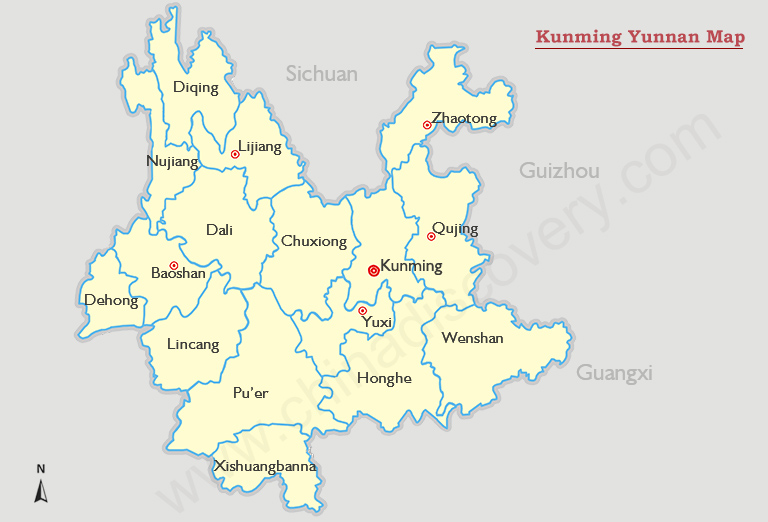
Yunnan Attraction Map
- Top Attractions
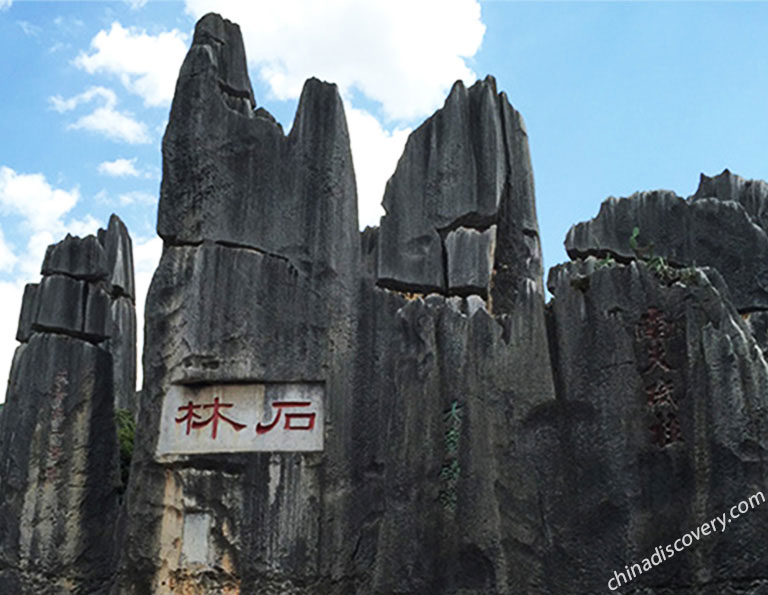
No.1: Stone Forest
Type: National Geography Park, World Nature Heritage Site
City: Kunming
Stone Forest , 120 km from the downtown Kunming city, is regarded as one of the “Chinese four natural wonders”. This historical scenic area shaped 270 million years ago gathers the various kinds of stones together in the area of 350 square km. You can enjoy the very high stones over 40 m, round and sharp ones forming a big forest, which will make you surprised at the amazing karst landform in this tourist heaven.
>> 3 Days Kunming Tour to Stone Forest & Jiuxiang Cave
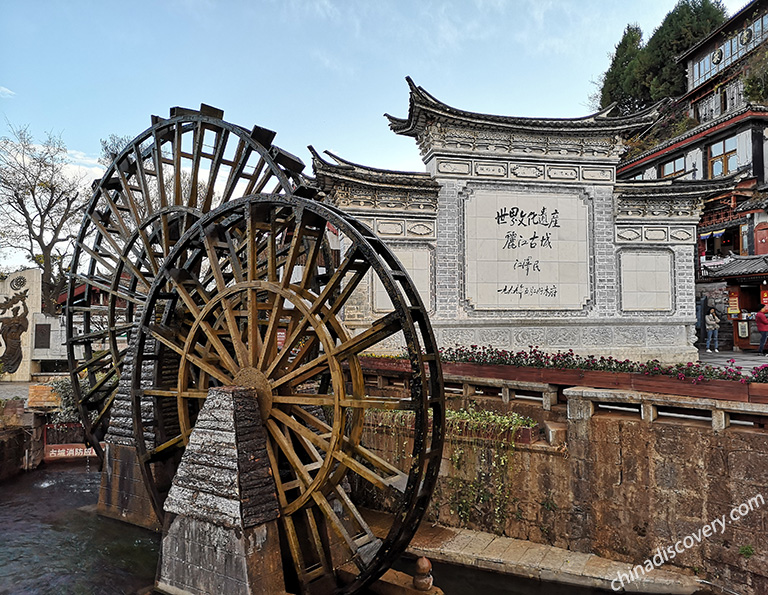
No.2: Lijiang Ancient City
Type: World Heritage Site, Ancient City
City: Lijiang
Being one of the only 2 ancient cities listed as the World Cultural Heritage in China, Lijiang Ancient City is a “must go” place. Its more than 800 years history enables the ancient city be filled with rich antique flavor, therefore, you can not only see those very fancy Mu’s Residence and other old houses, bridges, attractive natural landscape in places like Black Dragon Pool, but also be immersed in the featured ancient romance of Lijiang people and the shining culture of Naxi people.
>> 3 Days Classic Lijiang Tour
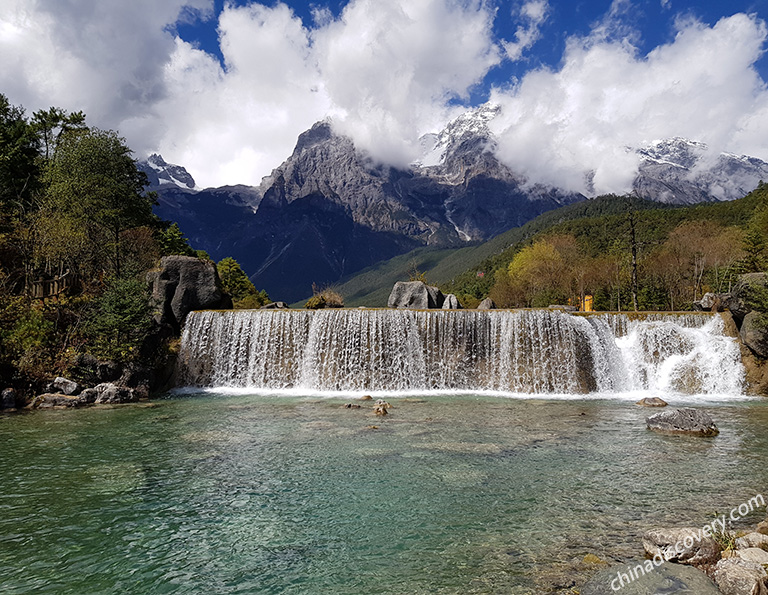
No.3: Jade Dragon Snow Mountain
Type: Mountains, Nature/ Wildlife Areas, Ballets
30 km from Lijiang downtown, Jade Dragon Snow Mountain has a very sacred status among the local Naxi people. As the southernmost mountain and a well-known mountain in China, Jade Dragon Snow Mountain is rich in multiple types of glaciers, eye-pleasing sightseeing of snow of its 13 peaks, distinct beautiful scenery in all seasons, etc. Moreover, you will be amazed at the large-scale live-action performance in Ganhaizi, which provides you the real history and life in Lijiang this charming destination.
>> 3 Days Lijiang Cultural & Natural Tour with Jade Dragon Snow Mountain
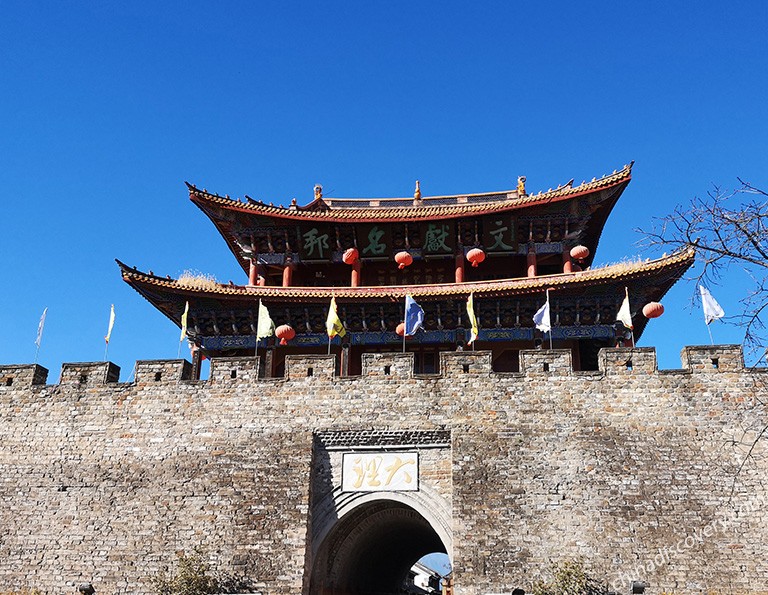
No.4: Dali Ancient City
Type: Ancient Town, Historic Sites
City: Dali
Dali Ancient City is a famous ancient city in Yunnan and even China, which attracts many visitors to long for a visit to this purified place. Roaming in this antique city of more than 600 years, you can see the City Wall, Gate-towers, old streets, traditional courtyards full of local folk culture, and also, you can admire the vigorous flowers blooming under the cerulean sky. That is really a great place to pay a visit and calm your heart!
>> 3 Days Dali Tour with Cangshan Mountain Hiking
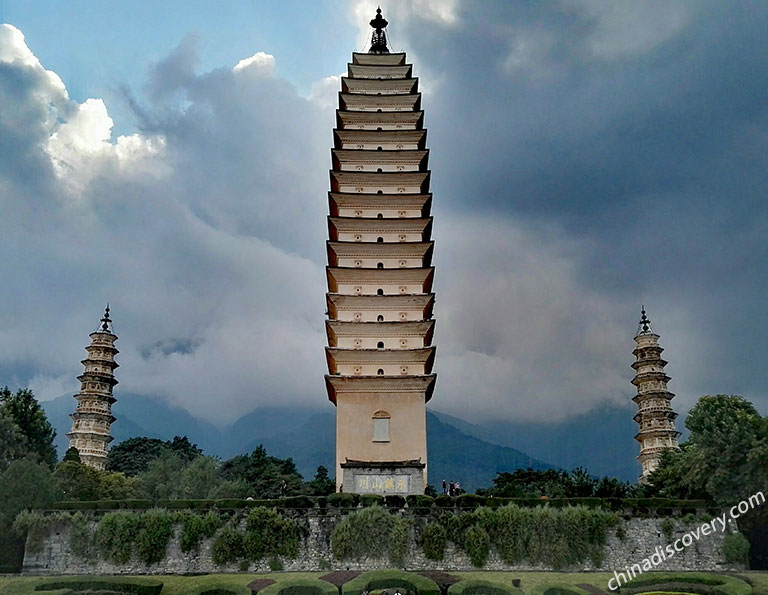
No.5: Three Pagodas & Chongsheng Temple
Type: Cultural Relics, Scenic Spots
The Three Pagodas & Chongsheng Temple was first built in the 9th and 10th centuray, and now it is both one of the oldest ancient buildings in China and the symbolic building of Dali. For their special design, you will see these three pagodas like the ballpoint pens standing there together, which creates a fantastic landscape painting with the wide Erhai Lake and the magnificent Cangshan Mountain.
>> 3 Days Dali Classic Tour
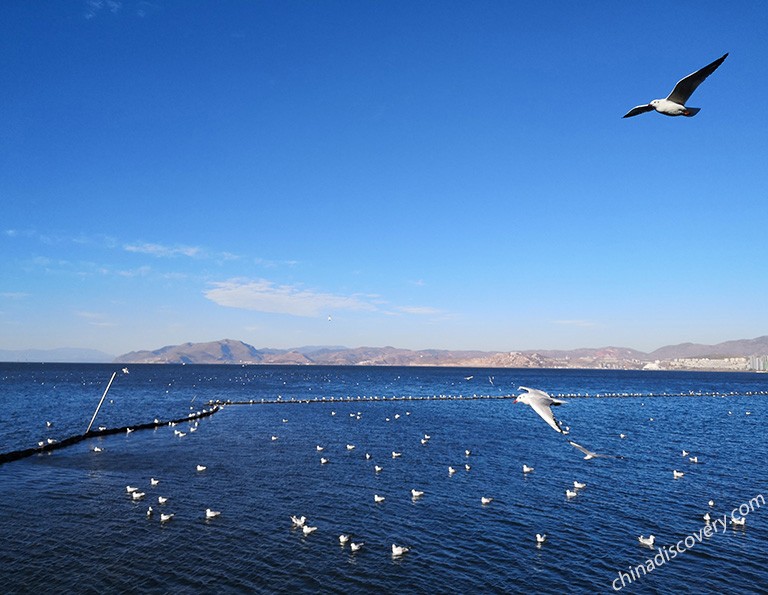
No.6: Erhai Lake
Type: Natural Landscape,Scenic Spots
Erhai Lake at the suburb of Dali city is the mother river of local Bai people. Spreading for about 256 square km, this lake is a famous sightseeing area with fancy natural scenery. Boating on the lake, you can appreciate the transparent water surface, see the birds flying above in the blue sky, and admire the lush trees and colorful flowers dancing in the wind. You will be addicted in this idyllic scene that nearly only seen in paintings.
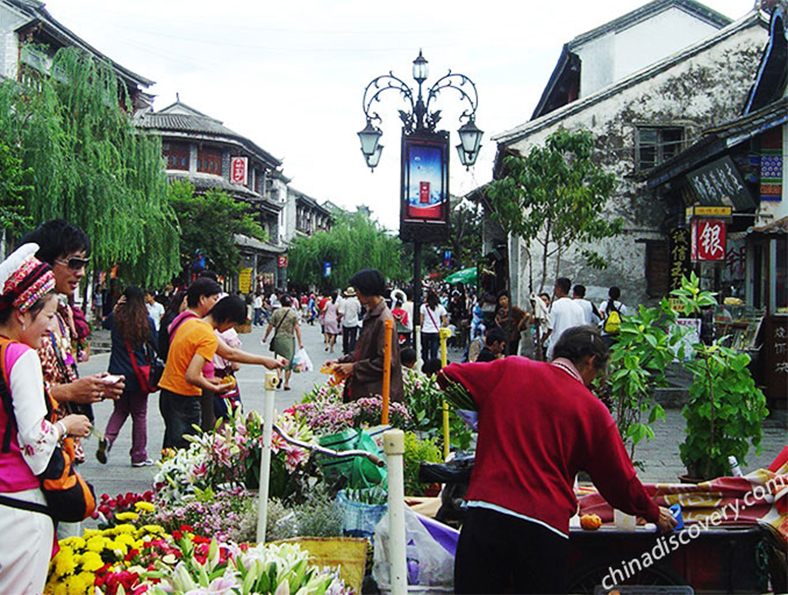
No.7: Xizhou Village
Type: Historical Architectures, Ancient Town
Xizhou Village is an ancient town in Dali, Yunnan faces Erhai on the east and rests on Cangshan in the west, featured with numerous Bai classical residences, famous local dishes - Xizhou Baba, and Bai ethnic customs and activities like Three-Course Tea and Tie-dyeing. It’s a thousand-year historical Bai ethic ancient town that can’t be missed by tourists.
>> 4 Days Dali Leisure Vacation for Nature & Culture Savory (in Luxury Boutique Hotel)
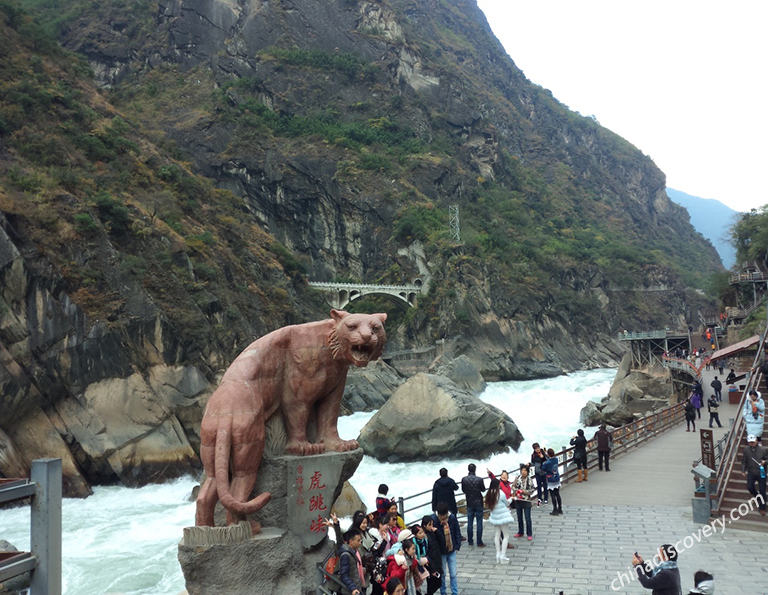
No.8: Tiger Leaping Gorge
Type: Canyons
City: Lijiang & Shangri-La
Tiger Leaping Gorge covering Shangri-La and Lijiang is one of the deepest gorge in China and very famous for its dangerous feature, which is divided into the upper, middle and the lower sections. You can take a hike along this one of the World Top 10 Classic Trekking Ways to feel the adventurous landform, appreciate the very turbulent water. And you can experience the exciting giant fall between the scarps.
>> 5 Days Lijiang Tour with Tiger Leaping Gorge Hiking
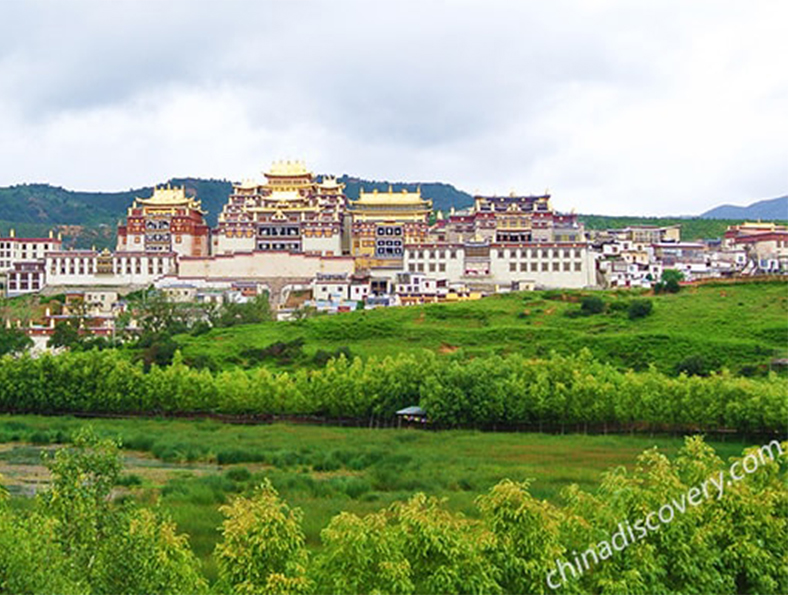
No.9: Ganden Sumtseling Monastery (Songzanlin Monastery)
Type: Religious Sites
City: Shangri-La
Ganden Sumtseling Monastery in Shangri-La is largest Tibetan Buddhist monastery in Yunnan and has a vital status among this area. Therefore, it is reputed as the “Little Potala Palace”. Built more than 500 years ago, the Ganden Sumtseling Monastery looks like a gold, which enables you to appreciate the special design of this grand building. Besides, you can see many relative historic relics, know more about the essence of the respectable Buddhism and enjoy the charming natural scenery.
>> 5 Days Kunming Exploration & Paradise Trip to Shangri-La
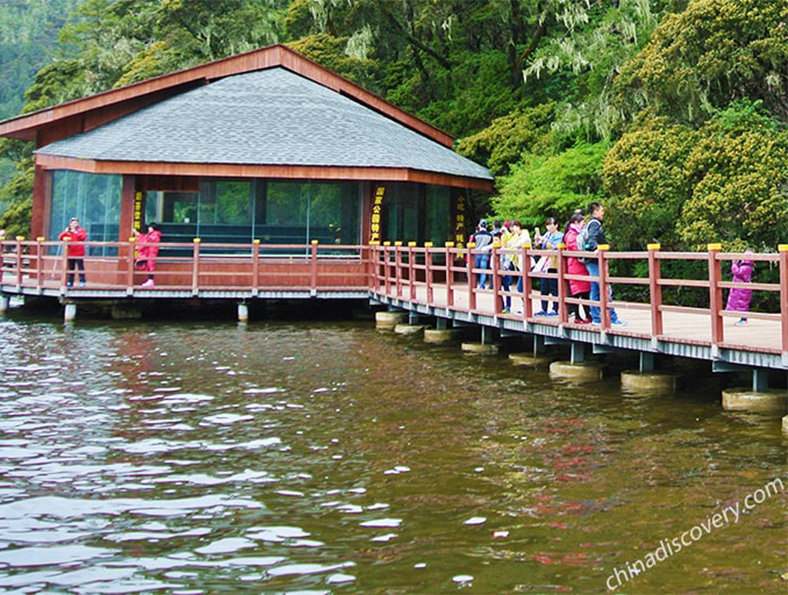
No.10: Pudacuo National Park
Type: National Parks, Bodies of Water, Nature/ Wildlife Areas
City: Shangri-La
Pudacuo National Park , 22 km from Shangri-La is a vital tourist spot in this area and the first national park in China. Take a travel to Pudacuo, you have an unforgettable time, enjoying the lakes, wetlands, forests, meadows, streams, valleys, sapphire sky, marshmallow-like clouds, rare species, and well-preserved original ecological environment, etc. You will find as if time has ceased and what is really the fairyland under the heaven.
>> 3 Days Best Shangri-La Tour
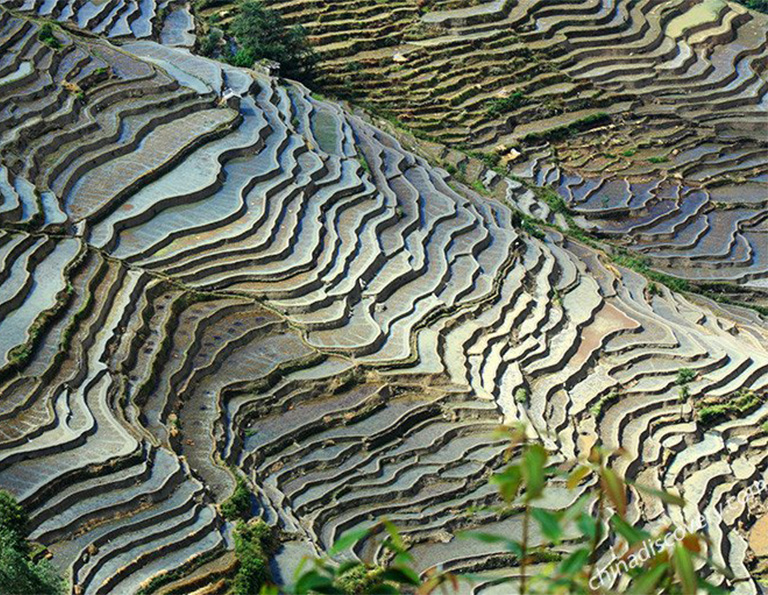
No.11: Yuanyang Terrace
Type: World Cultural Heritage, Natural Scenery
City: Yuanyang
Covering a super wide area of about 1.7 million acre, Yuanyang Terrace in Yuanyang County is a fabulous landscape painting carved by the local Hani people for over 1300 years. Added to the World Heritage List, Yuanyang Terrace has very rare scenery in the world, so you can be immersed in the over 3000 stairs on the mountain from the light green to emerald color, from the reflection of the clear sky to the refreshing air…
>> 3 Days Yuanyang Rice Terraces & Hani Culture Tour
>> 4 Days Yuanyang Rice Terrace Photography Tour
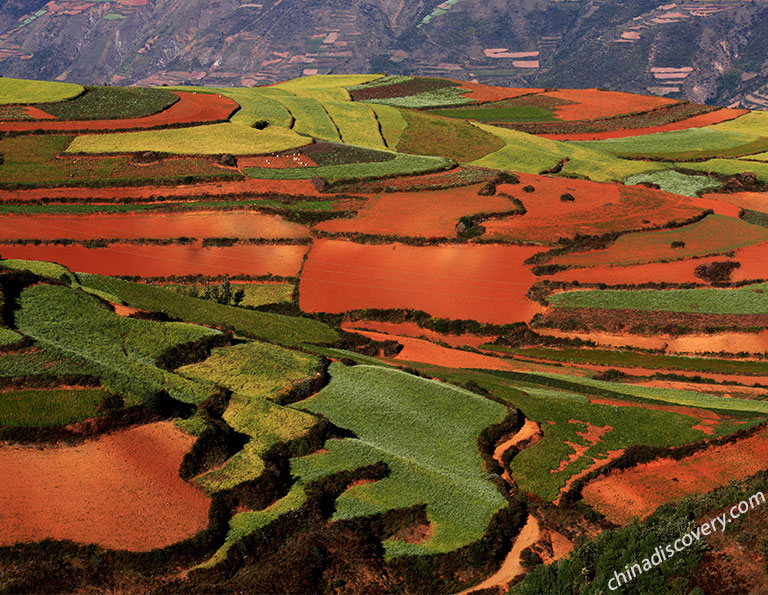
No.12: Dongchuan Red Land
Type: Natural Landscape, Scenic Spots
Located at the northeast of Kunming city, Dongchuan Red Land is a wonderful place to get close to the nature’s cool fabricate and shot for a series of excellent photos. Being the most magnificent red land besides that in Rio de Janeiro, Dongchuan Red Land shows amazing sightseeing before you, with layers of red colors from bright to dark, which is extremely rare.
>> 4 Days Kunming & Dongchuan Red Land Tour
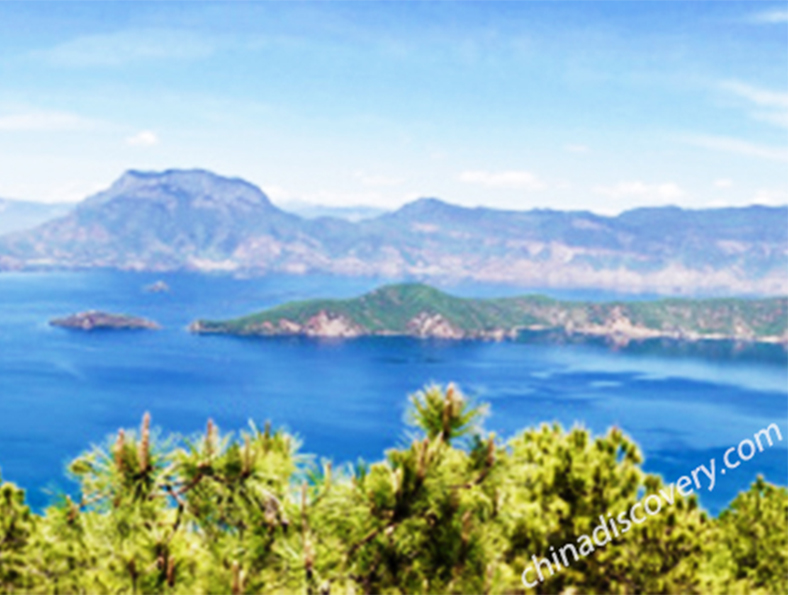
No.13: Lugu Lake
Type: Historic Sites, Bodies of Water
City: Lijiang
Belonged in Lijiang city, Lugu Lake attracts a great number of visitors for its fascinating natural scenery and particular stories of Mosuo people. Since Lugu Lake is known as the Pearl of the Plateau, you can appreciate the very appealing blue sky, take the slow-canoe to ramble on the peaceful mirror-like lakes and experience the culture in this “Kingdom of Women”.
>> 5 Days Lijiang & Lugu Lake Tour
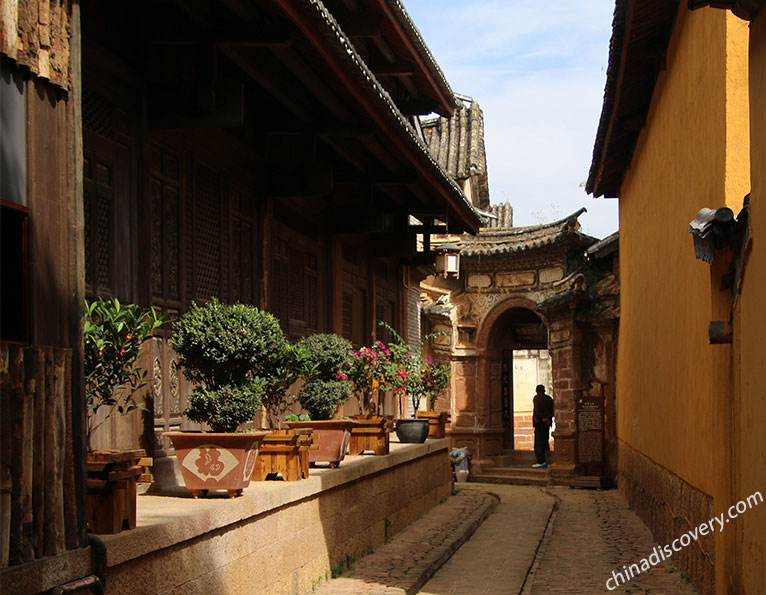
No.14: Shaxi Ancient Town
Shaxi Ancient Town in Dali city is an authentic ancient town with highly rich antique atmosphere and extraordinarily long history of over 2400 years. Wandering in this old town, you can enjoy every moment to see the old streets, old bridges, old temples, old stages, old shops, old trees, old gates, etc. Since the Shaxi Ancient Town is a stop on the Ancient Tea Horse Road and the Sideng Sifang Street is a fair prosperous for thousands of years, you will find the visit here so unforgettable!
>> 6 Days Dali Lijiang Tour with Shaxi Ancient Town
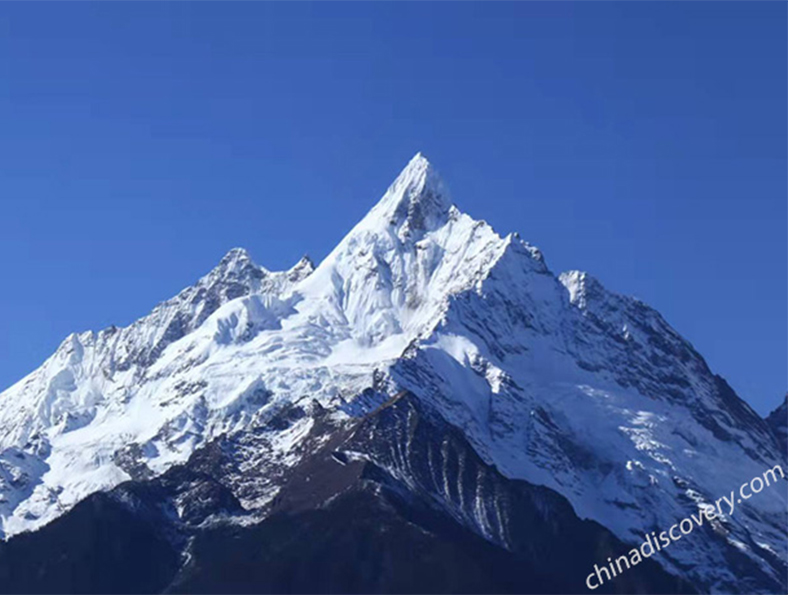
No.15: Meili Snow Mountain
Type: Mountains, Nature/ Wildlife Areas
Standing in Shangri-La, Meili Snow Mountain is the highest mountain in Yunnan, which is 6740 meters above the see. Visit this sacred mountain, you can both appreciate the charming snow sightseeing and be marveled at the breathtaking natural scenery of the sunrise, when the snow mountain changes her color on the peak from orange, yellow and pink to white and golden as the sunshine glows. It is really lucky to see this rare beautiful scene that is eager many visitors.
>> 6 Days Shangri-La & Meili Snow Mountain Pilgrimage Tour
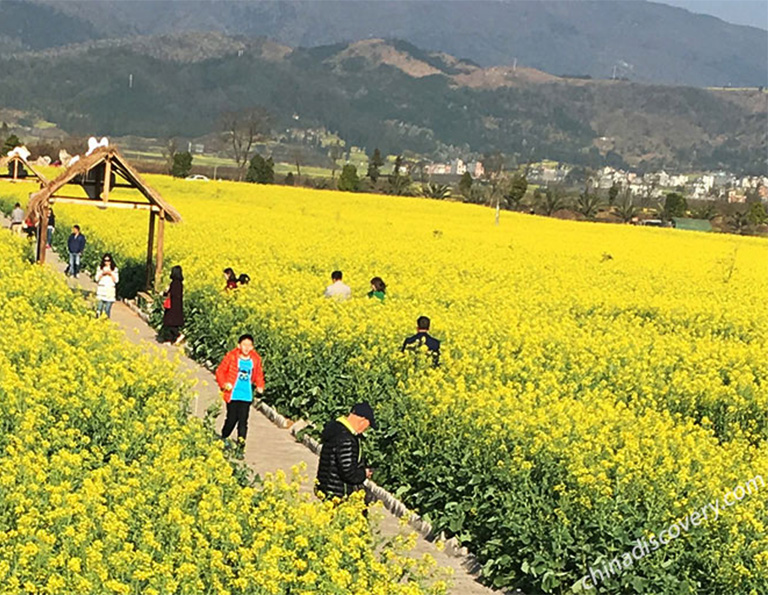
No.16: Luoping Rapeseed Flowers
Type: Scenic Spots, Natural Scenery
Location: 213 km from Kunming Downtown
At the joint of Yunnan, Guizhou and Guangxi, Luoping is called “the East Door of the Yunnan”. The top reason to come to Luoping is for the Golden Rapeseed Flowers Sea which is blooming prosperously on the land of Luoping in spring usually falling in the late January to the early April every year. Many typical Karst hills dotted on the flat farmland and when the green land is turning into the golden flowers sea, Luoping has become “the Largest Natural Garden in the World”.
>> 4 Days Kunming Luoping Canola Flowers Tour
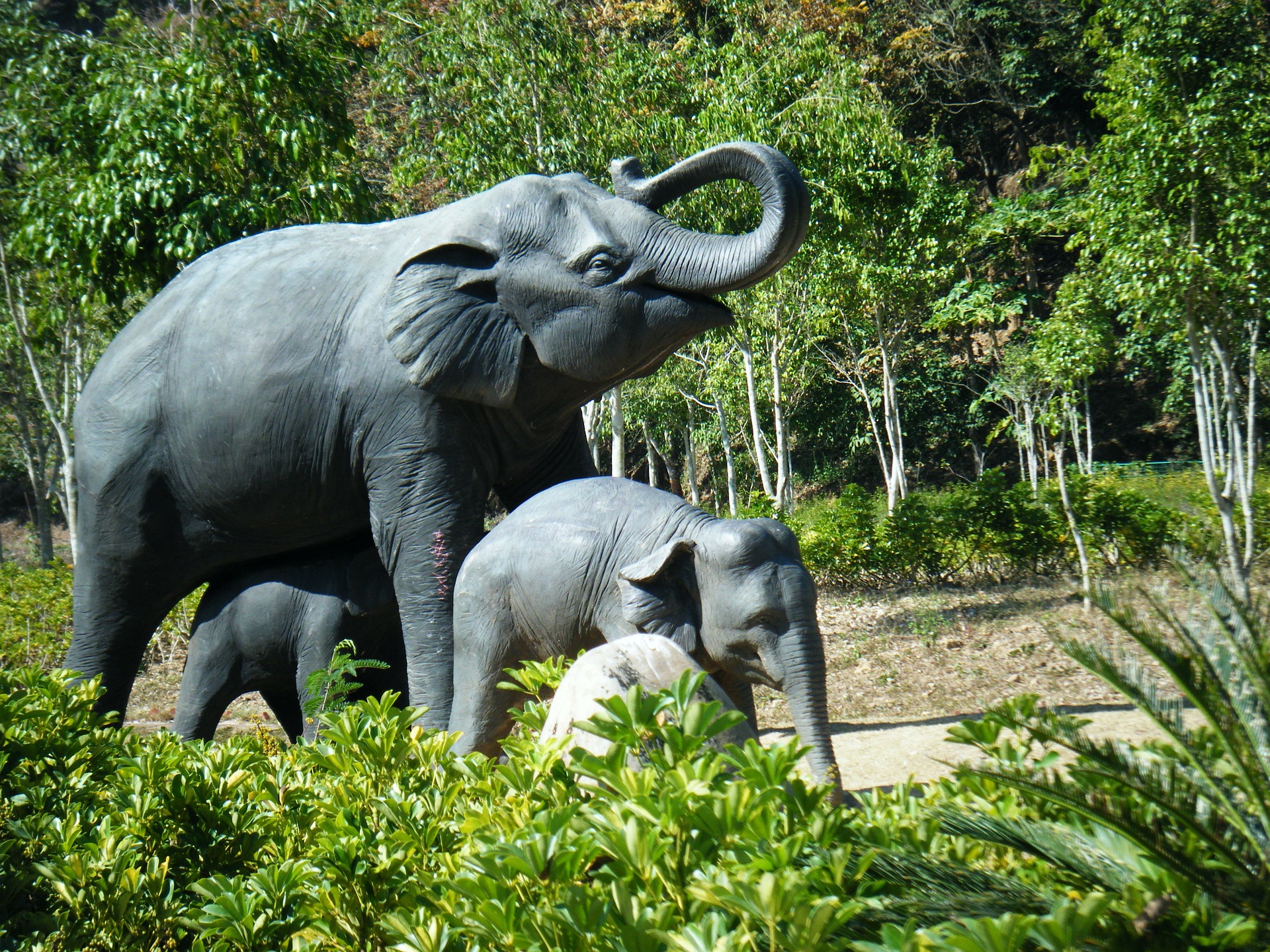
No.17: Wild Elephant Valley
Type: National Animal Protection Park, Forest Park
City: Xishuangbanna
Situated in Xishaungbanna county of Yunnan, the Wild Elephant Valley is not only a great place to see the 300-350 giant Asian elephants roaming, showering, playing, and so on, but it is also in abundant numbers of other birds and beasts, like wild ox, green peafowl, macaque, etc. Besides, you will feel the special sightseeing of tropical rainforest in the luxuriant forest park.
>> 4 Days Xishuangbanna Tour with Tropical Flavor & Dai Culture
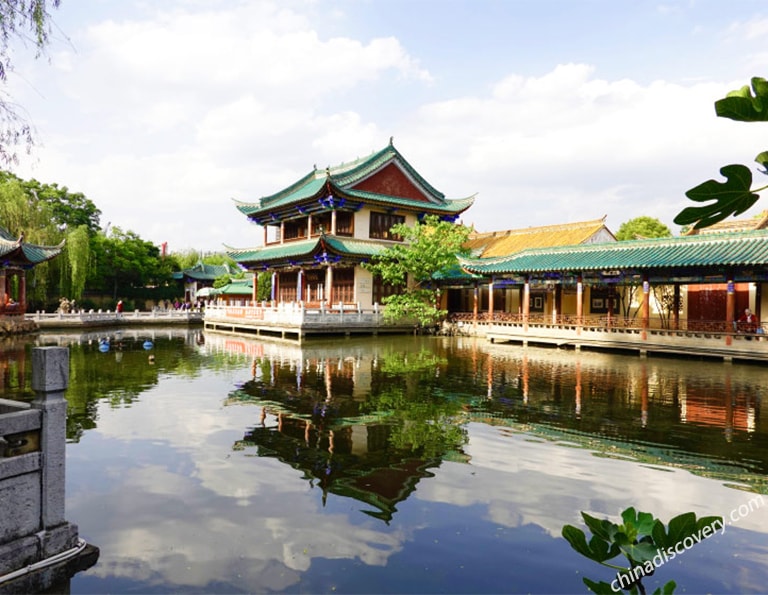
No.18: Kunming Green Lake Park
Type: Garden, Lake, Sightseeing Place
Kunming Green Lake in the downtown Kunming city is a hot tourist and leisure place for both local people and other tourists. You can not only see the real daily life of Kunming residents spending their time there chatting, but also appreciate the eye-pleasing sightseeing. Various kinds of spring tulips, summer lotus flowers, and the adorable winter black-headed gulls and so forth draw many visitors.
>> 5 Days Kunming Lijiang High Speed Train Tour
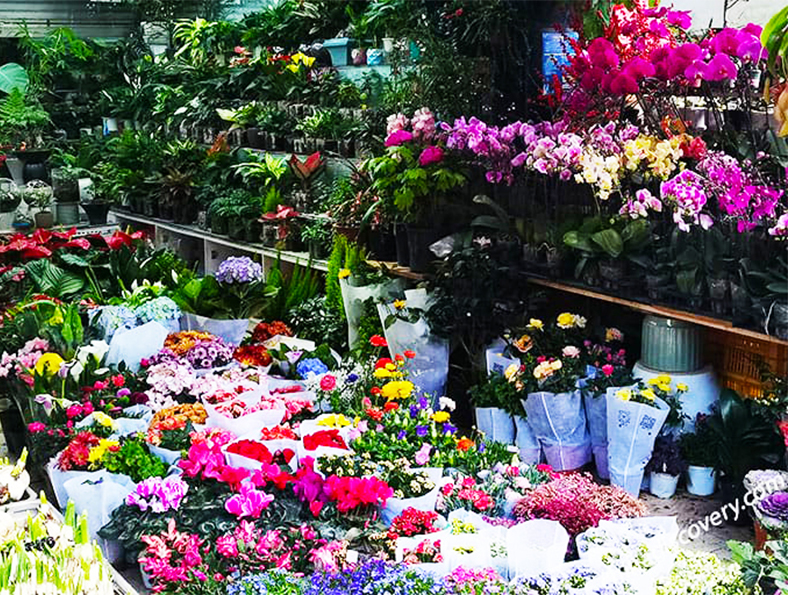
No.19: Kunming Birds and Flowers Market
Type: Market, Pedestrian Street
City: Kunming
Since Birds and Flowers Markets are abundant in Kunming and mark a feature of this city, you can select one market to have fun. Taking a slow walk on the old streets, you can see many local people buying their favorite flowers, selecting the adorable fishes, and compare the vigorous birds, etc. which is both of lots of fun and get close to the local life culture.
>> Learn More about Ethnic Markets in Yunnan
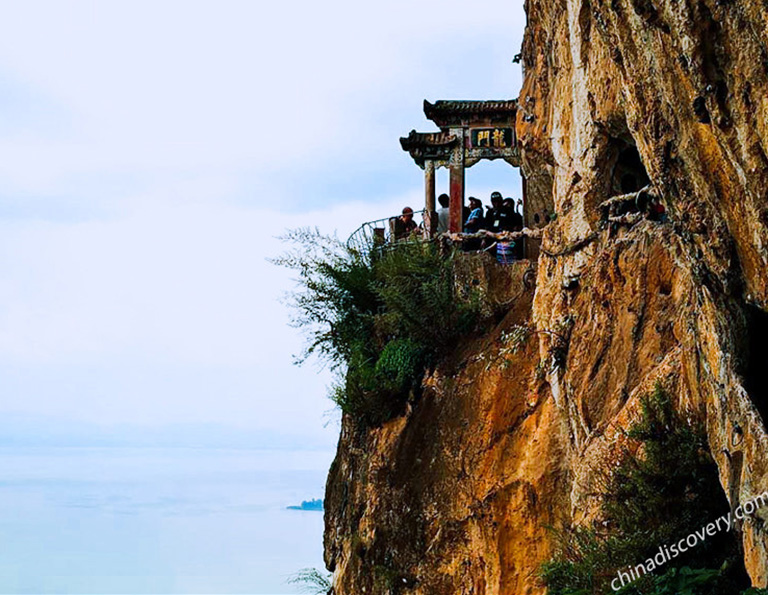
No.20: Kunming Western Hill (Xishan)
Type: Historic Sites, Scenic Spots
Distance: 30 km from Kunming Downtown, about 0.5 hour’s driving
From ancient times, Western Hill enjoys the fame with its excellent scenery, dense forests, prosperous flowers and peaceful surroundings. It also known for another name: Sleeping Beauty Hill. View from southeast of Kunming, Western Hill is like a beauty laying on her back beside Dianchi Lake, hence comes the name.
Kunming Western Hill is a large forest park with many scenic spots including Huating Temple, Taihua Temple, Sanqing Pavilion and Dragon Gate. Among them, Huating Temple is the biggest temple in Kunming, and Dragon Gate is the largest and most beautiful Taoism Cave in Yunnan. You can view cultural relics and fabulous sceneries here.
>> 3 Days Kunming Spring City Tour
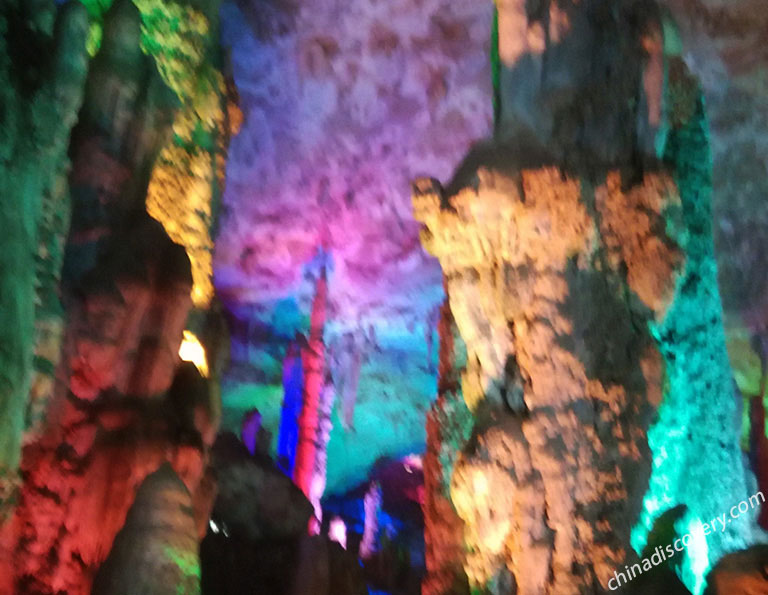
No.21: Jiuxiang Scenic Area
Location: 105 km from Kunming Downtown, about 1.5-2 hours’ driving
Situated in Yiliang County, Kunming, Jiuxiang Scenic Area is known as the karst caves clusters. With over 200 square kilometers, Jiuxiang Scenic Area has hundreds of large and small caves, including Wolong Cave, Bat Cave, Lion Cave and more attractions. It is the largest and most exotic cave landscape community system. Some cave landscapes are rarely to be seen in other places. Outside these caves, there are natural sceneries of thrilling gorge and Yincui gorge.
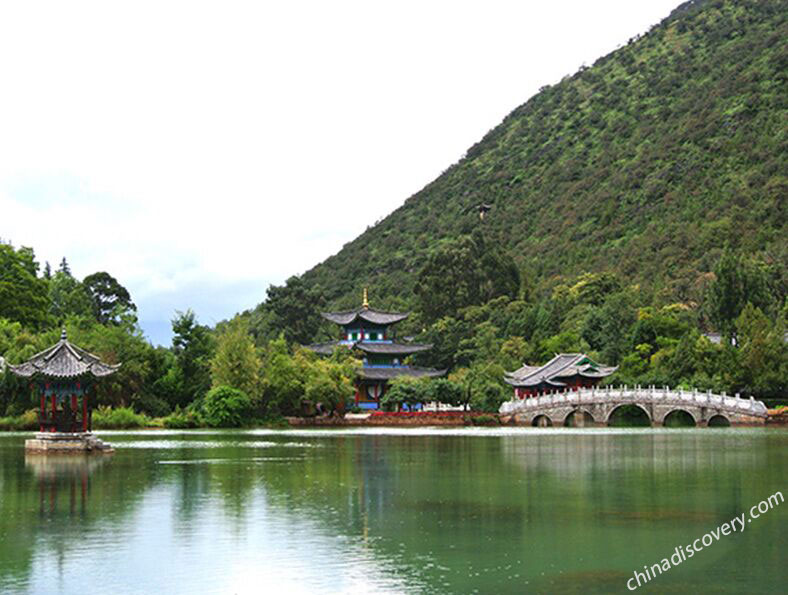
No.22: Black Dragon Pool Park
Type: Park, Natural Site, Cultural Site
Location: 1 km from Lijiang Old Town
Black Dragon Pool or called Yuquan Park is a popular part of Lijiang Old Town. This large scenic park with some peculiar pagodas and pavilions with flying eaves and stone bridge and some lovely ponds is great for some leisure and fresh walk. More importantly, the best sightseeing position there enables you to take the famous photo of the Jade Dragon Snow Mountain with the traditional styled building together.
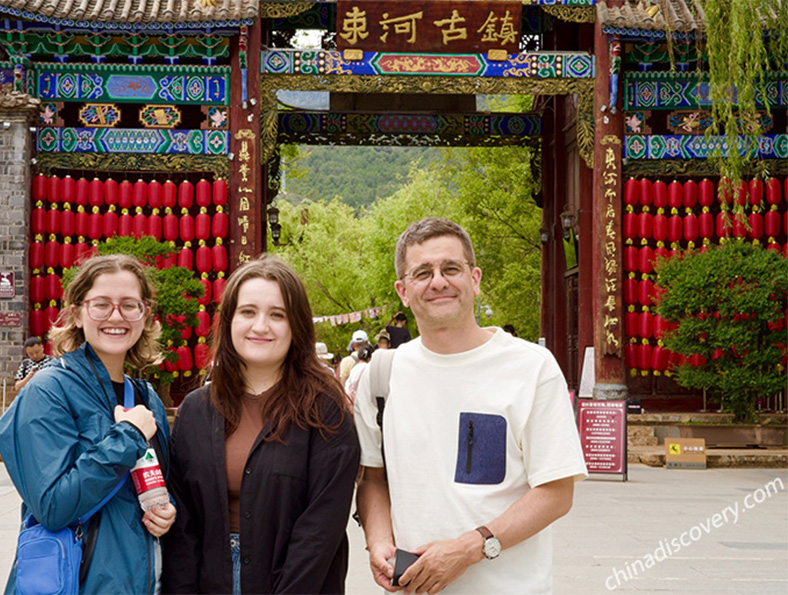
No.23: Shuhe Ancient Town
Type: Historic Sites
Shuhe Ancient Town is situated near Jade Dragon Snow Mountain, in Lijiang. It is not only an especially important well-preserved county on the Ancient Tea Horse Way, but also one of the precious places featured with rich Naxi culture. Strolling on this respectively tranquil ancient town, you will feel the comfortable peace on the old flagging, slowly running clear water, winding roads, old houses, etc.
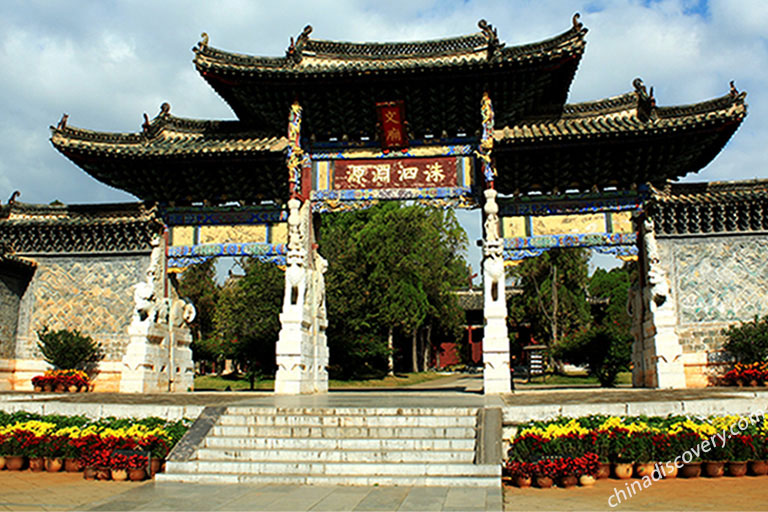
No.24: Jianshui Ancient City
Type: Ancient City, Cultural & Hisrotical Site, Sightseeing Place
Jianshui Ancient City in Yuanyang is historic cultural ancient city of over 1200 years. Since this famous old city is rich in culture, you can appreciate over 50 perfectly protected featured old buildings with rich local specialties, which gives the city a reputable name of ancient building museum. Take a trip to experience the local folk characteristics and shot for some fantastic pictures of the charming houses, then this will be a memorable part in your life.
>> 4 Days Kunming Jianshui Tour by High Speed Train
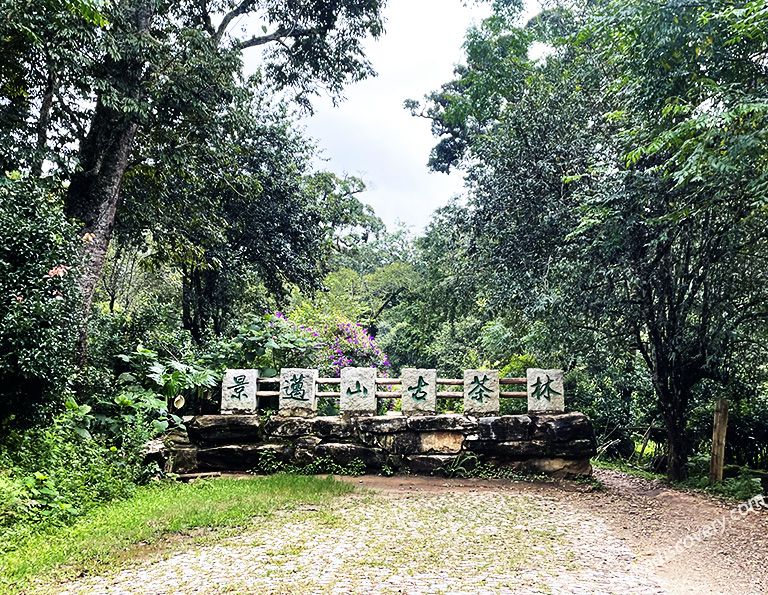
No.25: Jingmai Mountain
Type: World Heritage Sites, National AAAA Tourist Attractions, Tea Culture
City: Pu'er
Cultural Landscape of Old Tea Forests of the Jingmai Mountain in Pu’er is listed as China's 57th World Heritage Site in 2023, and also the world's first World Heritage Site of tea culture. With nearly 2,000 years of tea cultivation history, Jingmai Mountain in Pu’er has old tea forests area of 32,000 acres and more than 3.2 million old tea trees, which is the largest, best-preserved and oldest artificial cultivation old tea garden and the existing tea living fossil community.
>> 3 Days Escape Tour to World Heritage Jingmai Mountain
6 Days Untamed Yunnan Tour from Tropical Xishuangbanna to Jingmai Mountain Ancient Tea Plantations
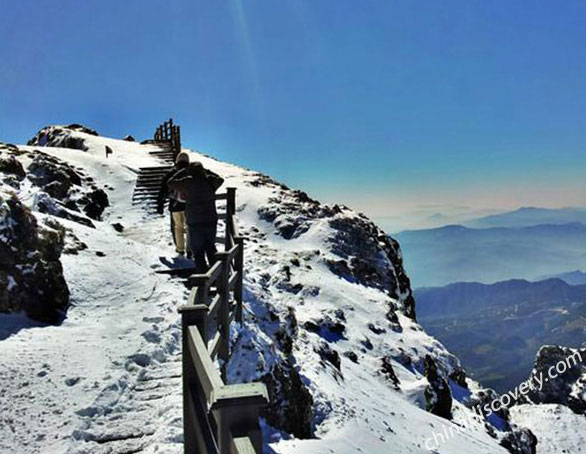
No.26: Jiaozi Snow Mountain
Location: 166 km from Kunming Downtown
Located in the northwest of Dongchuan District, Kunming, Jiaozi Snow Mountain has a natural landscape with magnificent mountains, rich flora and fauna species. It’s named after the mountain peak shaped like a bridal sedan chair. With 4247 meters above sea level, the scenic views are fascinating, including sea of azalea flowers, mountain waterfalls and shapes of mountain lakes. All are the must-sees when you tour Jiaozi Snow Mountain.
>> 5 Days Kunming Spring Nature Tour with Jiaozi Snow Mountain

No.9: Confucius Temple
Type: Cultural site, Museum
Recommended Length of Visit: 1 hour
For Confucius fan, you will never miss the trip to Confucius Temple and Guozijian Museum. Less crowded than other sites, you can learn a lot about Confucius while enjoying the quiet atmosphere here. Even you know nothing about Confucius, you will know more about him and his spirit in the East and the West Halls that talked about Confucius's life, philosophies, impact, legacy, etc in perfect English.

No.10: Olympic Sites
Type: Arenas
The Bird's Nest is a marvel of architecture, especially for architecture-lovers. You will be impressed by the amazing structure, and great design. The best time to visit will be in the afternoon till night, for the structures will light up at night.
Keep Reading on Yunnan Attractions
- Kunming 8 Best Things to Do
- Lijiang 15 Best Things to Do
Useful Yunnan Travel Articles
- Yunnan Travel Guide
- Kunming Travel Guide
- Lijiang Travel Guide
- Dali Travel Guide
- Shangri-La Travel Guide
- Yuanyang Travel Guide
- Xishuangbanna Travel Guide
- Luoping Travel Guide
- Tengchong Travel Guide
- Yunnan Tours
- Kunming Tours
- Lijiang Tours
- Shangri-La Tours
- Yuanyang Tours
- How to Plan a Yunnan Tour
- Top 10 Places to Visit in Yunnan
- Yunnan Transportation
- Yunnan Weather & Seasons
- Yunnan Maps
- Yunnan Minorities
- Yunnan Ethnic Festivals
- Yunnan Ethnic Markets
Recommended Yunnan Tours
Top 3 Yunnan tours chosen by most customers to explore Yunnan in the best way. Check the detailed itinerary, or tailor your own trip now with us.
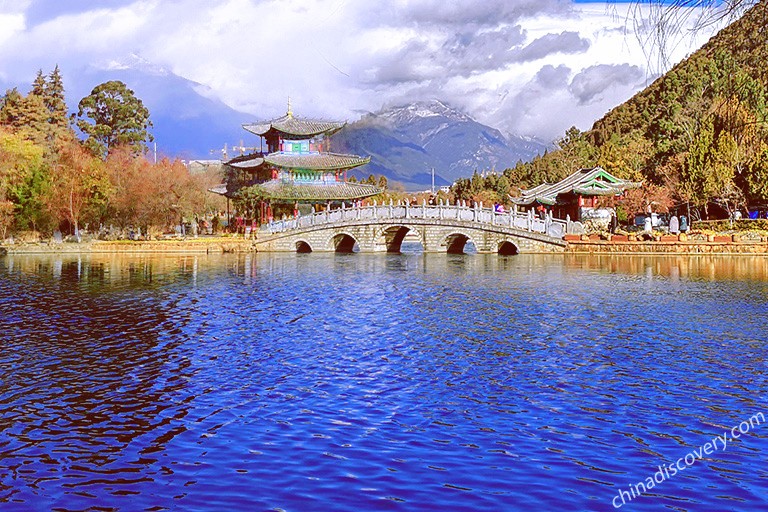
6 Days Best of Yunnan Tour (Lijiang, Shangri-La, Kunming)
Lijiang / Shangri-La / Kunming
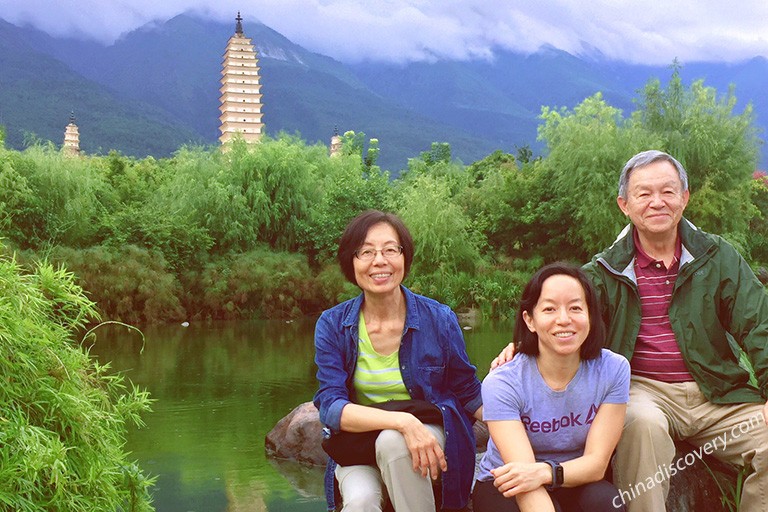
8 Days Classic Yunnan Tour
Kunming / Dali / Lijiang / Shangri-La
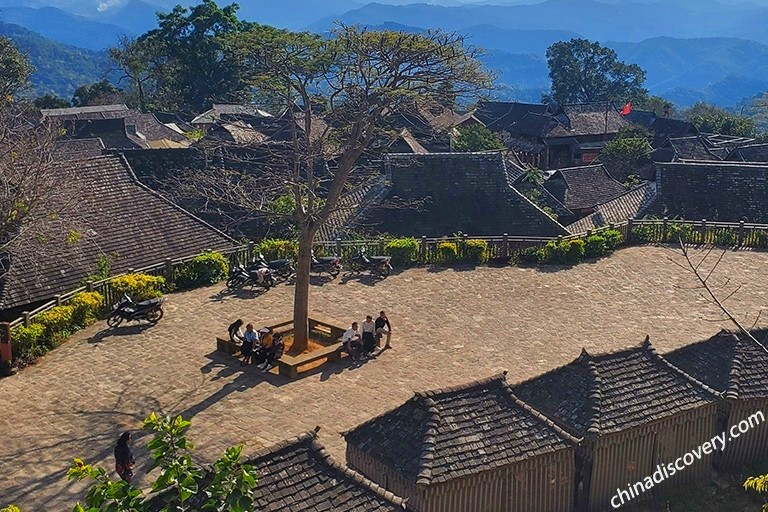
6 Days Untamed Yunnan Tour
Xishuangbanna / Jingmai Mountain
Start planning your tailor-made holiday to China by contacting one of our specialists. Once inquired, you’ll get a response within 0.5~23.5 hours.

- Affordable and valuable price
- 100% tailor-made packages
- Highly rated customers reviews
- Efficient customer support
China Tours
- Top 10 China Tours
- Classic China Tours
- China Tours from Beijing
- China Tours from Shanghai
- China Tours from Hong Kong
- China Tours from Chengdu
- Short China Trips
- Customize China Tour
- China Panda Tours
- Family Tour with Kids
- High-Speed Train Tour
- Silk Road Travel
- Yangtze River Cruise
- Hiking & Trekking Tours
- Photography Tours
- China Minority Travel
- Beijing Shanghai Tours
- Shanghai Yangtze Tours
- Chengdu Jiuzhaigou Tours
- Chengdu Lhasa Tours
- Suzhou Hangzhou Tours
- Guilin & Yangshuo
- Zhangjiajie
“Very good experience”
“WONDERFUL 25 DAYS IN CHINA - PRIVATE TOUR”
“Awesome China tour from northeast to southwest”
Any questions, please email us at: [email protected] or call us at: +86-28-85223672 / +86-28-85227275 / +86-19138970032 (Monday-Friday 9 a.m. to 6 p.m. GMT+8)
- Terms & Condition
- Privacy Policy
- Customer Support
Copyright © 2011-2024. All rights reserved.
Cookie policy
We use cookies to give you the best experience on our website. Continue using our website means you agree with our cookie policy. For more info, please read here .

10 Days Itinerary for Yunnan, the most diverse province in China
By Author Christian L.
Posted on May 25, 2021
Categories Asia , China , Destinations
China is an incredible country, brimming with epic sights, exciting experiences and a fascinating history spanning back thousands of years. However, with so much to see and so many places to visit in China , it’s best to focus on one area when deciding on an itinerary, rather than trying to see too much. If you have only 10 days and want to see China at its most vibrant, a Yunnan itinerary is hard to beat.

Why you should travel to Yunnan province?
Yunnan province in southwestern China is one of the most varied and diverse provinces in China, both in terms of natural beauty and cultural experiences. This province is incredibly diverse, with steaming jungles with elephants in the south, all the way to the borders of the Tibetan plateau in the north.
Between these extremes, you’ll find some of the finest attractions in China. Whether you’re looking to explore ancient towns, see ethnic minority groups, hike the spectacular Tiger Leaping Gorge, be blown away by the incredible Blue Moon Valley , or want to indulge in unique Chinese food, Yunnan truly has it all.
Yunnan has a very pleasant climate, and can be visited throughout the year. With good infrastructure, visiting Yunnan is easy and can easily be done independently.
If you’re looking for the best Yunnan itinerary for 10 days, you can’t go wrong with the Kunming – Dali – Lijiang – Tiger Leaping Gorge route.
How to get to Yunnan
The gateway to Yunnan province is the capital city of Kunming (also known as The Spring City due it’s fantastic climate).
Kunming Changshui International Airport is well connected with the rest of China, as well as other Asian countries such as Thailand , Korea, Vietnam , Nepal and Indonesia . Lijiang also has an airport, but it’s often cheaper and more convenient to fly to Kunming.

Kunming can also be reached from all over China with high-speed trains which make traveling to Kunming easy and comfortable, there are 10 high-speed trains between Kunming and Chengdu each day with the faster only taking 5hours and 8min. 3 high-speed trains from Beijing each day with the faster only taking 10 hours and 49 min to travel the 1,700 miles (2,735 km) distance between the two cities. 4 high-speed trains between Shanghai and Kunming each day, taking 10 hours and 39 min for the 2,266 km (1, 408 miles) long journey. This is also China’s longest east-west high-speed rail line And Kunming has more than 20 high-speed trains to Guangzhou everyday, with the fastest only taking 6 hours and 32min to complete the 1658km (1,030 miles) long journey. Once in Kunming, regular bullet trains will whisk you off to destinations further afield in Yunnan province.
10 Days Itinerary for Yunnan Overview
Day 1: Arrive Kunming – Dali
Day 2: Dali
Day 3: Dali
Day 4: Dali – Lijiang
Day 5: Lijiang
Day 6: Lijiang
Day 7 Blue Moon Valley
Day 8: Tiger Leaping Gorge
Day 9 Tiger Leaping Gorge
Day 10 Lijiang – Kunming
Day 1: Kunming to Dali
With only 10 days, you will unfortunately not have much time to spend in Kunming. Instead make your way to Kunming Railway station right away to catch a bullet train to Dali.
To get from the airport to Kunming Railway Station, take the airport shuttle bus from just outside the arrival terminal. Bus number 2 or 6 both go to the station, and should take about 45 minutes depending on traffic. Buses run every half hour and cost RMB 25.
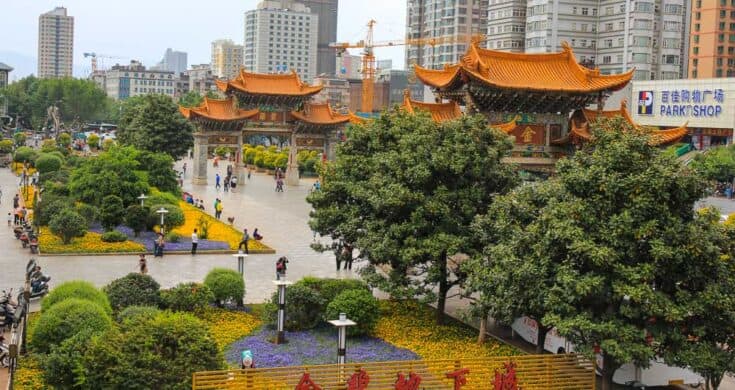
There is a train to Dali every 20 minutes or so, and the journey takes about 2.5 hours. For convenience, it’s best to book your train tickets online at Trip.com.
Once you arrive in Dali, make your way to Dali Old Town, which is about 30 minutes by bus away from Dali station.
Day 2,3: Dali
The Old Town of Dali has been a favourite amongst local and international visitors for years, yet it still retains a lot of its laid back charm and atmosphere. Dali is known as somewhat of a backpacker heaven for its laid back atmosphere, lakeside setting and great weather. People often end up staying longer than they planned. That being said, Dali has not been spoilt by mass tourism, and that is perhaps the best thing about Dali.
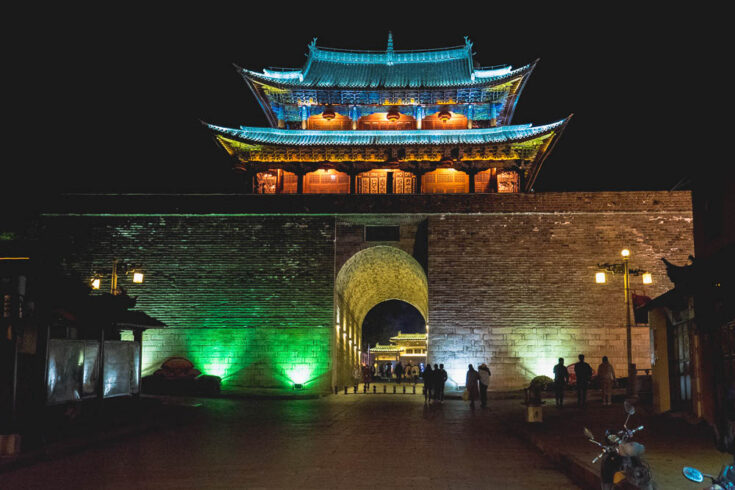
Surrounded by a city wall and 4 gates leading into the old town, Dali is a great little town to explore on foot. Spend your first day leisurely exploring the old town.
The cobblestoned streets of the old town are filled with quirky shops selling souvenirs such as amber, Bai minority tribe handicrafts and wild mushrooms which Yunnan is famous for. Trying wild mushroom hotpot is also an excellent idea. Another snack you must try in Dali is grilled yak cheese, which Bai women grill over hot colals right on the street all over the old town.
On the second day, rent an electric scooter and head out to explore the lovely countryside around Dali.
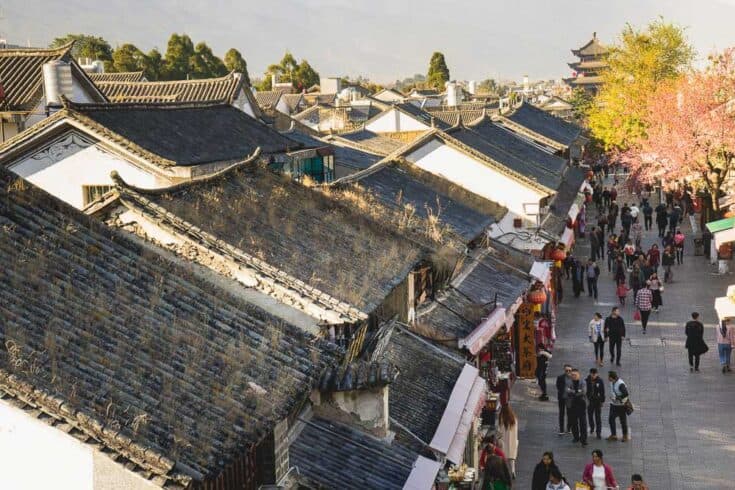
The imposing Three Pagodas just outside town should be your first stop. These three ancient pagodas dating back to the 10 th century are magnificent, and the setting right in front of the Changsan Mountains are a sight to behold. The main pagoda is 16 stories high and almost 70 meters tall. Surrounding the pagodas are lovely gardens and ponds, which are perfect for getting photos with the reflections of the pagodas.
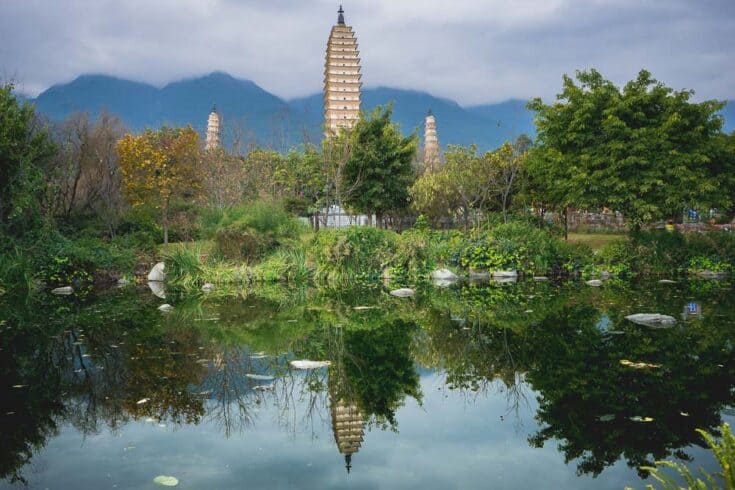
After spending a few hours admiring the gardens, ponds, temples and pagodas, jump back on your e-bike and follow the signs to Lake Erhai. The drive along the shores of the lake will take you past strawberry farms, mountain scenery and pretty rural villages.
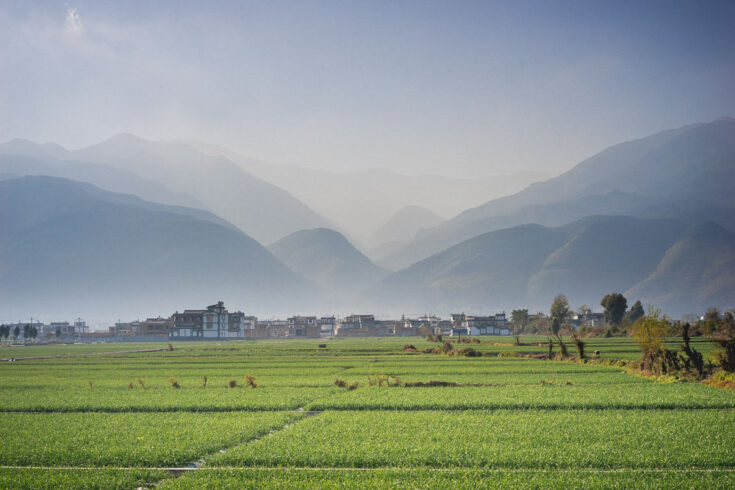
Notice the cat statues on the roofs of the houses as you explore the villages of Lake Erhai. The cat statues, with the mouths wide open, have a dual purpose: scare away evil spirits, and catch good luck and wealth in their wide-open mouths.
Day 4, 5, 6 : Lijiang
Catch the morning train from Daili at 10:00 to Lijiang and you should arrive in Lijiang before 13:00.
The picturesque old town of Lijiang is perhaps the most popular attraction in the whole of Yunnan province – for good reason.
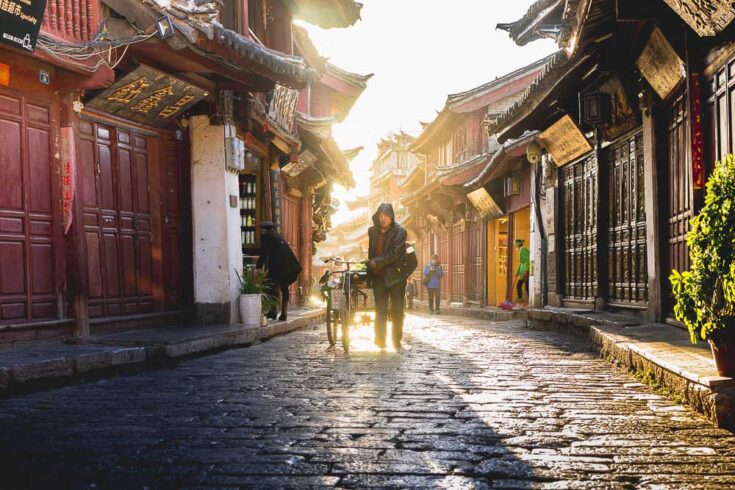
This well-preserved ancient town dating back to the 11 th century is drop dead gorgeous with wooden architecture, cobble stoned streets, canals running through town, friendly Naxi minority people – all backed by the snow- capped Jade Dragon Snow Mountain not far away.
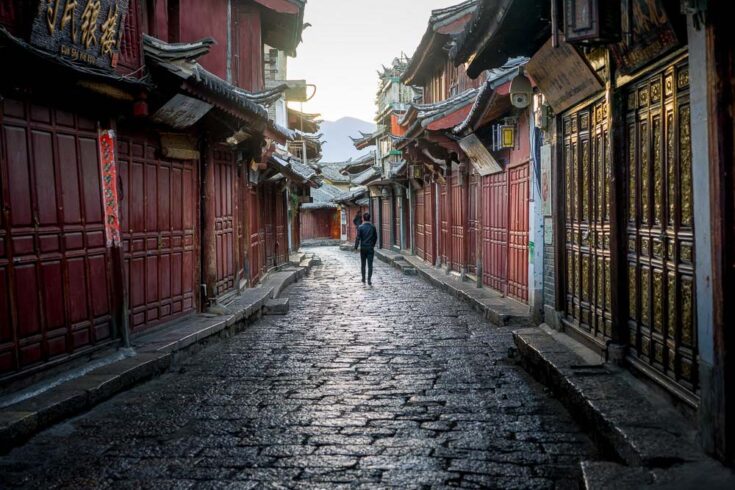
Word of advice: Beautiful Lijiang has been popular with Chinese tourists for decades and, as a result, it can get incredibly busy. This does not mean that you should avoid visiting Lijiang. Just keep your expectations in check. To best enjoy Lijiang, get up early and enjoy the stunning town before the crowds descend. Also remember that most tourists stick to certain areas, which leaves other areas beautifully undisturbed. All things considered, Lijiang is a great place to visit, and the large number of visitors actually contribute to a lively atmosphere.
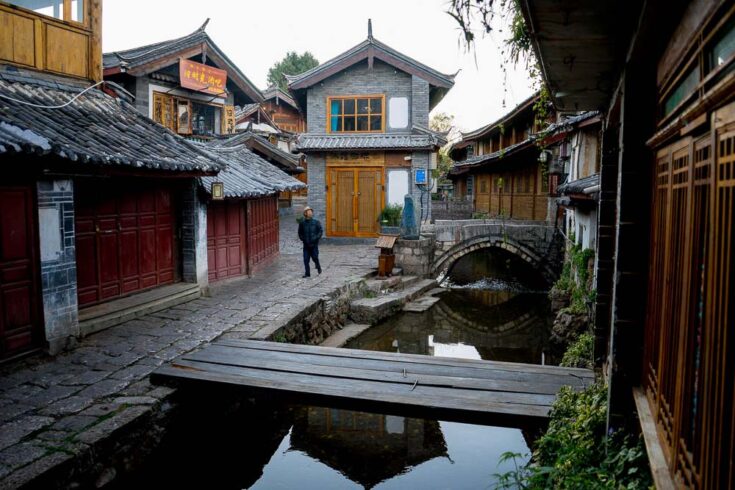
Spend the next few days walking all over Lijiang and discover hidden alleys, cute teahouses and more than enough options for street food. Over the next few days, make sure to check out the following places of interest:

The Black Dragon Pool
Just outside the old town of Lijiang, this incredible park has some of the most iconic views of Yunnan. At various points in the park, you’ll get a beautiful view of the Jade Dragon Snow Mountain with an arched, stone bridge and pagoda in front of it, and the Black Dragon Pool in the foreground.
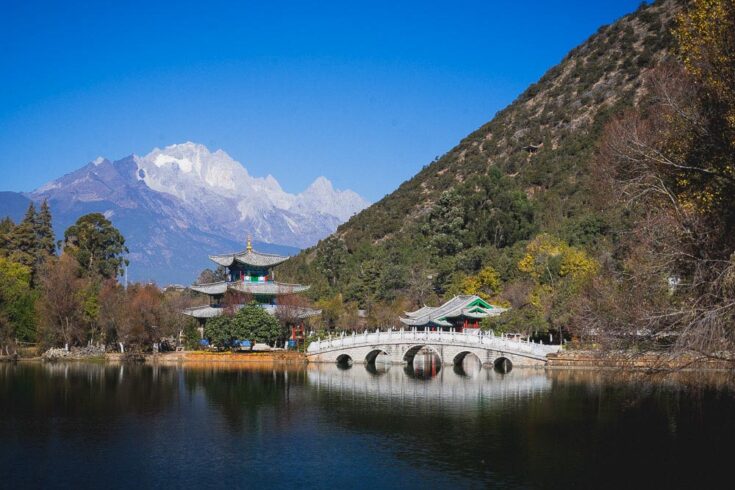
Almost as spectacular as the views and the serenity of the park is the fish in the crystal-clear ponds. Thousands of fish in all sizes and colours will keep you mesmerized for quite a while. You can also buy some fish food to join the locals in feeding these beauties.
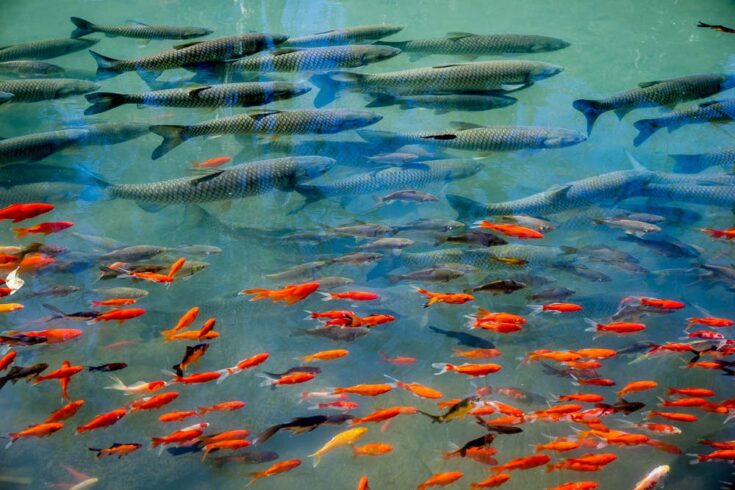
Wangu Tower
Sitting on the highest point in Jiliang, the area surrounding the Wangu Tower offers a sweeping view over the black tiled roofs of the Lijiang Old Town. Pop into one of the many tea houses for a drink to rest your feet and enjoy the view.
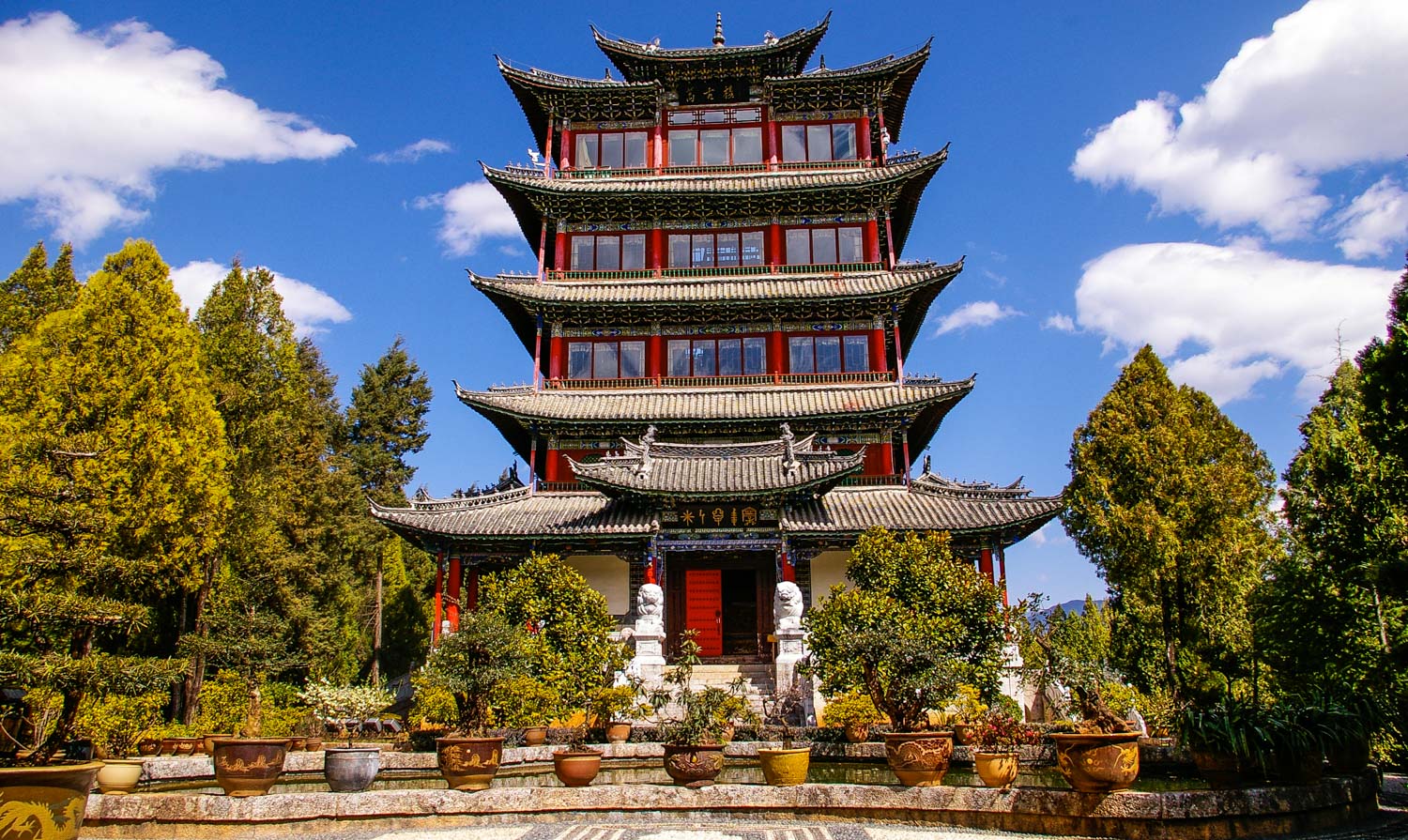
Dance in the town squares
You’ll find people of the local Naxi minority group dancing in the town squares throughout the day. Everyone is free to join in, and it’s good fun. This continues into the night, and it’s much livelier after dark. It’s very acceptable to get a cold beer from a convenience store and drink it in the squares while enjoying the entertainment.
Visit the Tea Market
There are hundreds of Tea houses and shops scattered all throughout Lijiang Old Town. You can pop into any of them, and you’ll be treated with a little tea ceremony and the chance to try various teas.
Yunnan province is well known for its high-quality tea, of which Pu-erh tea is the most famous.
For a less touristy (and cheaper) experience, head to the Tea Market, located just outside the old town. Vendors will be quite surprised seeing foreigners here and will go out of their way to sell you some tea. Like at the tea shops in the old town, they will put on a tea ceremony and keep the good stuff coming until you’ve found what you were looking for.
Suhe Old Town
When the crowds in Lijiang get too much, jump in a taxi and drive out to Suhe Old Town. Suhe is only 4km away from Lijiang but is a world away. Although Suhe is much smaller than Lijiang, it makes for a very enjoyable half-day trip. The Tea Horse Road Museum, set in a handsome old building offers informative displays on the history of the area and how the trade in tea has formed the history and culture in this part of Yunnan.
Day 7: Blue Moon Valley
For once, the Blue Moon Valley is more than just a catchy name and is indeed as cool as it sounds. This incredible valley, located at the foot of the Jade Dragon Snow Mountain makes for an excellent half or full-day trip from Lijiang.
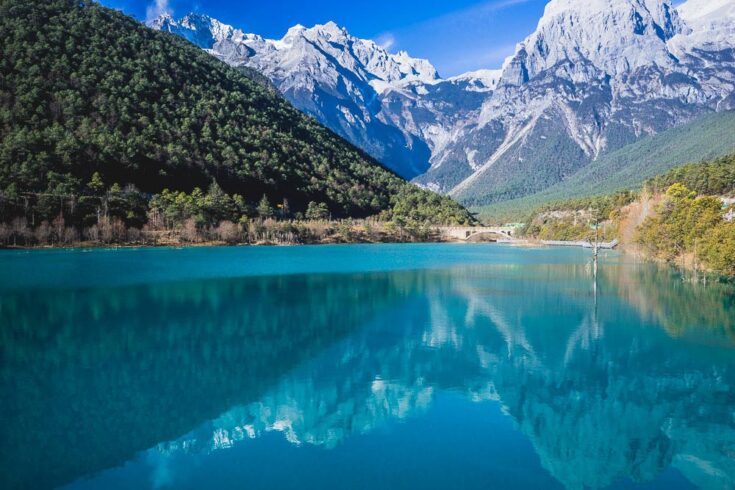
The Jade Dragon Snow Mountain scenic area is home to various surreal landscapes, of which the Blue Moon Valley is perhaps the most unbelievable. A series of ice-blue lakes sit right in front of the snow-capped mountain behind it, and you’ll be excused if you thought that you were dreaming and woke up somewhere in the Rockies.
An incredible sight to see it submerged trees standing like skeletons in that surreal and crystal-clear water. If you are looking for a unique photo opportunity, you could also dress up in the local Naxi attire and ride a yak in that unworldly scene.
As to be expected of one of Yunnan’s most beautiful attractions, it can get unbelievably busy. To enjoy this amazing sight, come here first thing in the morning, before the tour buses arrive.

Other than the blue lakes, you could also visit meadows and grasslands, or ride a cable car to the glacier on top of the Jade Dragon Snow Mountain.
Day 8,9: Tiger Leaping Gorge
Two hours by bus north of Lijiang, the Tiger Leaping Gorge is one of China’s most spectacular (and accessible) adventures. The Tiger Leaping Gorge is the deepest gorge in the world, with a height of almost 3000 meters from the river at the bottom of the gorge to the mountain tops beside it.
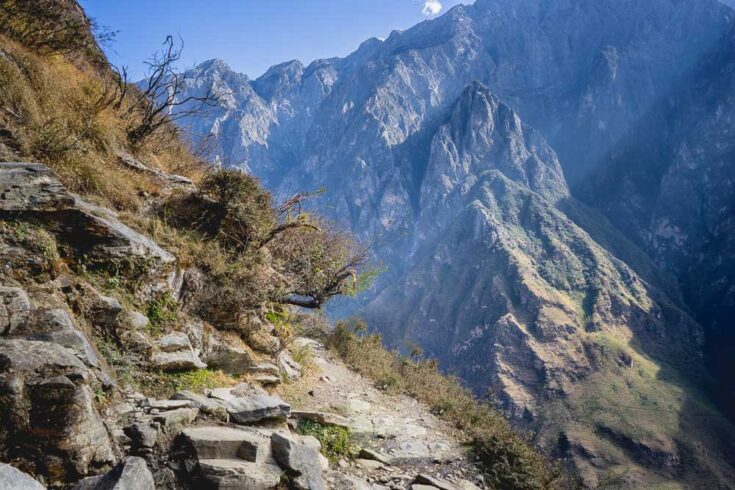
Hiking the Tiger Leaping Gorge usually takes two full days, but if you’re pressed for time, or don’t want to walk that long, it’s possible to cut it down to only a one-day walk.
If walking for two days, start walking at Qiaotou where the bus will drop you. From here it will take most of the day to reach the stunning Tea Horse Guesthouse where you can spend the night. Otherwise, get a taxi in Qiaotou to take you to Tea Horse Guesthouse. You could spend the rest of the day enjoying the spectacular mountain scenery, or take short walks in the area.
After a comfortable sleep, some delicious mountain food and bright starry skies, hike from Tea Horse Guesthouse to Tina’s Guesthouse.
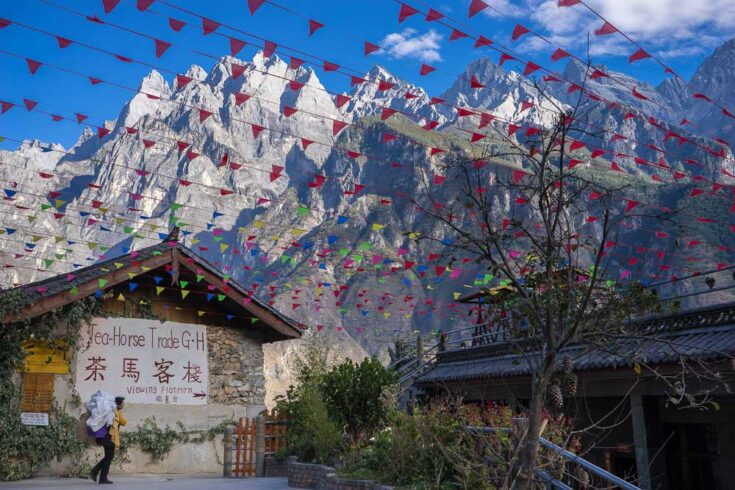
The hike between these two guesthouses is the most beautiful stretch of the gorge, and known as the Middle Gorge, takes about 6 hours to walk, and the scenery just keeps on getting better around every bend in the path. Along the way you’ll walk past waterfalls, farmers herding sheep, sheer drop-offs and you might even spot rainbow clouds if you’re lucky.
You should reach Tina’s Guesthouse around lunch, so grab a bite to eat and perhaps something stronger to celebrate the end of hike. The bus back to Lijiang leaves from Tina’s Guesthouse at around 15:30 in the afternoon. If all goes well, you should be back in Lijiang just before sunset.
Day 10: Lijiang – Home
Today is the last day of our Yunnan itinerary. You could get a flight from Lijiang Sanyi Airport, which has good connections to most major cities in China. Alternatively, you could backtrack to Kunming in about 3 hours by fast train.
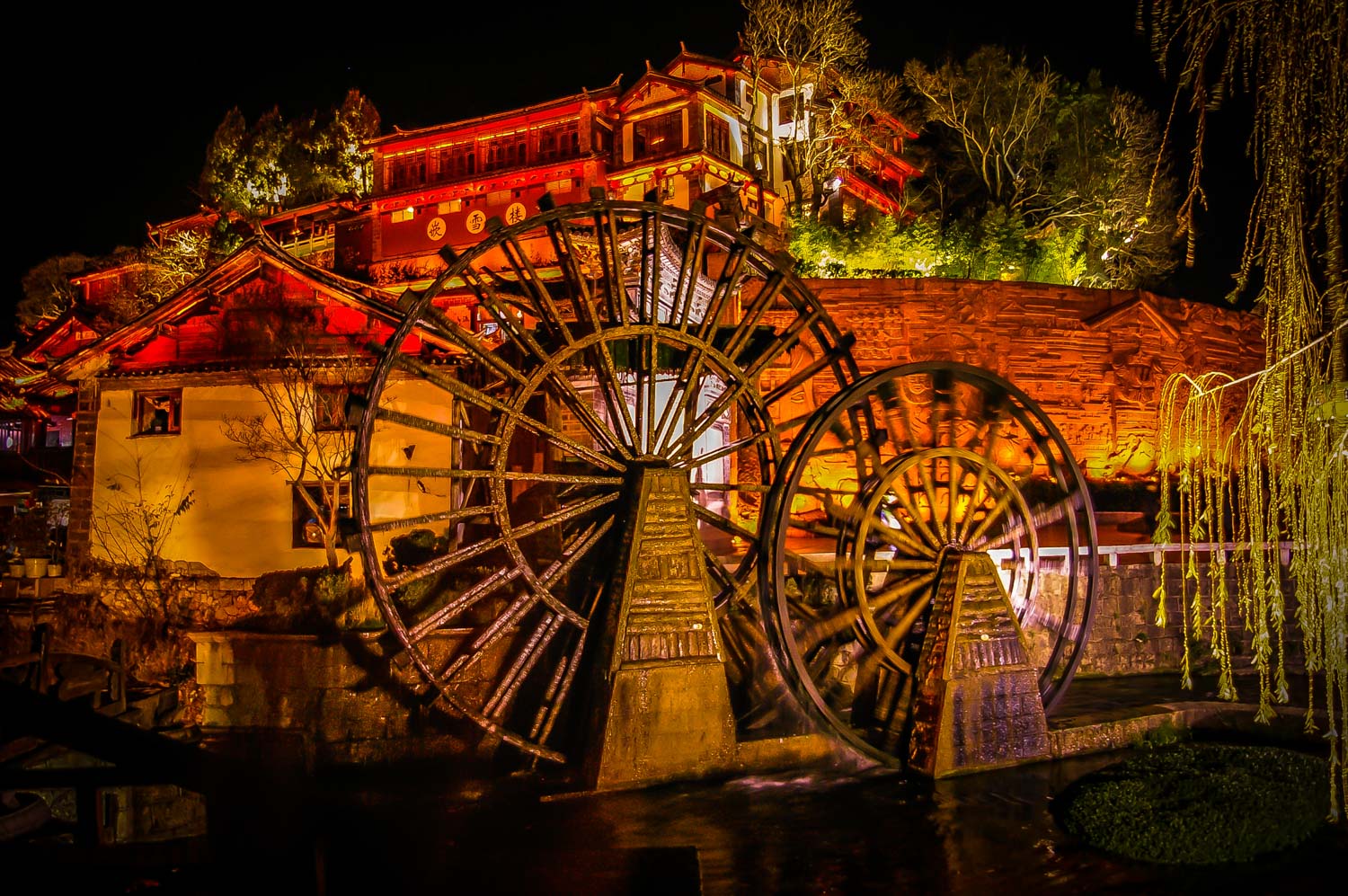
Yunnan Itinerary Conclusion
A 10-day itinerary for Yunnan is just the right amount of time to see the highlights of northern Yunnan, without rushing it. This itinerary allows you to see the best sights and attractions in the province. With more time, you could extend your trip to include Shangri la on the eds of the Tibetan world, or perhaps spend a day or two in Kunming or travel to the southern part of Yunnan to visit either the Yunnan Stone Forest or the Yuanyang Rice Terraces , which are both UNESCO World Heritage sites. With fewer days, consider culling a day from Lijiang.
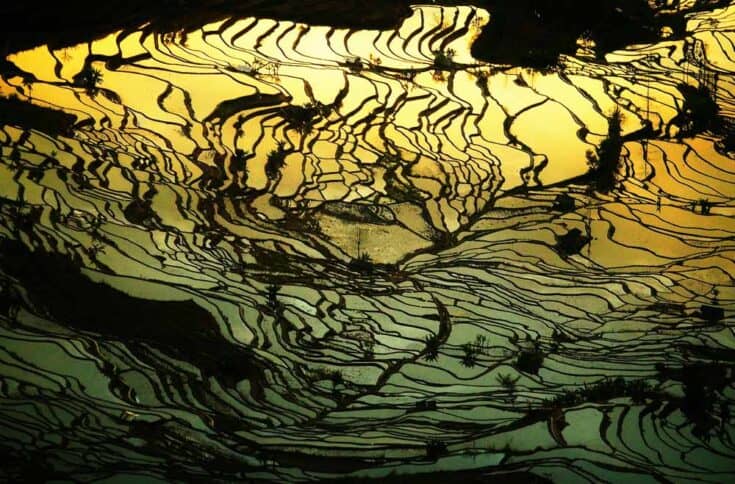
A journey through Yunnan is sure to be an enjoyable and interesting experience and something that will stay with you forever.
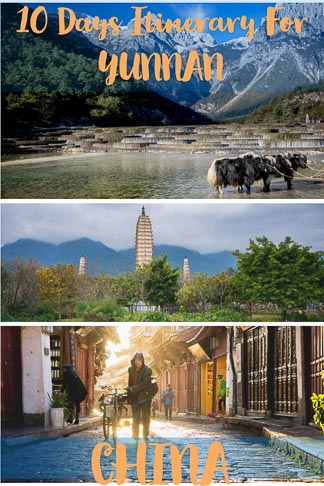
Tuesday 27th of June 2023
Is it necessary to drive? Will it be easy to find taxi ?
Christian L.
Taxis will be very very expensive for that whole route
Stay informed: Sign up for eNews
- Facebook (opens in new window)
- X (opens in new window)
- Instagram (opens in new window)
- YouTube (opens in new window)
- LinkedIn (opens in new window)

The Paper Road
- Philip E. Lilienthal Imprint in Asian Studies
- Amazon (opens in new window)
- Barnes & Noble (opens in new window)
- Bookshop (opens in new window)
- UC Press (opens in new window)
Read an Excerpt
The Eyes of Others
A man is suspended over the river. Leather straps bind him to a half-cylinder of bamboo that slides on a rope of twisted bamboo strands greased with yak butter. Having plummeted to a point over the river's center, he will haul himself to the opposite bank, hand over hand. The edges of the strands are sharp, so the crossing is painful as well as physically demanding. The photograph was included in Acting Consul G. Litton's secret report to the British Foreign Office on his journey to the Upper Salween River. 1 It is filed in the archives of the Royal Geographical Society with many other images of suspension bridges over the great rivers that run in parallel gorges through northwest Yunnan: bridges of cane, ropes and planks, timbers and iron chains. The back is stamped with the photographer's name, George Forrest, and the date, 1905. At that time, in the confident opinion of the Royal Geographical Society president, the Salween remained the last great riverine puzzle on earth, its northern reaches yet unexplored by any European. 2
The drawing looks almost like a cartoon-strip version of the photograph. The rope is stretched between two trees; the bamboo runner and inverted human figure are clearly depicted; a simple tree stands to the right; the whole is surrounded by a square frame. The drawing is from the title page of a hand-written manuscript called Lònv. The composition within the frame is this word in what is now known as dongba script. The left side is the word lò, meaning "to cross over," the first syllable of lòk'ö, to cross a rope bridge. The tree on the right is the word nv, which designates a ritual effigy. The manuscript titled Lònv was written to be read at a funeral for a child. Joseph Rock bought it in the early 1930s in the Lijiang valley. It now resides with 1,114 other dongba manuscripts in the Staatsbibliothek in Marburgh, Germany. 3
G. Litton walked up the Salween, or Nu, intending to draw a line between two empires. He had recently been appointed the British representative to a joint boundary commission charged with fixing the northern border between China and Burma. His Chinese counterpart was Shi Hongshao, the new trade commissioner (daotai) for west Yunnan. An 1897 treaty, in which the Qing court granted the British a trading post in the border city of Tengyue, had left this issue unresolved, specifying only that a fixed boundary would be surveyed in the future. Over the next two years, cartographers for both sides proposed five different boundaries, synthesized in a "five-coloured map" for the south, in the Wa states, and another "five coloured map" for the north, west of the Salween. 4 The British Foreign Office had declared that it would be "for the advantage of both countries and of their mutual commerce that British jurisdiction should be established over the whole of the upper basin of the Irrawaddy." 5 This in mind, Litton argued that the huge, unsurveyed mountain range rising from the west bank of the Salween, the Gaoligong range, was a "natural and ethnological divide" between the two empires. 6 In response, Shi Hongshao restated the Qing court's position that the local rulers of the peoples Chinese ethnologists called Nu, Lisu, and Qiu, who occupied that range and many territories west of it within the Irrawaddy basin, were tusi, native hereditary officials enfeoffed by Ming and Qing emperors, or fuyi, hereditary officials granted titles by the Ministry of War. Formally, these rulers were under the jurisdiction of the district government in Weixi, a town on the Mekong, and their polities were Chinese territories. 7 Litton believed to the contrary that no actual relationships existed between the district government and the Nu, Lisu, and Qiu chiefs in the region. It was to prove this that, in October 1905, accompanied by two soldiers from the Indian Army and tens of Lisu porters, each carrying sixty to seventy pounds of rice, he walked up the gorge of the Salween. 8
His other companion was George Forrest, on an expedition to Yunnan for the British seed firm Bees Ltd. Forrest had already been in Yunnan nearly a year. He had made two extensive tours of Yunnan's northwest, the first with Litton, the second on his own-with a cook, a groom, three servants, and two muleteers ("I cannot travel with less," he wrote his fiancée.) 9 His second journey had been particularly eventful: he had barely survived a Tibetan attack on the French mission at Cigu on the Upper Mekong River, losing all his possessions, including an extensive collection of specimens. Two months later, though barely recovered, he happily accepted Litton's offer to make him the naturalist and photographer of this expedition to a new and promising territory. [Figure 8 about here]
The two British men began the expedition with a sense of excitement tempered by sober purpose. They were performing a vital task for the empire-even if in this rather unimportant periphery. To them, their collaboration was perfectly natural: naturalists had taken part in the military and administrative surveys of each new territory acquired by the empire in India. 10 They investigated the gorge's climate, botany, zoology, and geography, and they made ethnological observations of its human inhabitants. The latter, crucially for Litton, were "wild Lisoos with poisoned arrows" under "no control of any sort ... by any Chinese or other chief." 11 At the bamboo rope bridge, Forrest took a photograph, and they discharged their firearms, subduing into "awestruck silence" the crowds of Lisu villagers who seemed to be vying to control their crossing. They then climbed up the east bank of the gorge to the summit of the Mekong-Salween divide, where they accomplished their journey's main objective. "Here a surprise awaited us," Litton wrote the Foreign Office, "for the view to the west was perfectly clear, and the whole of the great Salwin-Irawadi divide was spread out before us. From a little below the pass, the range could be followed to the north as far as the eye could reach, until at a distance of about 100 miles from where we stood, and in approximate lat. 28° 30' N., it was merged into a huge range of dazzling snow peaks trending westwards." 12 "Not the least doubt remained in my mind that here was the true frontier between India and China," he added: it was a "vast wall." 13 Litton did not live to press his case, dying of malaria only weeks after his return, but his description was repeatedly quoted in insistent British proposals that the range dividing the Salween and Irrawaddy watersheds be the border. Though Qing negotiators vigorously opposed these proposals, the British treated the divide as a "provisional border." It became the de facto border in 1913, when British troops occupied the village of Pianma (Hpimaw), west of the divide, despite furious nationalist protests in China. 14 The border was not finally established until long after Burmese independence in 1960. 15
As for George Forrest, exhausted by the journey he let Litton's words take the place of his own in letters home and in a paper to the Royal Geographical Society. 16 He was accustomed to being struck silent by views of glistening snow covered peaks, "beyond conception" or "beyond description." They signaled to him the limits of thought and language. He would forget about that distant, shining range for many years as he explored other parts of Yunnan. But eventually, inspired by his indigenous collaborators, he would remember it: as the sign of something always beyond his grasp; as a solution to the great phytogeographical puzzle of the genus Rhododendron; as a transcendent Eden, where the difficulties of engagement and representation that this landscape presented might finally melt away.
When a child died in a Naxi home in the Lijiang valley, her parents sent for a ritualist, a dongba, who helped wash the corpse, dress it in new clothing, and place it in the coffin. A little later, the parents held a funeral in their courtyard, attended by a few kin and friends. The dongba read several manuscripts. Only Lònv was written specifically to send a child off on her final journey. It seems to have been rare: many funerals for children probably did without it. It described the child's soul, unable to eat, unable to see and hear, unable to use hands or feet, unable to clothe itself. It spoke of the child's journey across a rope bridge separating the world of the living from the world of the dead. It told of how a dongba cut the bridge with a knife, severing the link between the two worlds in order to prevent parents or siblings from following. The manuscript specified the materials to be used: sacrificial animals, black clothing, a strip of blackened hemp for the rope bridge, a fir branch to which the rope was tied. Other texts described the soul's journey, guiding it north through the mountains of northwest Yunnan, toward the lands from which the ancestors had come, and eventually to the great mountain Ngyùná Shílo Ngyù, origin of all things, where the worlds of mountains and forests met the worlds of the gods.
In the early twentieth century the upper Nu (Salween) was about two months travel from the Lijiang valley. There were many rope bridges in closer places, along the Lancang (Mekong) and Yalong rivers. But all these had two ropes, each with one end higher, so the traveler could slide all the way across without resorting to the painful inverted crawl depicted in the Lònv manuscript. The distant upper Nu, with its single-rope bridges, lived in the ritual imagination of Naxi farmers and traders. 17 Many Naxi from the Lijiang valley traveled long distances for trade: a late Qing gazetteer mentions that Naxi came over one thousand li to sell items to the Nu, who inhabited the far upper reaches of the river that bears their name. 18 The Nu, whom Naxi called Nun, their land on the far upper Nu (Nundǜ), and the Lisu (Lissuu), who lived in the part of the gorge Litton and Forrest investigated, were all represented in the written lexicon of Naxi ritualists. In particular, a small ceremony to perform rain was performed frequently around Lijiang in the early twentieth century. In this rite, held by a spring, dongba invited the spirits who brought rain to descend from all the great rivers and lakes in four directions. In the west, they came from the lands of Nundǜ descended to the town of Weixi on the Mekong, circled the mountains to the north and east, and then entered the Lijiang valley. The origin of this journey, and its highest point, was the great snow mountain Nundǜ Gkyinvlv, the center of that "huge range of dazzling snow peaks" that Litton and Forrest spotted at the apogee of their expedition, shining from a hundred miles further north. 19
A photograph and a drawing. Each might be said to participate in a separate archival regime. They are archival in the most obvious sense. They are both fragments of large collections that came together in focused historical periods, in projects that followed quite precisely defined rules. I find the word "regime" appropriate because of its use in physical geography to connote all the factors that create the quality of a river's flow: the amount of rainfall, the type of bedrock, the shape of the channel-everything that makes the river meander, braid, flood, disperse into deltas or join with other streams. In a similar way, an archival regime includes all the rules, habits, and ideologies that decide how perceptions are transferred to paper, collected, and stored. It includes habits and ideologies of seeing and walking, of inscribing and photographing, of collecting, shipping, storing, organizing, and reading.
The British expedition up the Salween was guided by what Bernard Cohn called a "survey modality" of investigation. This mode of summing up a landscape and its inhabitants in a series of comprehensive reports had been central to the colonization and administration of India. Litton's report was added to the heaps of documents written by colonial explorers and administrators in India that had been piling up in the archives of the British Museum, the Royal Geographical Society and related institutions for over two centuries. The British consul who replaced Litton sent all Forrest's photographs from the expedition to the Royal Geographical Society. His images of bridges were filed in drawers marked "bridges," of people in drawers labeled "types," of crossbows in drawers stamped "weapons." Thomas Richards has argued that this kind of archival activity, more than any process of administration or governance, was the central project of the British Empire during the late nineteenth and early twentieth centuries. After the mid-nineteenth century, British imperial power found unity and coherence in an archival myth: the idea that institutions of knowledge production could forge the millions of facts flowing in from all corners of the world into a coherent whole. In an empire where administrative institutions were thinly spread, this myth of archive took the place of actual civil governance in many places. Litton and Forrest participated wholeheartedly in this myth as they walked up the Salween. Despite the complete absence of any British civil authority in the region, the failure of numerous plans for a railway linking Burma to the Yangtze, and the Foreign Office's stated abhorrence for any further expansionist adventures, they both looked forward to the immanent British annexation of Yunnan. Even so, this would be the last time Forrest would imagine himself directly involved in the project of imperial administration. After Litton's death, his activity would be guided by a more limited regime within the survey modality of investigation.
The Lònv text was a fragment of another archival regime. Naxi ritualists probably began writing manuscripts in pictographic script sometime during the Ming dynasty, as armies from Lijiang swept through the province's western regions. During the eighteenth and nineteenth centuries, they wrote and copied these books with great assiduity. In the early twentieth century, tens of thousands of manuscripts were stored in the attic libraries of dongba in and around the Lijiang valley. Most were written to be recited during ritual performances; some were for divination and astrology. Many rituals took the form of driving or guiding inhuman entities over the landscapes of northwest Yunnan, and many texts contained long lists of places, some extant, some once extant, some belonging to other worlds. As a whole, the archive of dongba texts contained an extensive geography of northwest Yunnan, far more detailed, at the opening of the century, than any other representation in maps, reports, or herbaria. This archive too was underlain by rules, habits, and ideologies of seeing and walking, writing and collecting, storing, organizing, and reading. Dongba did not create and organize knowledge for purposes of rule, though perhaps they once might have. They wrote and copied texts to regulate the social well-being of people and communities by manipulating relations between human and nonhuman social entities. Their mode of investigation did not survey the landscape. It auscultated its depths, threw out lines of communication to its hidden presences, and divined traces of a past that had vanished from its surfaces.
One might think that each of these two regimes would be incomprehensible from the point of view of the other. And indeed, there is no evidence that either directly incorporated knowledge from the other. Forrest did not find routes, place names, or plant names in dongba texts: he was barely aware of their existence. And no dongba altered any text to include botanical or geographical knowledge created by Zhao Chengzhang and the twenty-five to thirty others from Nvlvk'ö who worked with Forrest. Nevertheless, the two regimes came into close contact for nearly three decades, and at some points of friction they very likely shaped or deformed each other.
By the late 1920s, Zhao Chengzhang, Zhao Tangguang, Li Wanyun, He Nüli, and the rest of the senior generation of explorers from Nvlvk'ö were masters of the taxonomical botany of northwest Yunnan, in large part their own creation. They were expert at keying out plants; they knew the slight differences that separated some species and varieties; they knew far more than anyone else in the world about the geographical distribution of alpine species in the region. By 1921, Forrest and Zhao were having "very heated arguments" about particular species. In one case Zhao and several others maintained, against Forrest's strong objection, that the rare tree-sized Rhododendrons fastidium, giganteum, and protestum were all distinct species . Despite his pride in his knowledge of the complex genus, his stubbornness in argument, and his tendency to tyrannize his employees, Forrest had learned to have great respect for their taxonomical expertise. In his report to his sponsors, he left the issue open, reporting only the differences of opinion. 20
But Zhao and his fellows were experts in other realms as well. In many ways, dongba culture had been in decline since the eighteenth century. It had largely moved out of the towns of the Lijiang valley into the surrounding mountainous countryside. Located just above the edge of the valley, their village belonged to this drier, poorer, mountainous hinterland. But it was also in the orbit of the market town of Baisha, long the most important center of dongba learning. Nvlvk'ö and the other villages in the southern foothills of the Yulong range, though small and poor, contained the greatest concentrations of dongba and libraries of dongba manuscripts remaining within the loop of the Yangtze. It was from Nvlvk'ö that the dongba archive moved out larger world: when Joseph Rock began to collect dongba books there, he had a library of hundreds in within days and thousands in a few months.
The money they earned from their quest for flowers made Zhao Chengzhang and his colleagues their village's most prosperous and important citizens. As elders, they officiated at village-wide events like the yearly muanbpò ritual to regulate the village's health; they were the central guests at funerals; and they were in a position to sponsor rituals to cleanse their houses, cure their kin, defeat slander, and overcome drought. Dongba books were central to all these activities: from just a few to as many as seventy were read aloud at each. There is no evidence that Zhao or any of his colleagues were trained as dongba, but it is certain that they listened to many key books being recited many times: they all had a general knowledge of the dongba corpus. Despite the slow general decline of the dongba cult, it was still, for these men, a deep source of knowledge, attitudes, and orientations, particularly about its central protagonist, the living, spirit-inhabited landscape of northwest Yunnan.
In Part 1, I place these two archival regimes side by side in the context of Forrest's and Zhao's explorations of northwest Yunnan. For the men from Nvlvk'ö these regimes were very much coexistent. But to understand the specific ways they coexisted and, perhaps, intersected, can only be a speculative exercise. As I mentioned in the Introduction, almost nothing written by the first generation of explorers from Nvlvk'ö remains: there are only Zhao's four maps and two scraps of ledger, a few labels on bird specimens, and one brief, crudely written thank-you note. Any ideas about their relations with the gorges, mountains, and meadows they wandered have to be pieced together from two very different sources. On the one hand, there are Forrest's letters, reports, notes, and photographs, tightly focused on the botanical enterprise. On the other, there is the massive archive of dongba texts, collected within the Yangtze loop, supplemented by a small descriptive and ethnological literature about the Lijiang valley and the Baisha region.
Tacking between these sources, I make several conjectures about how the dongba archive might have rubbed up against, and created new and compelling possibilities for, the phytogeography of northwest Yunnan. In particular, I show how the dongba corpus might have shaped the decade-long quest of Forrest and his mentor Isaac Bailey Balfour for the center of origin of the genus Rhododendron. I speculate about how the encounter between the dreams of geographical botany and the words of dongba texts might have tilted that search north and west, focusing it finally on that gigantic range that Forrest saw glowing in the distance during his walk up the Salween river with Litton in 1905.
These arguments are the path I have chosen to trace through the geographies of these two archival regimes. Route maps such as these, even if limited in scope, are perhaps the best way to come to know such a geography. The alternative-maps that pretend to a comprehensive domain view-would fail this vast, varied, complex, and interesting landscape in important ways. Along this path, I open up some of the questions that animate the rest of this book. How do rules about how we must perceive inflect how we walk and see? How do perceptions inscribed on paper become interleaved with the substance of the earth, to inflect other perceptions? How in this process does the earth emerge into social being? In what ways might this social being serve as a resource for experiences that circumvent established ways of thinking and living the divides we make between the social and the natural?
Learning Race
He had never quite found his footing in the British class system. His parents were of the ranks of workers, clerks, shop assistants, displaced tradespeople, and aspiring, mobile entrepreneurs who had wreaked massive transformations in class relations during the late nineteenth century. His own opportunities to move within the class hierarchy-to gain a secondary education, to try immigrating to Australia, to become a colonial explorer-were due to unforeseen gifts or patronage from others of superior class position. In India and Burma, colonial travelers and functionaries reoriented themselves to accord with an immediately apparent cartography of difference. As Partha Chatterjee has put it, colonial states operated through a "rule of difference," and in India the salient differences were racial. 21 Ann Stoler suggests that the work of drawing and redrawing maps of racial difference produced new middle-class sensibilities, organized around images of racial purity, sexual virtue, and proper masculinity. 22 This cartography gave imperial men who moved between metropolitan and colonial societies while occupying underprivileged class positions in Britain new opportunities to recraft their class identities. "White Englishmen were able to use the power of the colonial stage to disrupt the traditional class relations of their country and enjoy new forms of direct power of subject peoples," Catherine Hall writes. "At the same time ... their own identities were ruptured, changed, and differently articulated by place." 23
As he began his first expedition in 1904, traveling through India and Burma towards the western entrance to China, he was unsettled, in a way an upper-class Englishman might not have been, by the brutal class distinctions of race and class on display. Upon arriving at the Watson Esplanade Hotel in Bombay, he set out to see the sights. He did not walk; "no European ever walks"; he rode in a gharry, pulled by "gharry-wallas." All the servants were servile; they kept salaaming him: "it makes one feel uncomfortable at first." But the ideologies of race were quickly enforced and quickly absorbed; the servants worked for almost nothing, as he had, but "apparently they are quite pleased with such payment, and to give them more, as I was inclined to do, only makes them lose respect for you." From the gharry, he looked down on the streets: men and women carrying away waste on their backs, men naked but for turbans and loincloths, beggars "afflicted with some disabling and generally loathsome disease." "I saw the [British] captain kick and hammer one of the porters until I thought he intended killing him, for a most trivial offense." He watched himself reshape his attitude and comportment toward the lowest classes: "I can swear at them and order them about now, [but I don't think] that I shall ever reach the kicking stage." 24
Above all , he discovered opportunities to reaffirm his middle-class faith. This faith emphasized that the core of true masculinity was individual integrity and freedom from subjugation to the will of others. The most fundamental demonstration of masculinity was the capacity to establish, protect, provide for, and control a home. 25 He had established the foundations for his future domestic life before leaving Scotland, promising himself to Clementina Trail. He would spend the rest of his life working to build and provide for a home over the distance between Yunnan and Edinburgh. In India and Burma, he quickly learned to reframe his masculine sexual virtue along racial lines. At night, a new acquaintance took him to Bombay's brothel district. There, the filth, nakedness, and wretchedness of racially other bodies that had assaulted him in the daytime streets were concentrated in experiences of unregulated transgress of boundaries, moral and physical: "In the native quarter ... the stench is indescribable in places ... a mixture of sweaty bodies and all sorts of reeking abominations.... I never thought it possible for vice to be paraded so openly anywhere. We were continually being tackled by the women, some of whom even went the length of trying to get into the carriage beside us.... I pity the poor wretches." In Bhamo, the last steamer port on the Irrawaddy before the frontier with China, he was advised to buy a Burmese girl to take with him. "All the officers in the regiments stationed here ... keep them.... I could get a dozen tomorrow if I wanted them .... but I wouldn't touch any of them with a tarry [that is, tar-covered] stick. There is only one woman in the world for me and that is Clem, and she is white all through.... I have kept straight all my life and I have every reason in the world to keep straighter than ever." 26 It was a full and satisfying conflation of racial and sexual purity.
He was reorienting his sense of self in relation to different others, making decisions, some fleeting, others enduring, about how to negotiate the lines of difference that fissured colonial society. As he approached the border with China, he discovered new uncertainties and new opportunities. European discourses about China and the Chinese had long been more multivocal than discourses about race in India or Africa. On the one hand, since the eighteenth century an influential strand of writing about China had described it as an advanced civilization with a venerable history, literate populace, and wise government. On the other hand, during the nineteenth century China had been incorporated into European racial theories, giving rise to a discourse about "racial character," centering on images of Chinese as a degenerate race, enfeebled, corrupt, deceptive, filth-ridden, and prone to disabling disease. 27 After the Boxer rebellion and the punitive military operations that followed (1898-1901), florid racial invective became a commonplace feature of traveler's accounts, ethnographic descriptions, and fictional treatments of China. Yet older visions of China as an advanced and enlightened civilization were not entirely displaced . George Steinmetz has shown how some European colonists in China indulged in imaginary identifications with the Chinese as they negotiated these differences. "The prevailing European fantasy involved projecting oneself into the role of a Chinese mandarin or philosopher-king ruling over a literate and civilized people." 28 The most popular way to play with such fantasies was to make photographic portraits of oneself in the dress of a Chinese official. As he neared the border, Forrest tried on such imaginary cross-identification. "Once I get right into China," he wrote his mother and sisters, "I shall put on the regulation Chinese dress, big baggy trousers reaching to the calf and a loose blouse with a big hat and Chinese shoes." 29
He experimented with attitudes towards officials and soldiers he met along the road. He regarded them all as "Chinese"; later he would learn to make finer distinctions: on both sides of the border he passed through what he would come to know as Shan states. Near the border, the party waited several days while the commander of a Chinese battalion stationed in the region requisitioned men from surrounding villages to build a bridge across the Namsa (Namwan) river for the caravan. 30 He entertained the region's elite, including the district military commander and a "rather curious old cove" who was probably the hereditary ruler (sawbwa) of a Shan state. They exchanged calling cards, eggs, whisky, biscuits, chickens, cigarettes, tinned plums, and cherry brandy. "The soldier one ... is a most kindly and polite little fellow, and I liked him best of all. He at once started to try to learn me Chinese." 31 It was among the most genuinely good natured exchanges with local elites he would ever record.
Across the border in Tengyue, a tiny cadre of Europeans struggled to impose a regime of difference modeled on India's. Tengyue was a thriving town of about three thousand with a large merchant class involved in the cross-border trade. Forrest settled in at the consulate and held dinner parties "amongst ourselves of course" with the only other Europeans there: Acting Consul G. Litton and the British customs commissioner and his two assistants. When he went out, they insisted he take a soldier:
-He goes in front and by continual shouting and pushing gets the people to clear out of the way. He makes no bones about shoving some of them almost on their faces. It seems nasty, but it is really the only way and by doing this the people seem to respect one more.... Mr. Litton says that if it wasn't for the punishment which they know would be meted out to them our lives wouldn't be worth a moment's purchase, and I believe it from the look of some of them. Of course we always go armed and as they are great cowards, this keeps them in check. In coming home from the dinners or going anywhere at night we always had an escort of 4 soldiers and all [or most] of our servants carrying huge paper Chinese lanterns, quite a procession. 32
Only a few years before, combined European forces had put down the Boxer rebellion, occupied the capital, forced the empress dowager to flee, ransacked the Summer Palace, and forced huge indemnity payments on China. The uprising had not spread to the southwest, however, and remote Tengyue had seen no violence. Even so, anonymous notices sometimes appeared on the streets excoriating the weak Qing government, decrying foreign influence, and agitating against British plans to build a railway from Burma. Two months after Forrest's arrival, Litton telegraphed to warn the Foreign Office that the Chinese authorities had received a rhyming pamphlet stating that foreigners "practice the violation of Chinese women and children and destroy tombs." In fact the pamphlet (a copy of which Litton sent with his report) was an announcement in somber verse by the Tengyue Militia Office (tuanlian ju) of reforms that would eradicate abuses and introduce more discipline into training, with the aim of discouraging the foreign powers pressing at Yunnan's borders. 33 Forrest gradually came to understand that the townsfolk of Tengyue were more interested in peaceful trade than violent nationalism. In subsequent visits, he abandoned the shows of force to which the other Europeans in town seemed addicted.
Still, whenever pressed, he drew on the assessment of "Chinese character" he had begun to learn in Tengyue. After three weeks, Litton invited him on a journey east to Dali then north to Lijiang and to the Khampa town of Gyaltang (Zhongdian) in Yunnan's northwest. The route suited his purposes, traversing high ranges where he might find novel alpines. A caravan route took them to Dali, where Litton decided it was his business to investigate reports of tax corruption at a horse fair in Songgui, a day north. On the way, their servants, hired in Dali, balked at showing them a shortcut. "At last, we lost our tempers, and Litton started to bully them." That night, thieves took Forrest's pony and two mules from the temple where the party put up. The two British men gave chase, caught a man, and trussed him with rawhide ropes. In the morning they handed him over to the local magistrates, who ordered that he be given three thousand strokes with a bamboo rod while strung up by his hands, a fifteen-pound weight tied to his queue-a punishment he was unlikely to survive. Satisfied, they went to the fair: "I never saw such a beastly rabble in all my life. All the scum of China seem to have collected.... A crowd of ruffians ... followed us about making jeering remarks.... Then one of them started to pick up stones with the intention of stoning us, but when we saw this we drew our revolvers, and then you never saw such a scatter in all your life. The sight of weapons was sufficient without going even further." The next day, "we stayed at an inn at Hoching (Heqing) and were troubled by the usual crowd of gapers who followed us about wherever we went." 34
In November and December of the same year, Forrest made another journey, this time with no European companion. With Litton, he had made calculated shows of force based upon the idea that the Chinese were "great cowards." On his own, he tended to lose control of such demonstrations, falling into rages that he would recall with remorse. In a village near Lijiang, "we also had a row with the people ... because they wouldn't unlock their temple door and let us spend the night there. Temper not improving you see! But I think there is some excuse as the average Chinaman would rile the heart of a wheelbarrow." He blew the lock off the door with his rifle, barricaded the door from the inside, and left early the next morning. 35 In March, before the passes had entirely cleared of snow, he attempted to retrace most of the route he had traveled with Litton. From Dali, he went north to Jianchuan, where he commandeered a temple to avoid the county government seat, or yamen, and its magistrate-"for I despise the officials as much as the people." A crowd collected; some people began to examine and handle his baggage, and he ordered them out. One, a student, wouldn't move: "taking him by the scruff of the neck and the seat of his baggy breeches, I heaved him out of doors." The crowd yelled and threw stones at the temple windows. "Tired, hungry, and enraged as I was, this was more than I could stand and I let myself go ... and I must confess that I was most heartily ashamed of my conduct. I seized a stick, rushed out amongst them, and began laying out right and left." 36
He recorded these confessions in a diary in the form of letters addressed to his mother, who passed them around to Clementina and his sisters. Letters were his sole means participating in domestic life, positioning himself as a proper husband for Clem, whose parents, from a higher class, disapproved of him. He was feeling his way. Here, the mapping of difference was far more fluid than in India, where it was supported by state institutions. Each outburst was touched off by the "insulting" behavior of people who appeared not to recognized distinctions he was anxious to assert. But there was more to it than his perception of insult or threat. In India, his interactions with different others had been accompanied by pity, loathing, and reaffirmations of racial and sexual purity. He had seized every opportunity to reassert moral and physical boundaries: he might gaze at vice, but he would never let it into his carriage. Here, confrontation with difference inspired rage and hatred instead: he had so quickly reached the "kicking stage," mixing it up with all the sweaty bodies.
How real was the threat he felt? Certainly antiforeign nationalism was rife in those years preceding the 1911 revolution. And just as surely his posture incited hostility. One can imagine the anger of townspeople thrown out of their temple by an arrogant, rifle-wielding foreigner. But for many in the crowds, courtesy rather than hostility may have been the prevalent mood. These were the same looks imperial officials expected to receive as they traveled through towns with retinues of servants and gaudy palanquins, and they took these looks to evince fear, respect, and obeisance to authority. For Forrest, however, the looks were the problem. Why would the "average Chinaman rile the heart of a wheelbarrow"? It was a matter of ocular posture-what he called "gaping." It was not that these open looks were always evidence of hostility, though they sometimes were. It was not that they always challenged his superiority, though they sometimes did. It was that in gaping crowds he had no means of dialog, no words to learn, no gifts to exchange, no calling cards to accept, no language at all, whether about difference or identity. Mute gaping stilled exchange, reducing relations to the purely visual, a terrible mirror. Kicking, laying about with a stick, grabbing people by the seats of their pants, were ways of breaking that mirror and establishing contact.
Gaping and Photography
Conditions of visibility were a persistent concern for colonial scientists and travelers in the nineteenth and early twentieth century. The power to frame what was seen and to regulate affect attached to seeing were at the heart of many imperial projects. 37 Imperial men and women created cultures of display, in which exhibitions and photographs represented the colonized world as objectively visible. 38 Historians of colonial photography have explored many ways in which photography structured fields of vision to emphasize the subjective, empirical gaze of the imperial viewer and deflect the power of returned looks. 39 British colonial travelers reproduced the "world as exhibition" by following established itineraries, seeing famous sights in predictable ways, and structuring their visions of the landscape around specific aesthetic principles: the sublime, the picturesque, the romantic, the realistic. 40 Relations of visibility were always entangled with relations of difference. Deborah Poole has pointed out that the production and circulation of millions of photographs of colonized peoples "lent support to the emerging idea of race as a material, historical, and biological fact." 41 Theories of race created racial categories much the same way Linnaean taxonomy created species, selecting particular features to use as criteria. Racial theorists chose photographs to use like botanical type specimens as standards for comparison. And photographs of colonized peoples circulated through public and private archives, where they were categorized and organized through the principles of an archival regime. Exhibitions, photography, and science were machineries for framing and structuring fields of visibility-the gazes of "imperial eyes." 42 In the ambiguously colonized peripheries of empire, however, these were cumbersome machineries, laborious to master and difficult to apply to daily experience.
During his first expedition, Forrest struggled to reconcile the landscape of China with the world that exhibitions and photographs of the colonized world had conditioned him to expect. Eventually, he learned to coordinate different modes of visual exchange with a typology of race and map them onto the aesthetic, affective, and botanical qualities of the landscape. The possibility of such a cartography began to dawn on him during his first journey with Litton. North of Lijiang, the travelers walked for three days through the deep gorge of the Jinsha, or upper Yangtze, in a "magnificent heat." They climbed out of the gorge to a boggy pass, where they camped in heavy rain. Forrest happily collected some of his first alpine flowers: Gentiana, Primula, and Saxifrage. 43 The next day, the party descended to the Zhongdian plateau, a triangle of very high land about ninety miles long, surrounded by mountains and the Yangtze gorge to the south and bordering on the Tibetan region of Kham to the north.
This plateau, known in Tibetan as Gyaltang, was a strand in the network of roads linking Yunnan to Tibet and Southeast Asia, known as the Southern Silk Road; it was the main corridor for the trade in tea and horses between Yunnan and Tibet. It had been passed back and forth among polities for centuries. 44 From the mid-seventeenth century, the plateau had been ruled by a hereditary nobility of two lineages who traced their ancestry to the ancient Tibetan kings. In 1723, in the context of a widespread rebellion against Qing rule in eastern Tibet, the Yongzheng emperor ordered armies from Sichuan and Yunnan to occupy the plateau. It was formally absorbed into the province of Yunnan as Zhongdian; appointed officials were sent to govern it; a garrison of some eight hundred imperial troops was installed in its largest town, and the hereditary rulers were demoted to district commanders. 45 By the time of Forrest and Litton's visit, then, the plateau had been within the fold of imperial administration for a century and a quarter. Nevertheless, the hereditary officials had retained their armies and much of their influence, and imperial officials seemed to have great difficulty asserting administrative control. In 1905, the subprefect (tongpan) subordinate to the prefect of Lijiang controlled only forty soldiers, remnants of the garrison installed in 1723. This tiny army had recently been faced with rebellions in seven of the plateau's eight districts. 46 Three miles north of the plateau's center of government was an important Gelugpa monastery, housing 1,226 monks, another competing source of political authority.
Forrest and Litton walked over the plateau in the rain. It was, Litton wrote in his report to the Foreign Office, "most picturesque ... the wide sweep of barley, wheat, and oat fields interspersed with plots of marsh, the dark pine woods on the lower slopes, the bare mountain tops above, and the sparkling mountain streams below reminded my companion, a Scotch botanist, of a cultivated highland valley in his native land." 47 Rhododendron choked the foothills; blue Gentiana and red Euphorbia carpeted the pastures: to the "Scotch botanist" it was "one huge flower garden." In the late afternoon, they came to the southernmost of the plateau's two towns, called, in Chinese, Xiao Zhongdian. The barley harvest had begun, and the harvesters were holding a festival, eating boiled beef and piles of buckwheat cakes. The whole place seemed prosperous: shining fields, large white houses, well-fed people. While the land appeared fertile, most of the plateau's wealth came from trade. Caravans from the plateau moved through the length of Yunnan to bring tea, steamed and packed into large bricks, from the Tai Lü (or Shan) states in the far south of the province to Kham and central Tibet. Most households bred horses, and traders from the plateau supplied animals to Tengyue and Burma for the cross-border trade.
As they entered the town, a large man greeted them, finely dressed, with a sword. He was, Litton later learned, the occupant of a post called, in Chinese, huotou. This was an arrangement for local administration found in scattered parts of Yunnan at the margins of the imperial administrative system. Huotou systems developed mostly in larger villages lying on routes frequently traveled by traders and officials. They were a communal defense against the expensive obligation to host official travelers, the responsibility of local elites. Xiao Zhongdian was two stages south of the plateau's administrative center, Zhongdian, and two stages north of the nearest administrative center to the south in Judian, so it was a natural stopping place for every traveler on this route. Both Tibetan noblemen and Chinese officials had the right to requisition hospitality and transport from its populace. The elite families of the town elected one household of their member to undertake a series of ritual and administrative duties. Among these was the obligation to feed and house important travelers and to provide men and animals to transport them and their baggage to the next stage. Since, as Litton noted, the post of huotou was "far from lucrative" it was usually held for only one year. 48
The huotou escorted the travelers to his house. They lived there three days while Litton recovered from a fever. It was a "common meeting place of the people," in Forrest's words, "practically a club" in Litton's. To his enormous surprise, Forrest found that he liked the people who gathered there. What distinguished them from "the Chinese," whom he emphatically did not like, he decided, was the way they used their eyes: "The people came riding in from miles around to see us. However they are much pleasanter than the Chinese, they do not stand and gape as those do. They are very curious regarding things they don't understand, but once you explain the article to them, they are satisfied and go away. On the other hand the Chinese simply stand and stare with the most ignorant expression imaginable on their faces, and will not clear unless you really chase them." 49 The articles that most interested these traders and farmers were the travelers' guns. Almost as soon as they arrived, their host urged Forrest and Litton to go shooting with him. Wet and cold as they were, they put it off until morning. The next day, they walked out into the barley fields that surrounded the town and shot more than a hundred pheasants. After this, Forrest became attached to his host. He described him in unusual detail to his mother and sisters:
A regular savage beauty, about 6 ft. 6 ins. tall and 3 ft. 6 ins. broad, I should say, clad in a coarse scarlet Tibetan cloak ... open at the neck and strapped round the waist, he had scarlet putties on his legs and huge Tibetan top boots over these. Matted hair hanging down to below his shoulders (no pigtails), and dirt ad libitum, completed his costume. He looked like a pirate out of one of Gilbert and Sullivan's plays. However, he was a right cheery sort, and he and I got on like a house on fire. 50
As the description makes clear, this was a wealthy man, dressed in finery. Forrest coveted his beautiful sword with a scabbard worked elaborately in silver and turquoise.
When Forrest returned to the plateau again in November and December of the same year, it was very cold. The oil in his shotgun froze, and he had to take it apart and clean it before he could shoot pheasants on his way up the plateau's gentle valley. He stayed again in the huotou 's house. "I really like the fellow in spite of all his dirt," he wrote. "He is such a big man, and yet as simple, jolly, and kindly as a child." 51 Again, their companionship centered on shooting. The huotou showed Forrest his Tibetan-made muzzle-loaded flintlock rifle. It was quality workmanship, the best rifle available in Tibet before the 1911 revolution. 52 He took it outside, aimed at a tree on a cliff some eighty to one hundred yards away, and missed. Determined to "give him an eye-opener," Forrest loaded his Winchester with its full eleven rounds and blasted away at a limestone patch on the cliff. "There was a crowd around us by this time, and I can tell you that the group of faces would have made the fortune of any photographer. You never saw such astonishment depicted in all your life." The two then competed with Forrest's rifle, emptying some fifty rounds into the cliff. 53
It is not surprising that Forrest imagined this as a photographic moment. The association between guns and cameras was commonplace in colonial situations. As Paul Landau observes, the technologies of gun and camera evolved in parallel after the 1860s. Chemicals developed for ready-made cartridges were adopted for use in dry-plate cameras by Eastman and Kodak; elements of the designs of the best cameras were based on the mechanism of the Colt revolver; both technologies moved toward the capacity to make clean, rapid, repeating shots. 54 By the end of the century, game hunting had become a largely visual enterprise, incorporating cameras to create visual trophies. Later, Forrest would photograph long rows of Lady Amherst and white-eared pheasants hung up by their feet from the eves of his house in Nvlvk'ö-both hunting trophies and scientific specimens. In addition, travelers who ventured out of the reach of the armies and bureaucracies of colonial administrations had few resources with which to demonstrate their superiority. Forrest had his sense of personal hygiene: thus his repeated remarks about dirt even at a moment of profound camaraderie. But it was difficult to stay clean and even more difficult to show one's cleanliness to others in a convincing way, especially when they were far better dressed than he. So his gadgets-his Winchester, his camera, his telescope-had to bear the burden of demonstrating difference.
The posture of astonishment Forest elicited in this crowd of Tibetans was nearly identical to the "gaping" of which he accused "the Chinese." Yet while those looks made him miserable and violent, these delighted him-and made him think of photography. In other situations, he and his competitors would use their guns to similar effect. Clever Francis Kingdon Ward didn't even have to shoot his: in a village on the Mekong he showed a crowd "what wizards the English are" by making the cartridge pop out of his breech-loading shotgun in response to his whistle. "The men were so obviously taken aback that they merely stared incredulously." "My gun and my camera," he observed, "were always a source of great interest to the Chinese." 55 Later, in Tibet, Kingdon Ward, frustrated in his desire to photograph the shy women of Jana, set up his gramophone in the street, played an operatic prelude, and whipped out his camera to photograph the "enchanted crowd." 56 Chapter 5 shows how Joseph Rock resorted to the same cliché in moments of melancholy.
Michael Taussig argues that Europeans and Americans found in the astonishment they provoked with such antics a reflection of their own deep fascination with technologies of mechanical reproduction. 57 It is certainly true that these men were fascinated with the wonder they cultivated in others with guns, cameras, and gramophones. But they hardly seemed awed at the mysteries of these technologies. They were all deeply troubled by the sensation of plunging into a sea of looks, where the eyes of others framed their sociality in alien terms. Their attempts, in practice or imagination, to generate astonished looks and freeze them with a camera were efforts to turn the power of "gaping" back on itself. Martin Jay observes that the eye of the camera, unreadable by those at which it gazes, holds the viewer still, "static, unblinking, and fixated." 58 To generate and capture fascinated looks was to draw "gaping" into the familiar field of mechanical reproduction-the field of the "world as exhibition," through which the sights of colonized places were reproduced and exhibited in the metropole.
Not being gaped at unless at his command became for Forrest a precondition for social exchange without violence. After his adventurous excursion up the Salween gorge with Litton, he settled down to collect with increased determination. Though he had traveled with cooks, muleteers, and servants, he had until now done his collecting himself. In the summer of 1906, with the aid of missionaries of the China Inland Mission in Dali, he hired two men and three women to collect in the Cangshan range, just west of that city: this was the only time he would ever employ women as collectors. Leaving these five in the charge of one of his servants, he went north to spend the season on the great Yulong range. He took the southern route into the range, straight up the main street of Nvlvk'ö. His letters make no mention of the people he met there. But fourteen years later, he would recall that it was that summer that he first began to hire men from that village as collectors. Over the next thirty years, the men from Nvlvk'ö amassed one of the most extraordinary collections ever attributed to a single botanical explorer. They spent years at a time away from home, eating what they could, sleeping in the open, enduring all the physical and emotional hardships that travel over this immensely rugged landscape entailed. He tyrannized them; he fired them for insubordination; he fumed at them as "Bolsheviks" when they asked for raises; he scoffed at their ritual life when funerals drew them back to Nvlvk'ö. But for all this, it is clear that he developed profound camaraderie with many and sincere respect for a few.
They had learned as children many of the plants of the Yulong range. But there were many skilled herbalists among the "Chinese" population of the province who may have made better collectors, had he the imagination to look for them and the linguistic skills or social connections to find them. What made it possible for him to employ these farmers and live with them lay in how they used their eyes. He never once mentioned being stared at in Nvlvk'ö, and given his sensitivities, this is evidence enough. Like the Tibetans of the Gyaltang plateau, Naxi farmers and traders found staring profoundly impolite. Looking directly at a stranger, particularly one of high status, no matter how strangely attired, was deeply disrespectful. Meeting an important stranger on a path or village street, one looked away and went about one's own business, satisfying one's curiosity later from within a doorway or behind a fence. Habits of looking were distinctly gendered as well. For a young woman to look directly at a man not of her household out of doors was improper; older women could manage more direct looks, but again not at high-status strangers. These were widespread habits of ocular comportment, shared with most of the highland Tibeto-Burman-speaking peoples of the province.
As it happened, they were also familiar habits, close enough to those he had grown up with. Living amongst people who, however curious, did not stare, he immediately found ways to initiate social exchange even in the absence of a common language: trading cards, shooting his gun, producing specimens. When such deeply installed, tacit habits of ocular exchange were broken by "gaping," possibilities for social exchange were also broken, "blind rage" ensued, and physical violence became his only means of establishing social relations. In addition, "gaping" profoundly fractured his visual field. Under the unblinking eyes of different others, he found it difficult to look at anything but himself, and his nakedness often came to mind. In 1905, complaining to his mother of the "ignorant expressions" of "the Chinese," he commented, "I have become so callus that I can stand now and take a bath with a crowd around me." In company of people who turned their eyes away, he could refocus his own, away from himself, onto the landscape, to find in it the qualities that made seeing productive. In Nvlvk'ö, he learned to turn the eyes of others toward that common object as well, initiating the long and intensive process of ocular instruction through which others' eyes were trained to see in the ways demanded by Linnaean taxonomical science. He could only begin this process once he had broken that mute circuit of eye against eye that gaping entailed.
Scholarship on imperial travel has emphasized looking as a mode of knowing and possessing. "The idea of the 'the gaze,' especially as exercised by the white male explorer, missionary, administrator, or itinerant naturalist," writes David Arnold "has rapidly come to be seen as one of the principal expressions of the wider colonizing process. ... 'the gaze' is the prelude to possession in more material and institutional forms, just as travel is more about imposing upon, than learning from, the landscape subject to the itinerant gaze." 59 Travel made the landscape a spectacle, replicated after the mid-nineteenth century in exhibitions for other eyes, in both metropole and colony. Photography provided a convenient model for this mode of knowledge production: a clear-seeing eye, unimpeded by the vagaries of subjectivity, rendering fields of sight into real objects, which could be classified, archived, and exhibited.
The temptation for scholarship has been to write as though imperial gazes could, in reality as well as in ideology, be modeled on the kind of vision commonly attributed to the camera. As though vision could ever simply be that of a sovereign master of two eyes, surveying the world and rendering it as representation. As though acts of vision are not always embedded in social fields of vision, composed of intersections of multiple pairs of eyes, intimate and distant, immediate and deferred, real and imagined. The visibility to others of one's own gazing body is constitutive of one's gaze; one can only see as a social being if one sees oneself as visible and one's own vision as including, reflecting, embracing, or deflecting the gazes of others. In the case of imperial scientific travelers like Forrest, this is easier to notice in places off the edge of the map of empire where travelers had fewer resources, material and ideological, at their disposal, to insulate their eyes from those of others.
About the Book
About the author, table of contents.
"There is no question that this is a superb book. It is bold, innovative, stylish, and captivating." — The Journal of Asian Studies
“First things first: this is an outstanding book. . . . Mueggler weaves together . . . a lyrically-written story that treats the nature of writing, bodies, beauty, images, violence, and history in creating experiences of the earth. The characters are compelling, the story is important, and the work speaks to readers well beyond the field of East Asian Studies.” — New Bks In East Asian Stds
“This work provides the reader with a remarkable look into another place and culture in a time gone by.” — Chicago Botanic Garden
“A richly textured history that ranges across China, Burma, and Tibet. . . . The book will provide lively, informative reading for ambitious readers and specialists interested in the history of science, natural history, and Southeast Asian ethnography. . . . Highly recommended.” — Choice
"Erik Mueggler has given us a book about the earth, and it is an exquisite and evocative text. I have eagerly begun the process of recommending it widely to scholars . . . with passions every bit as diverse as the subject matter of this beautifully crafted narrative." — The British Journal for the History of Science
“Though this book is not aimed for archivists, it demonstrates exquisitely the breadth of existing archives and also how much information has simply been lost. It is an excellent reminder of why we keep archives and how archivists can always strive to document more completely the world in which we live.” — Archival Issues
- Anthropology and Environment Section Julian Steward Award 2012 , American Anthropological Association

IMAGES
COMMENTS
Yunnan Maps Maps of Yunnan: including Yunnan's location in China, Yunnan regional map, and a map of major attractions. All the maps below can be clicked to zoom in.
Yunnan Maps: Yunnan China Map, Yunnan Province Map…. Adjacent to Sichuan and Guizhou provinces, Yunnan province is located in the southwest of China, bordering on Burma, Laos and Vietnam. In order to know better of its real location and the major tourism cities and their situations, we've provided you the detailed Yunnan Maps, including ...
Yunnan travel information about location in China, ethnic minority groups, pictures, climate and attractions in cities like Kunming, Lijiang, Dali, Shangri-La and Xishuangbanna.
What are best things to do in Yunnan? Check 20 Yunnan tourist attractions with maps to know top places to visit, what to see and where to go in Yunnan and plan Yunnan tour.
Check Yunnan Maps to know Yunnan China Map, Yunnan Province map, Yunnan Tourist/ Attraction Map and Yunnan travel map. All our Yunnan Maps are latest and updated for your Yunnan Travel.
10 Best Places to Visit in Yunnan | Where to Go in Yunnan, China With enviable diverse landscapes and colorful ethnic minority cultures, Yunnan, the "Colored Clouds in the South", is always ready to welcome worldwide travelers with endless tourist treasures like time-honored ancient towns, other-worldly stone forests, majestic gorges, stunning rice terraces, sacred snow-capped mountains ...
Yunnan Travel Maps in English includes Maps List of Yunnan Tourist Attractions, Maps of Yunnan Hotels, Maps of Yunnan Tours, Yunnan Subway Maps, Maps of of Transportation. It show the specific location maps of main roads, Transportation, railway, stations, Bus Stations, Airports, expressway, administrative division, famous tourist attractions, travel and tours, universities, banks and hospitals.
Yunnan Maps Yunnan ( literally means "South of the Clouds" ) is a province in most southwestern China, sharing a border of 4,060 km (2,523 mi) with Burma in the west, Laos in the south, and Vietnam in the southeast as well as the Chinese provinces and regions of Guangxi, Guizhou, Sichuan and Tibet.
Get the Practical Information of Yunnan Travel Maps: Tourist Map, Yunnan Attraction Maps, as well as Kunming City Subway Map.
Yunnan Travel Guide. Yunnan, literally meaning "South of the Clouds", attracts a large number of visitors with its diverse cultures, rich history, and spectacular landscapes. Whether you're seeking a family adventure, planning a romantic getaway, celebrating birthdays, or simply looking to escape the hustle and bustle, use this page to make ...
Yunnan Travel: Check Yunnan Travel Guide to know Yunnan attractions, top things to do, minorities, weather, hotels, maps, transportations and travel tips for planning your Yunnan travel.
This is a fairly complete guide to travel to Yunnan Province: What to visit and see, itineraries, where to stay, and more.
The complete Travel Guide to Yunnan (云南), the most diverse Chinese province. August 2, 2024. Yunnan is one of the most beautiful and diverse provinces in China. In this travel guide, you can find the top things to do and see. Yunnan Province in China is a beautiful, diverse, landlocked region known for its stunning natural beauty, rich ...
Here's our top advice about planning a Yunnan tour, including must-see attractions and recommended tours, when to go and weather, transport, and hotels.
This Map of Yunnan & Travel Guide in English and Chinese is the only Map of the whole Yunnan Province China with all international border crossings plus much more... This Map of Yunnan is like no other! For starters not only does it cover the whole of YunNan, from tropical XiShuangBanNa [ Ke14] to the mountains of DeQin [ Kc24] but goes beyond ...
Here are some detailed maps of Yunnan Province: Yunnan Province Overview Map - This map provides an overview of Yunnan Province, showing major cities, attractions, and geographical features.
The most complete list of popular Yunnan tourist attractions, introduce Yunnan stunning view and ancient towns with special culture.
Here is our detailed map of Yunnan to visualize the different travel destinations of your next Yunnan tour. roads and cities of Yunnan
How to Spend 1-4 Days in Yunnan (for a City Tour of Top Yunnan Destinations) Almost all of the top destinations of Yunnan, including Kunming, Lijiang, Dali, Shangri-La, and Xishuangbanna, have excellent flight routes and high-speed train connections.
Maps Located in the far southwest of China, Yunnan province borders the Chinese provinces of Guangxi, Guizhou, Sichuan, and the Tibet Autonomous Region, and the countries of Vietnam, Laos, and Myanmar. It spans approximately 394,000 square kilometres.
Top 25 Yunnan Attractions take you to know best things to do & see in Yunnan in Lijiang, Dali, Shangri-La, Yuanyang, Kunming. Check the detailed Yunnan attraction list to plan your Yunnan Tour.
Why you should travel to Yunnan province? Yunnan province in southwestern China is one of the most varied and diverse provinces in China, both in terms of natural beauty and cultural experiences. This province is incredibly diverse, with steaming jungles with elephants in the south, all the way to the borders of the Tibetan plateau in the north.
As a whole, the archive of dongba texts contained an extensive geography of northwest Yunnan, far more detailed, at the opening of the century, than any other representation in maps, reports, or herbaria.
Understanding the spatial morphological characteristics and driving factors of rural settlements in ethnic minority areas is crucial for the conservation and tourism development of ethnic villages. Accordingly, this study employs Shuanglang Town, China as a case study, adopting an integrated approach that combines spatial syntax analysis, the optimal parameter geodetector model, and GIS ...